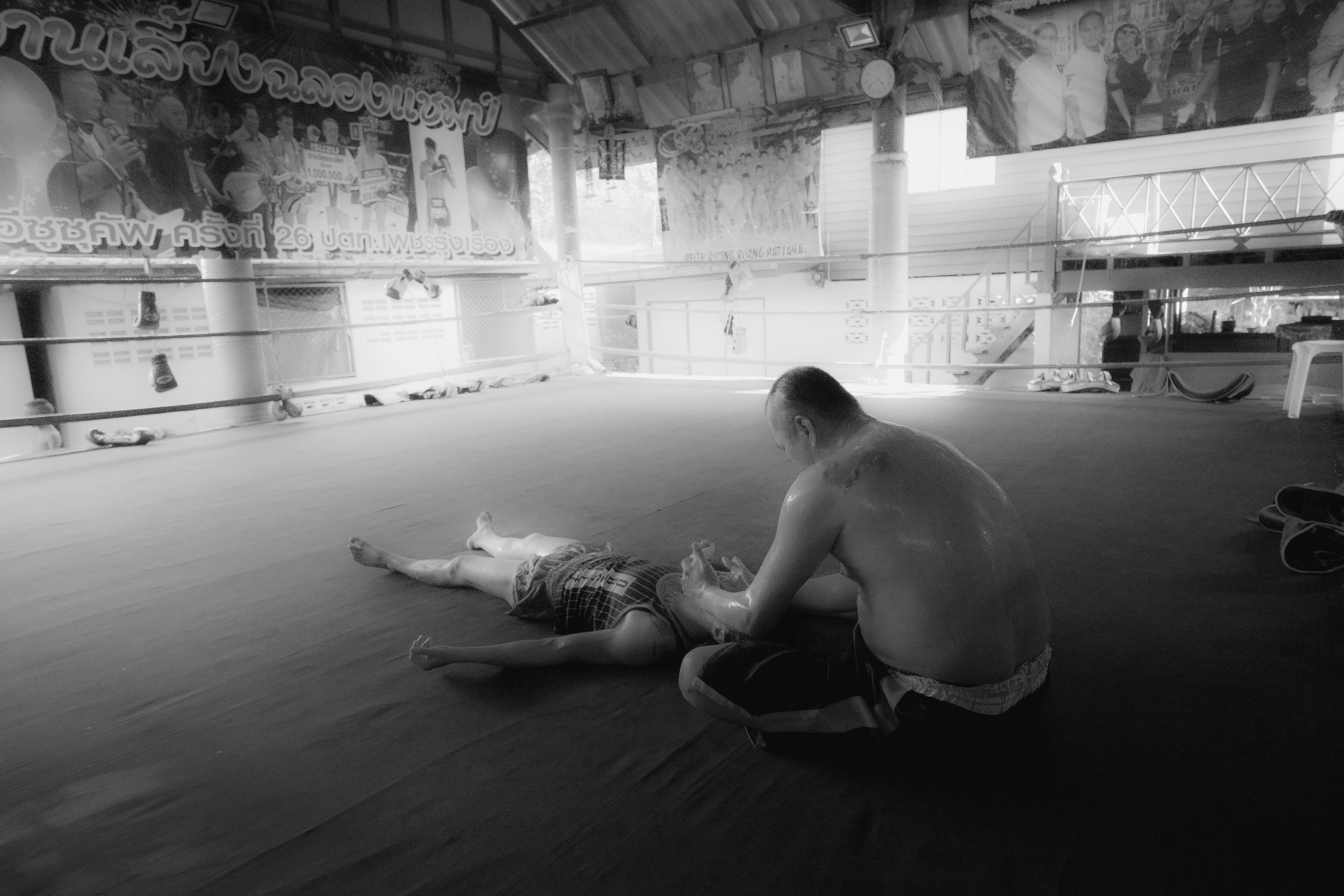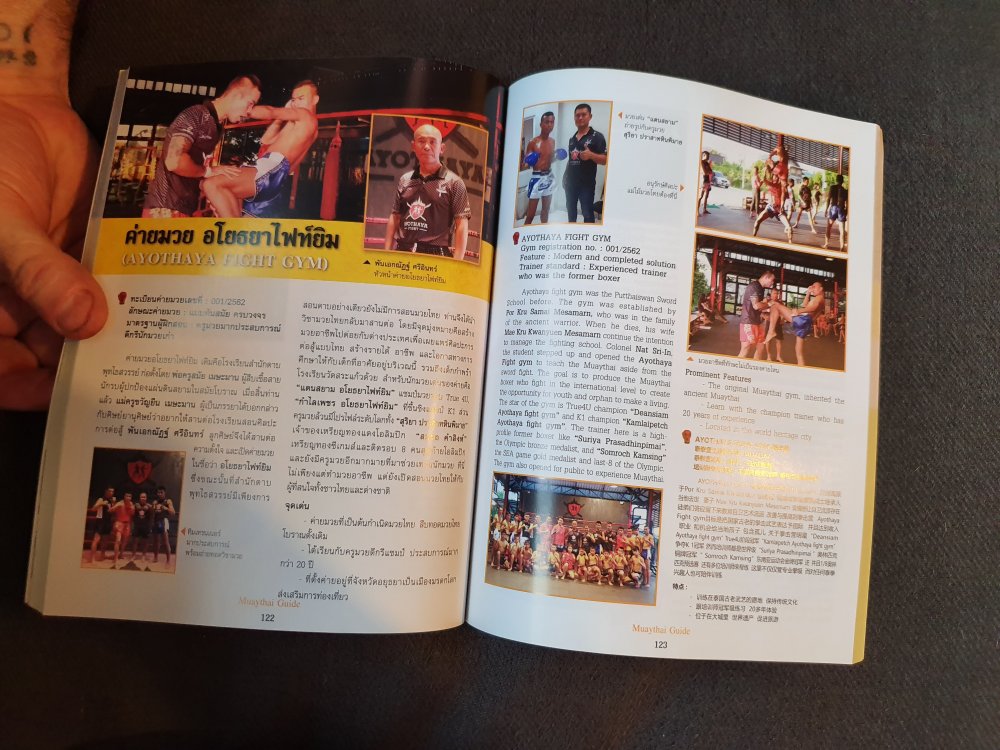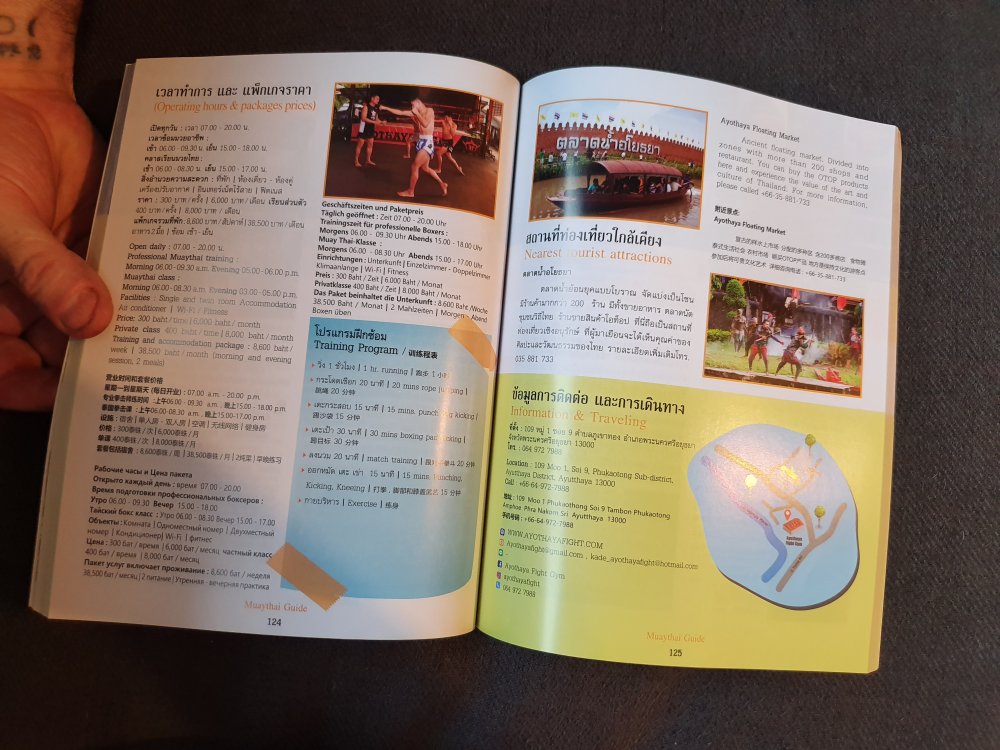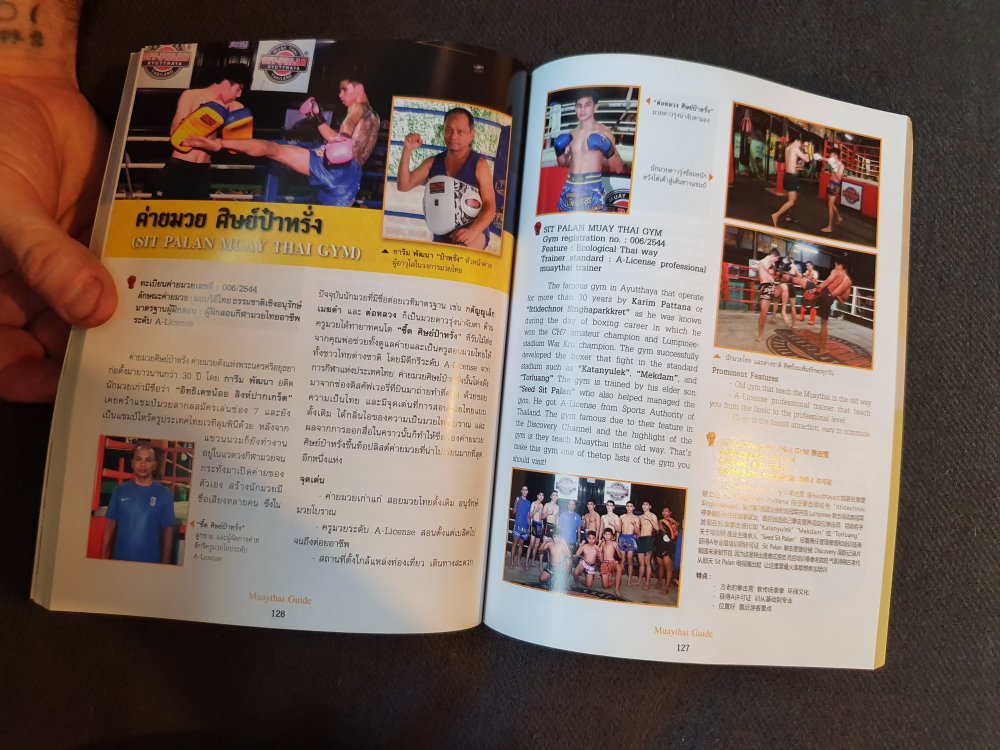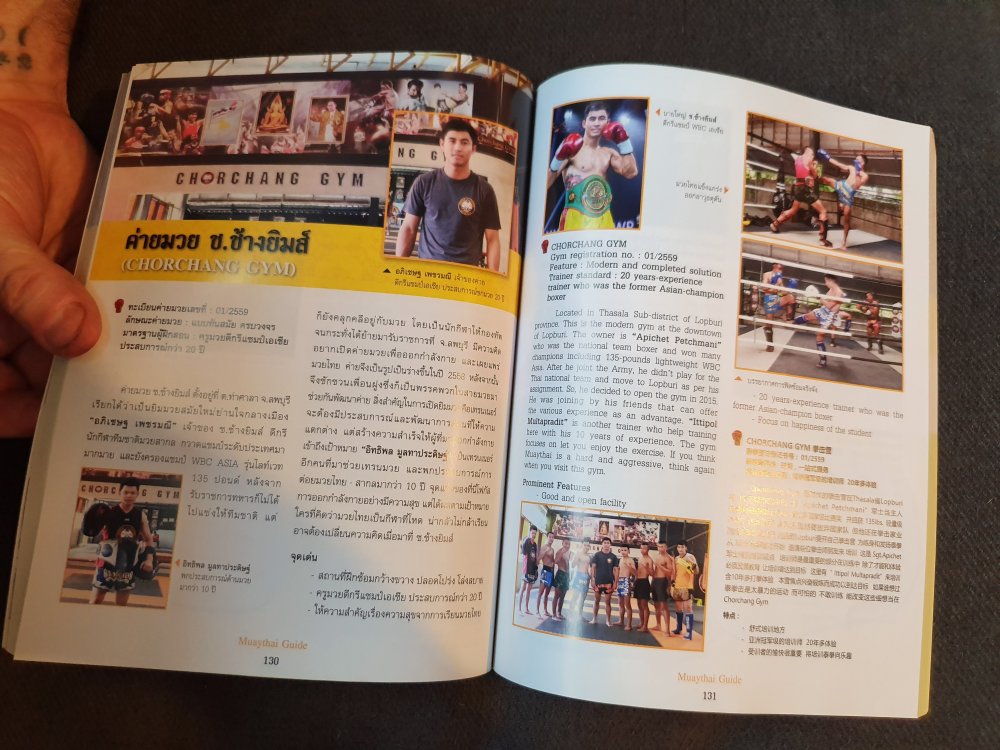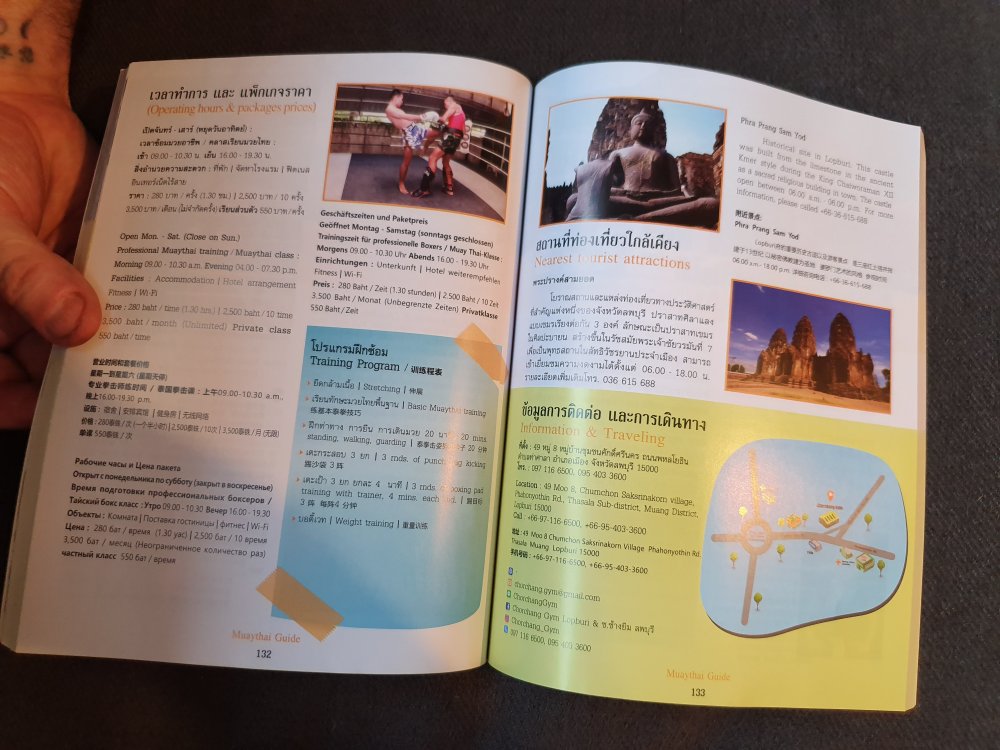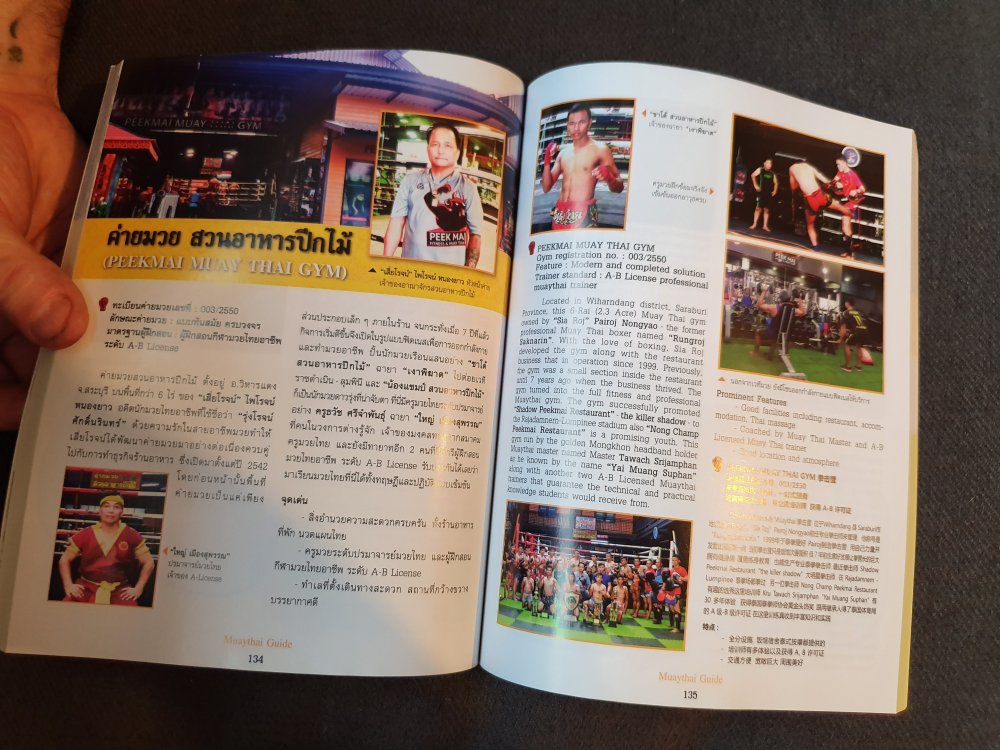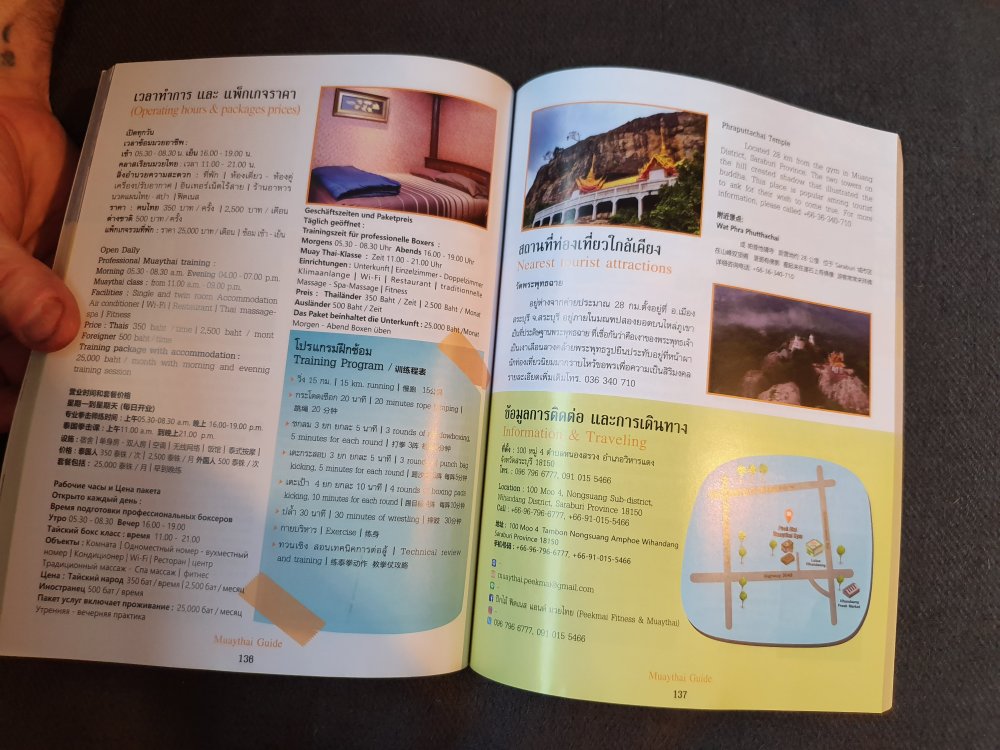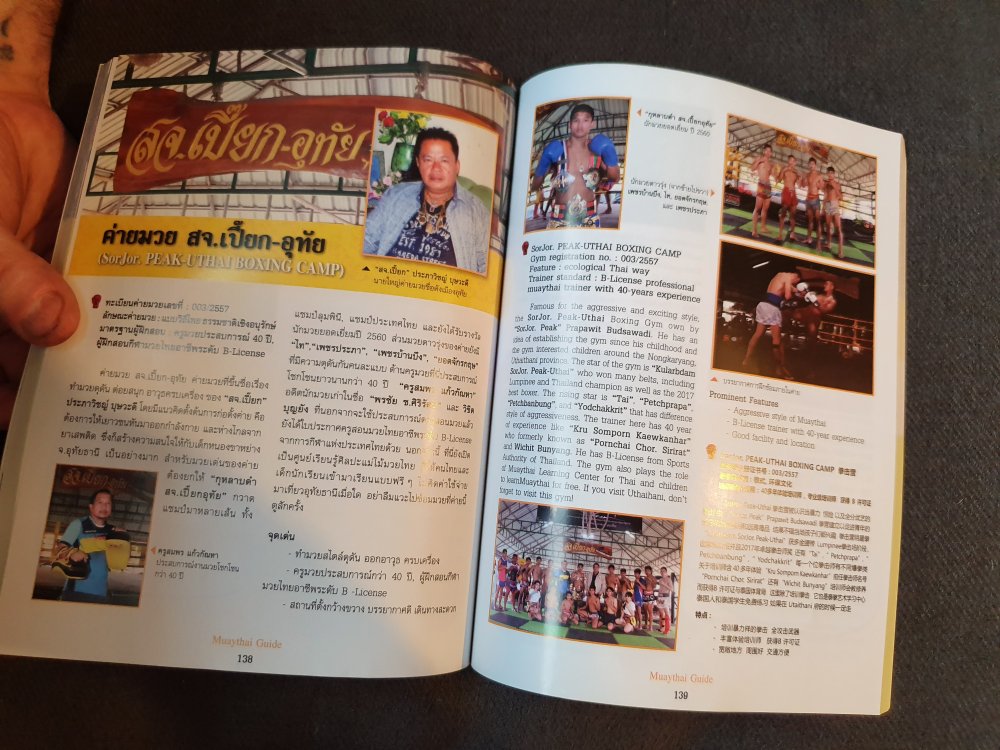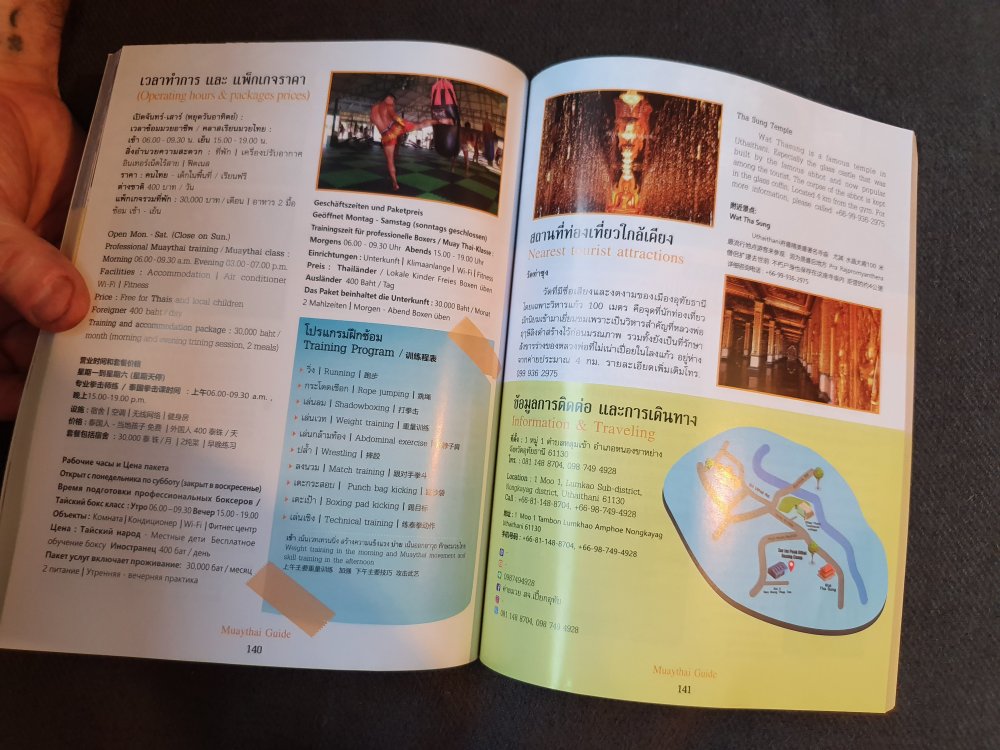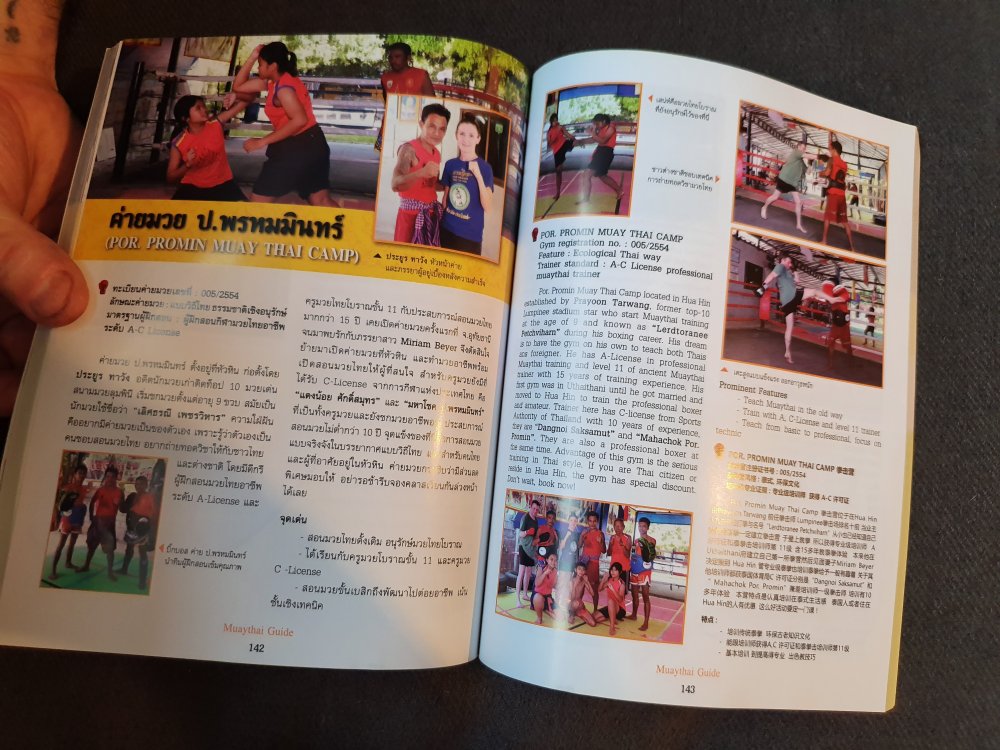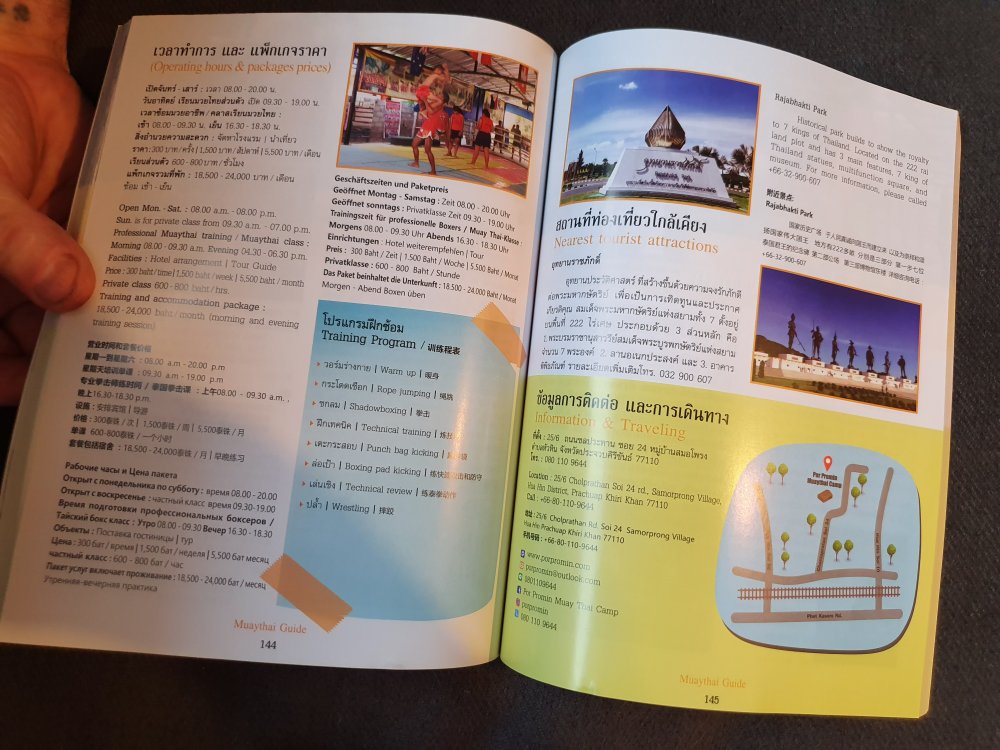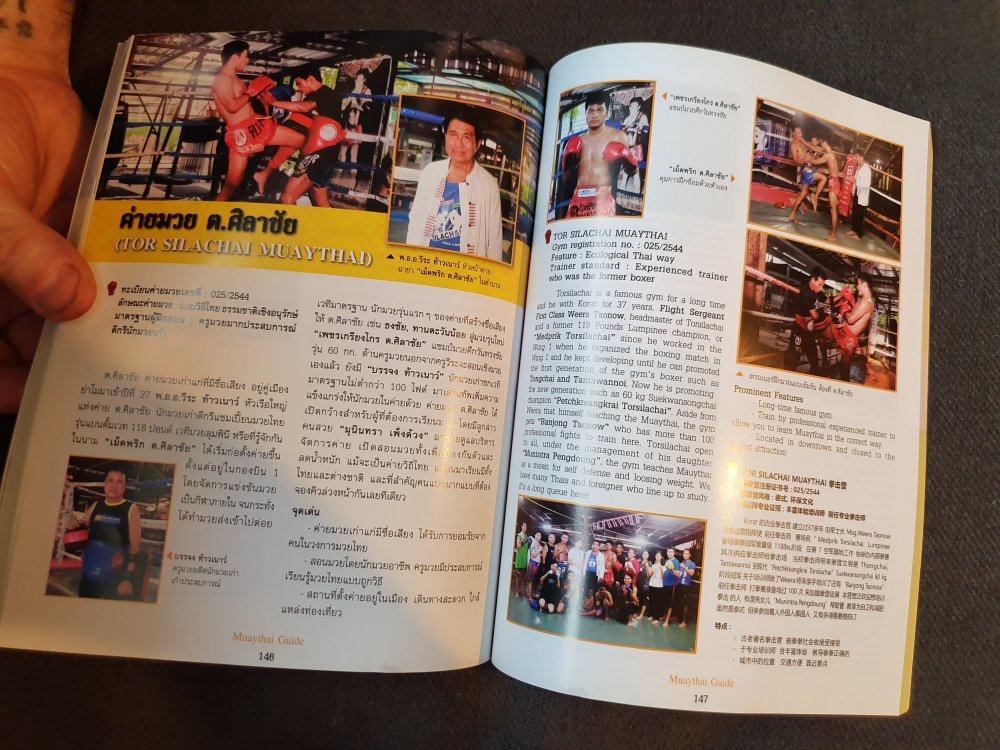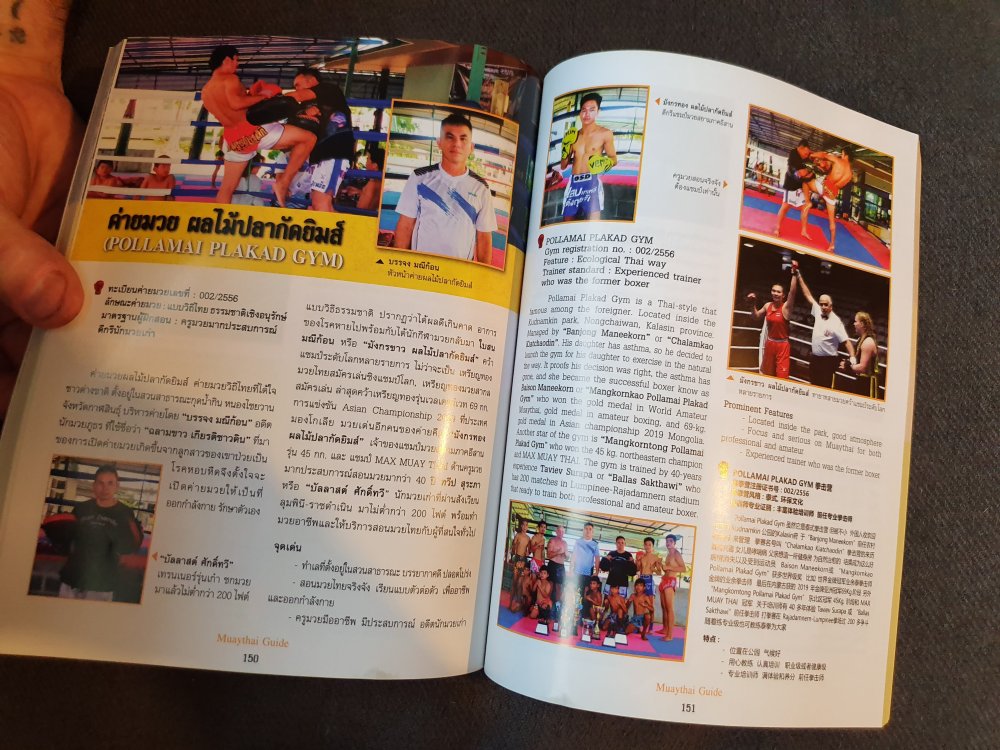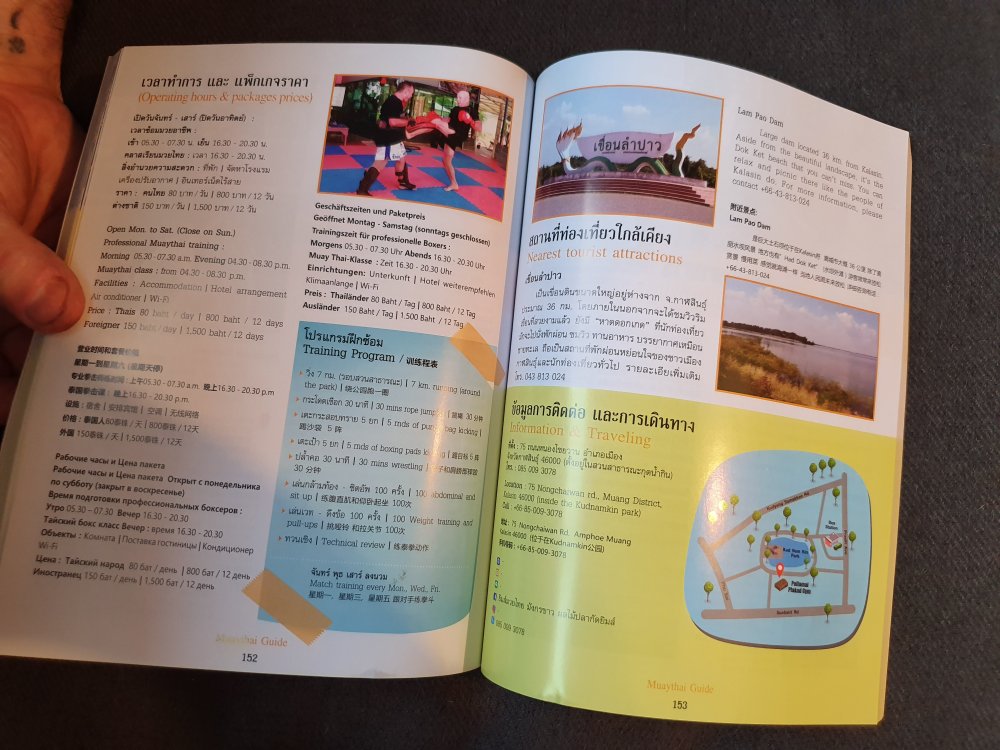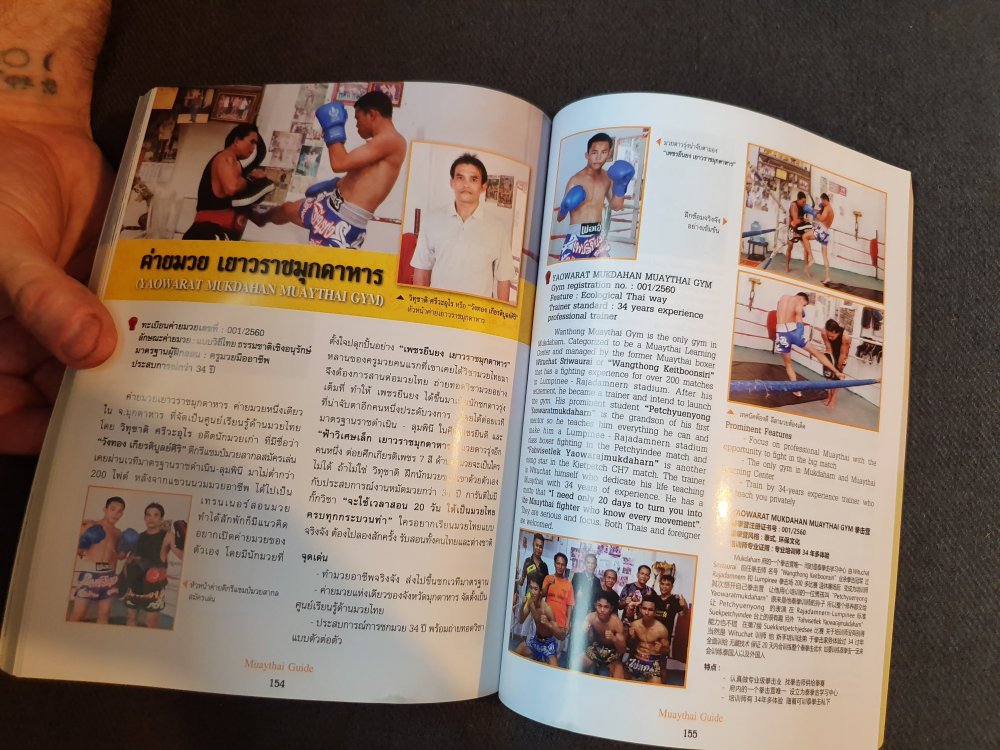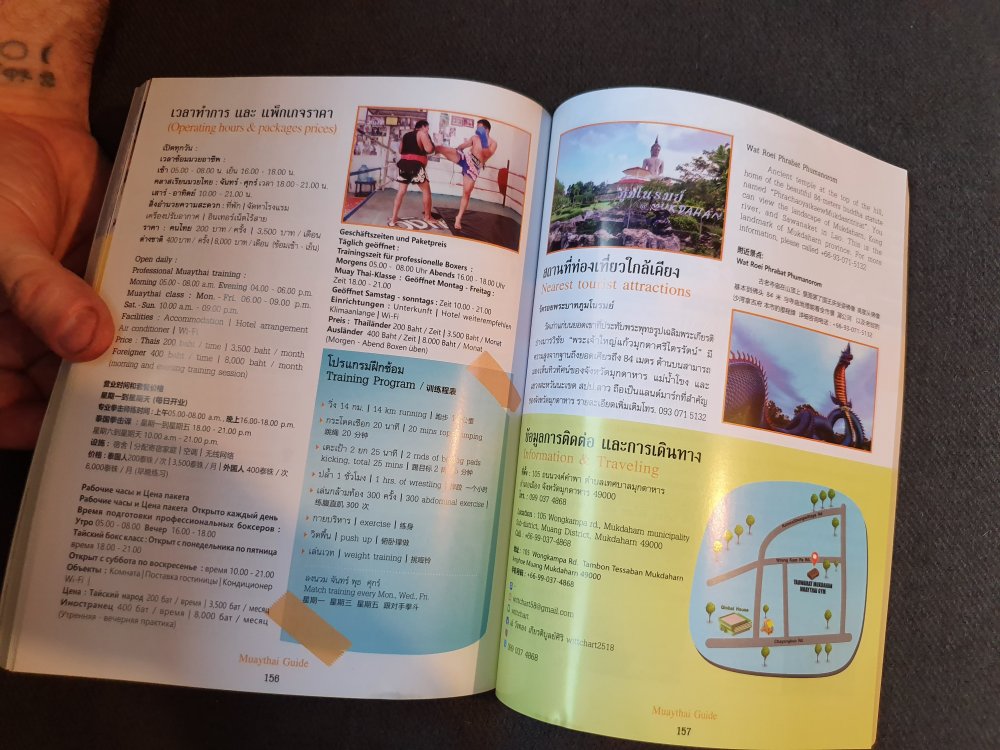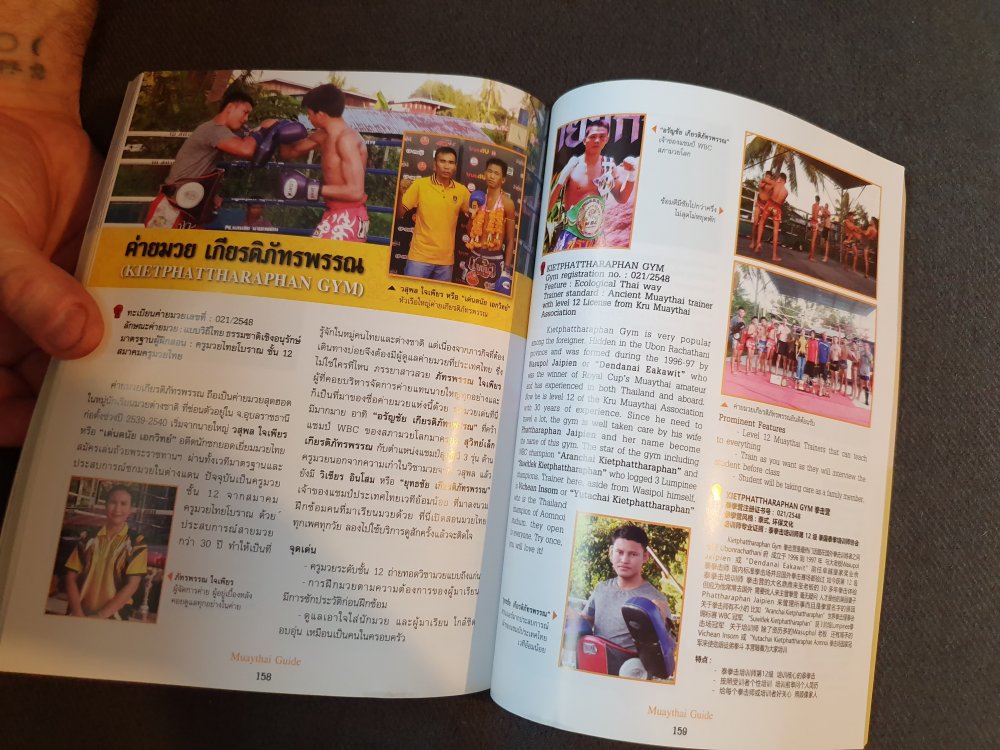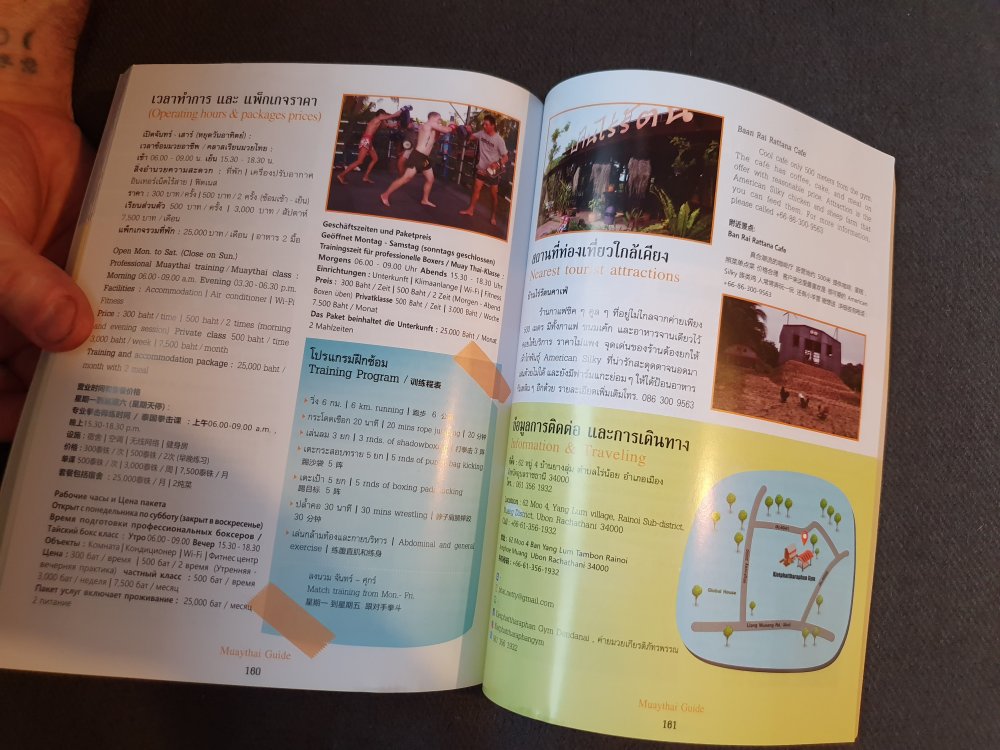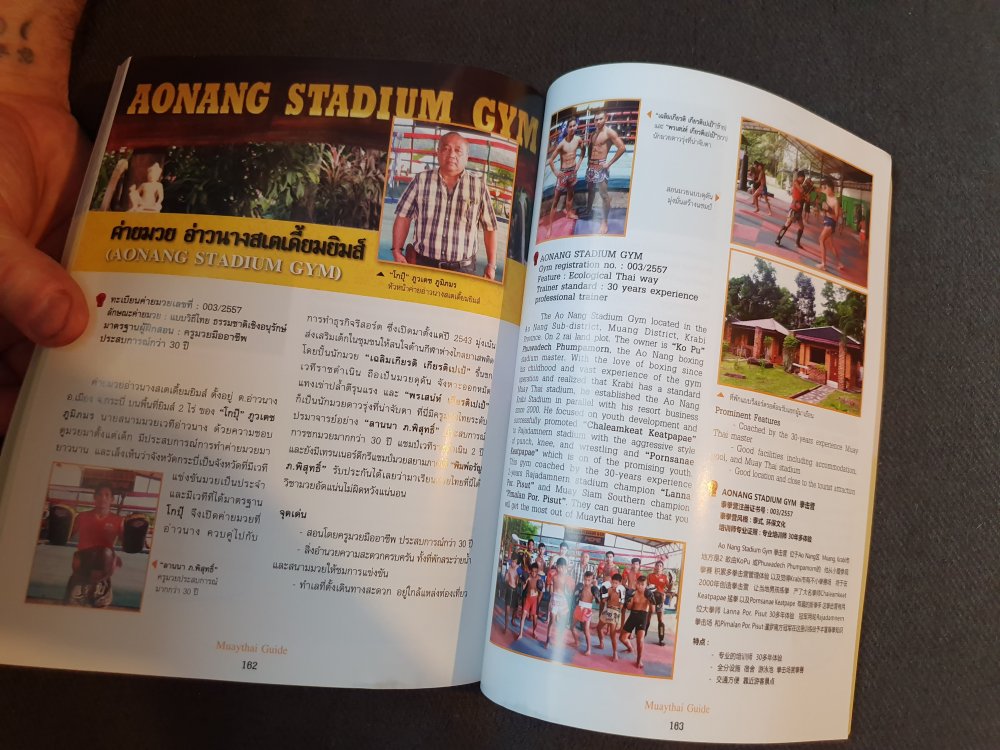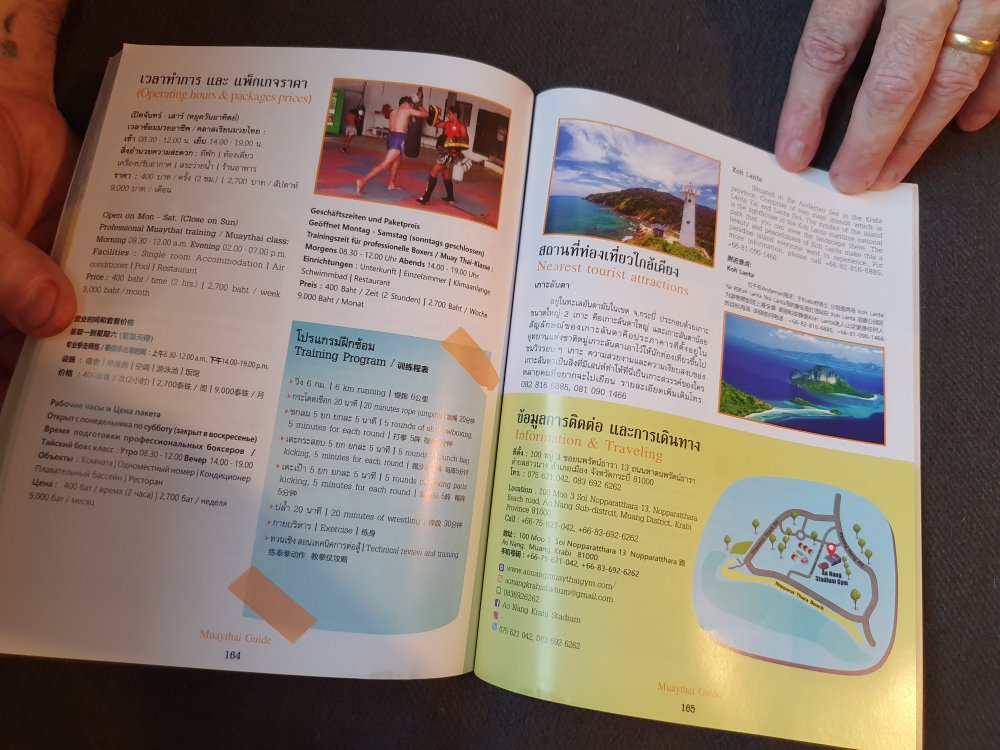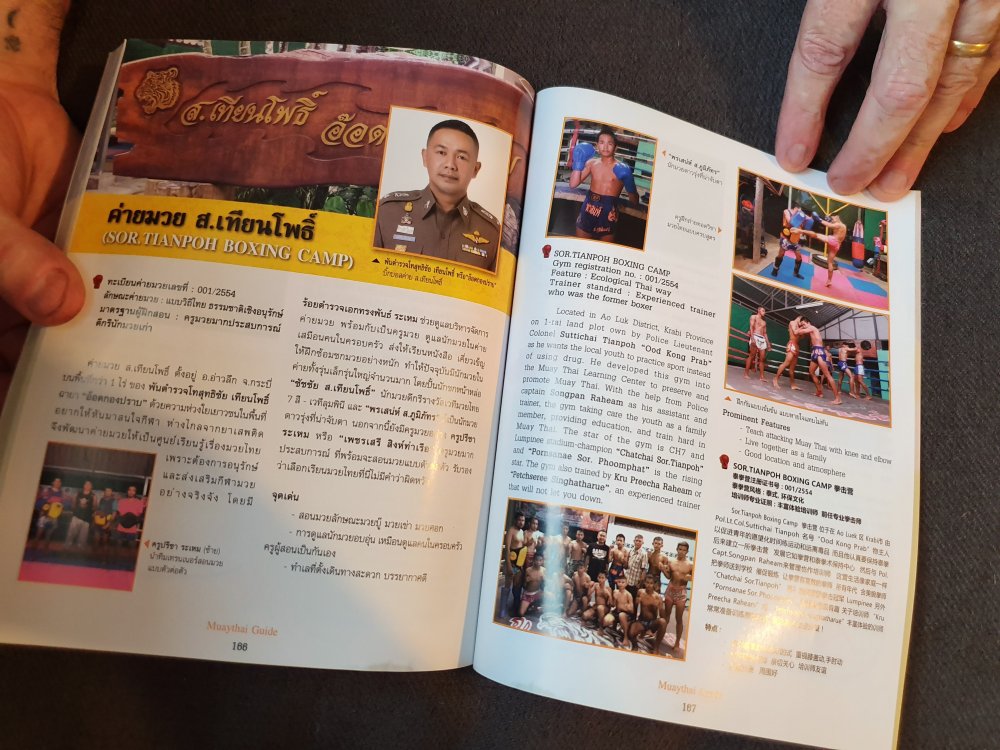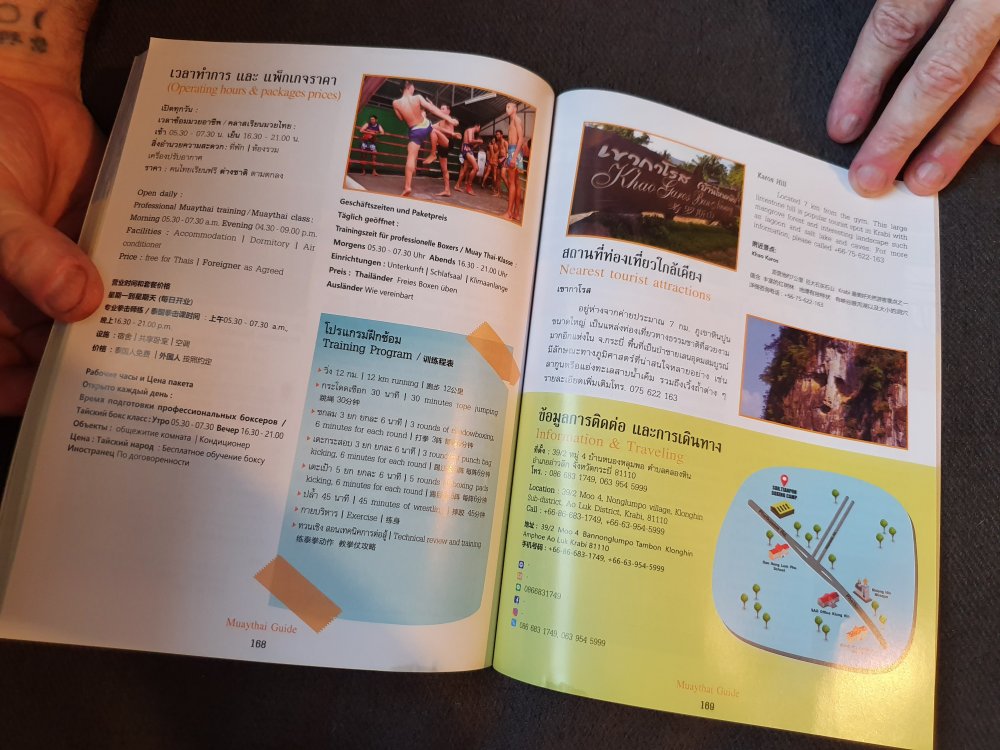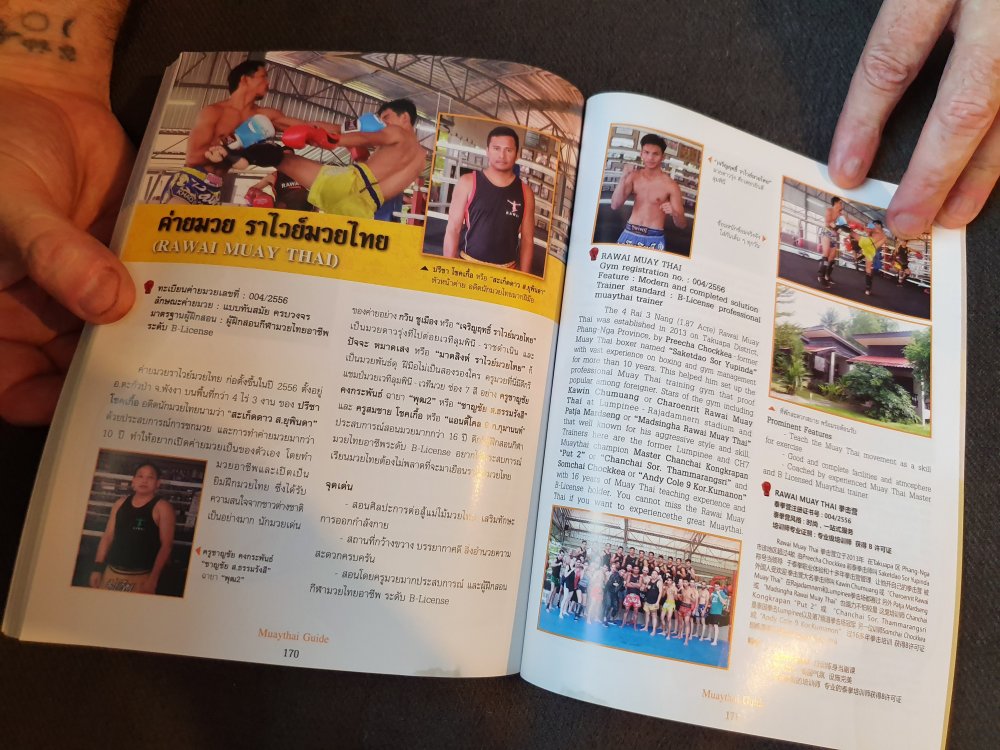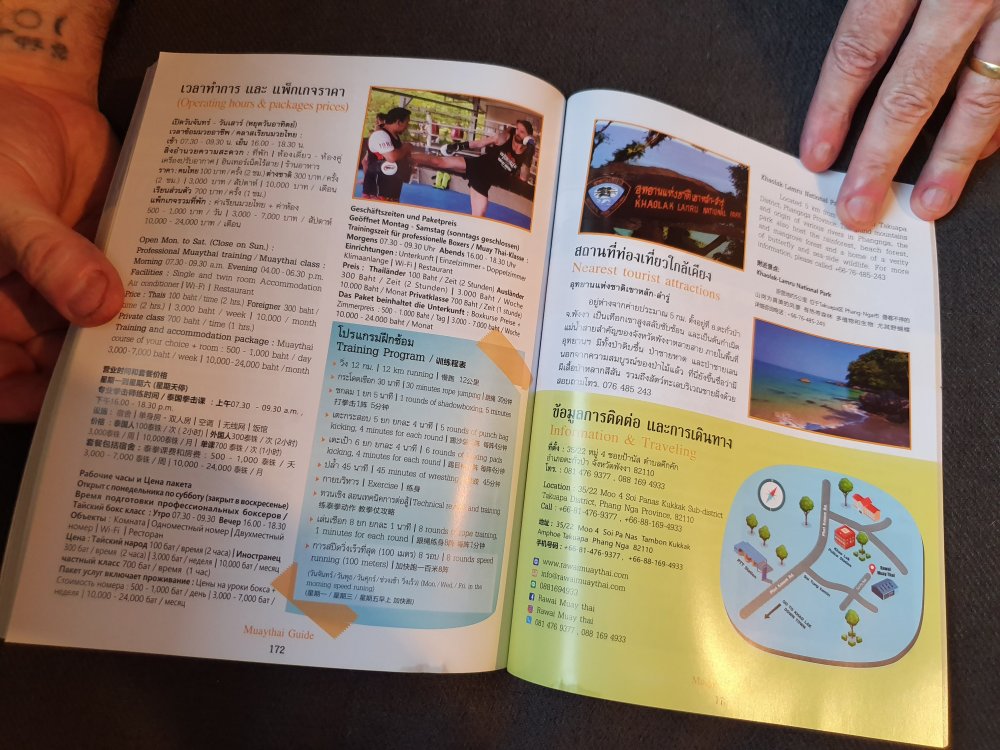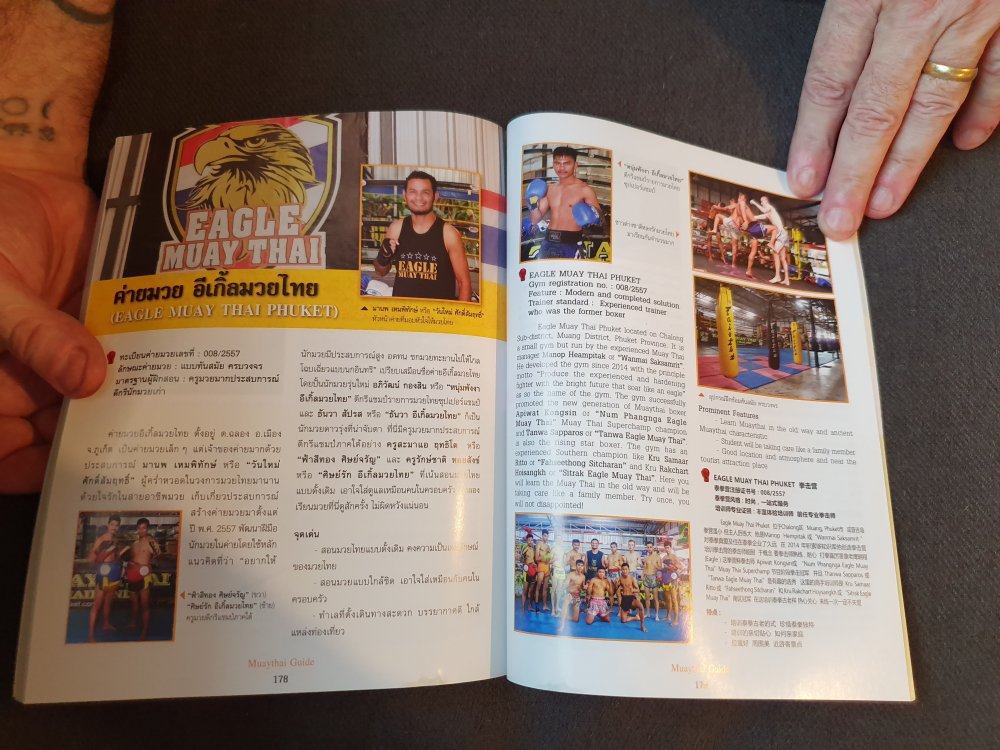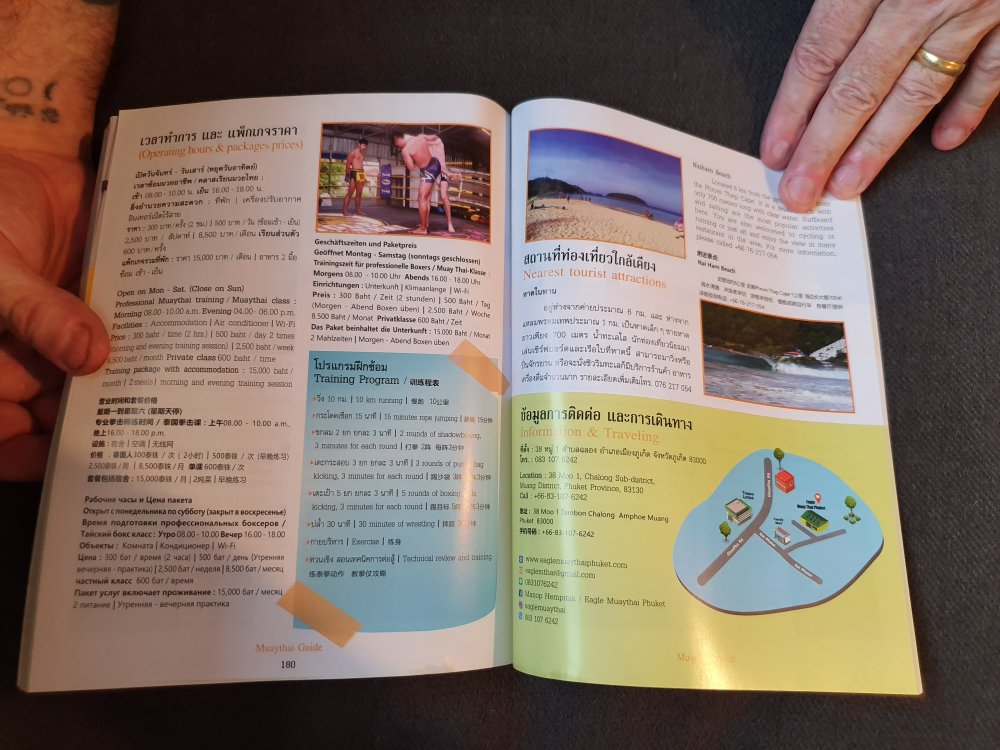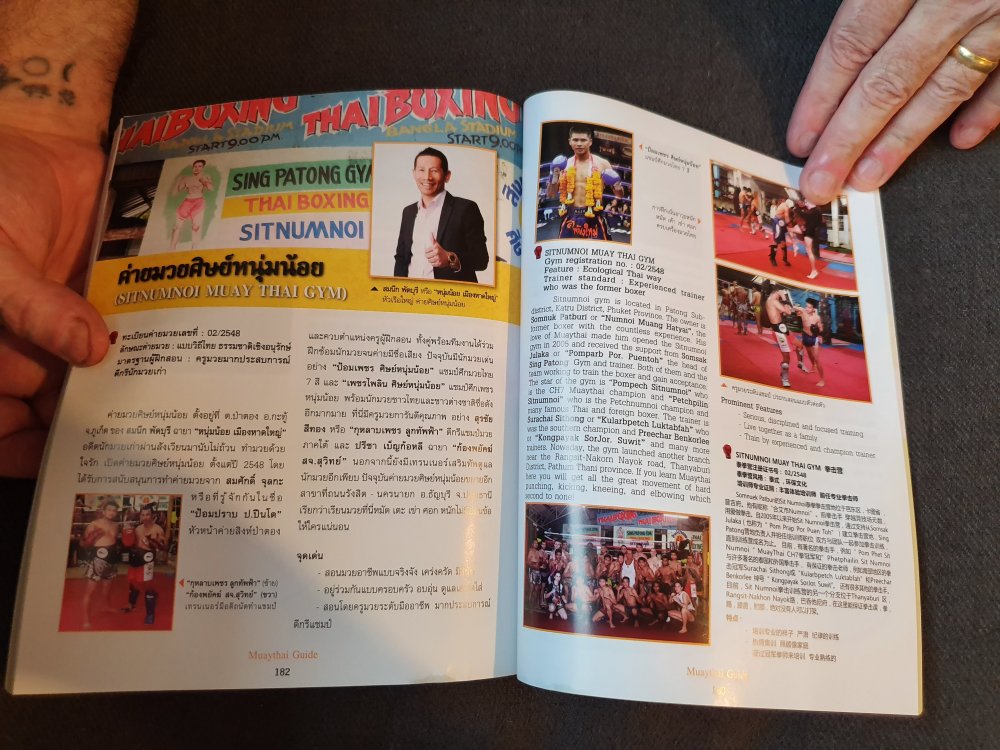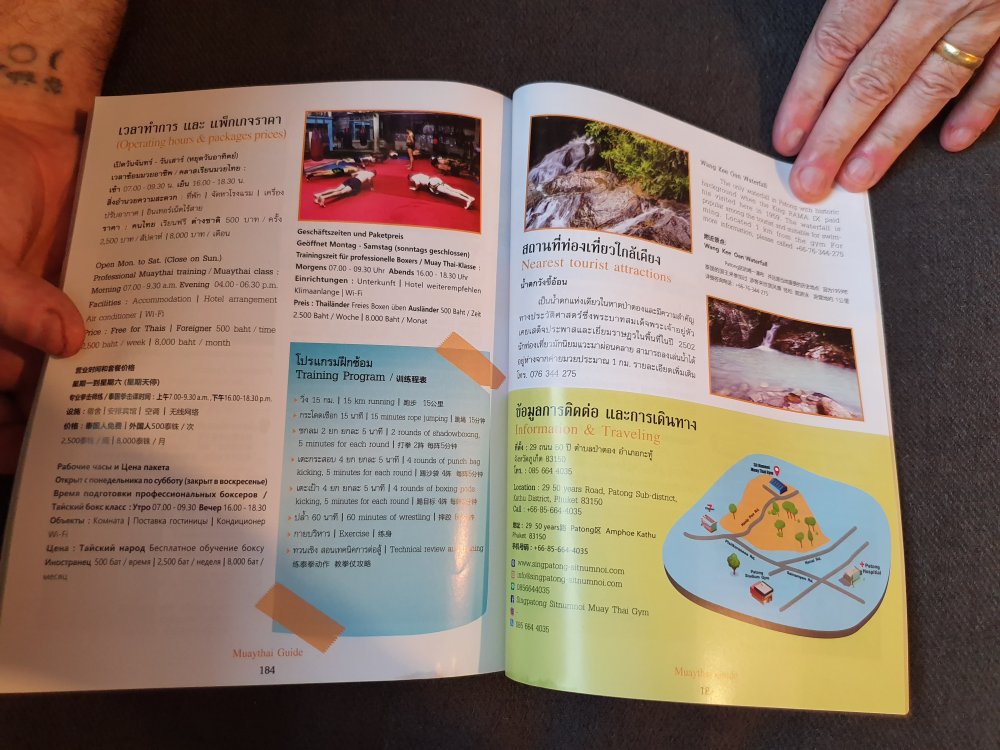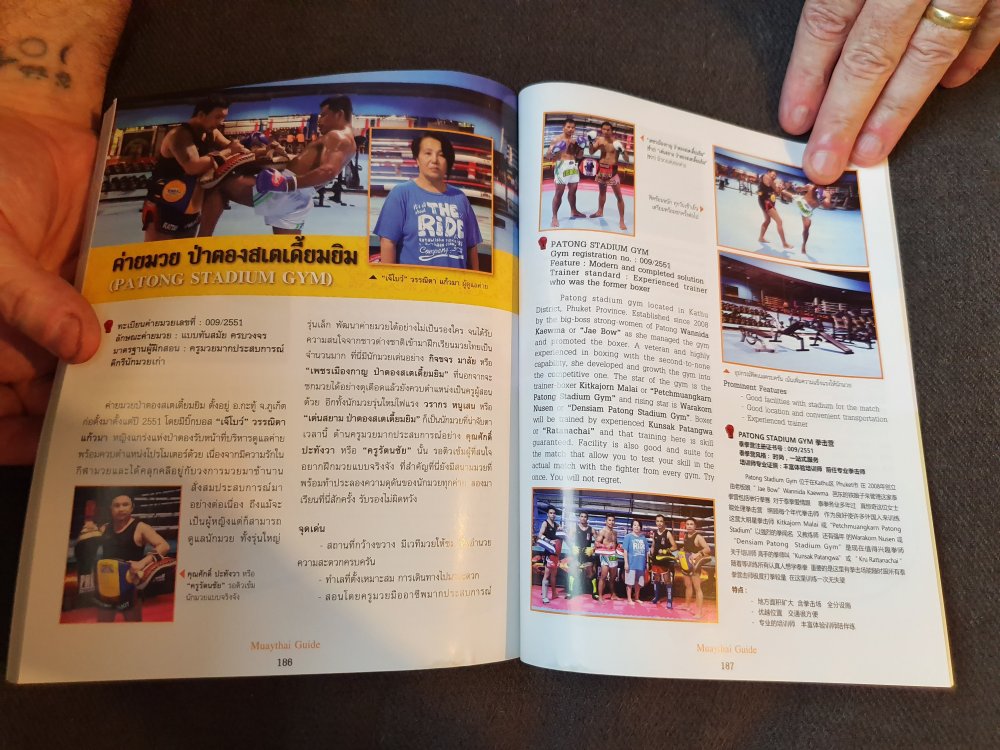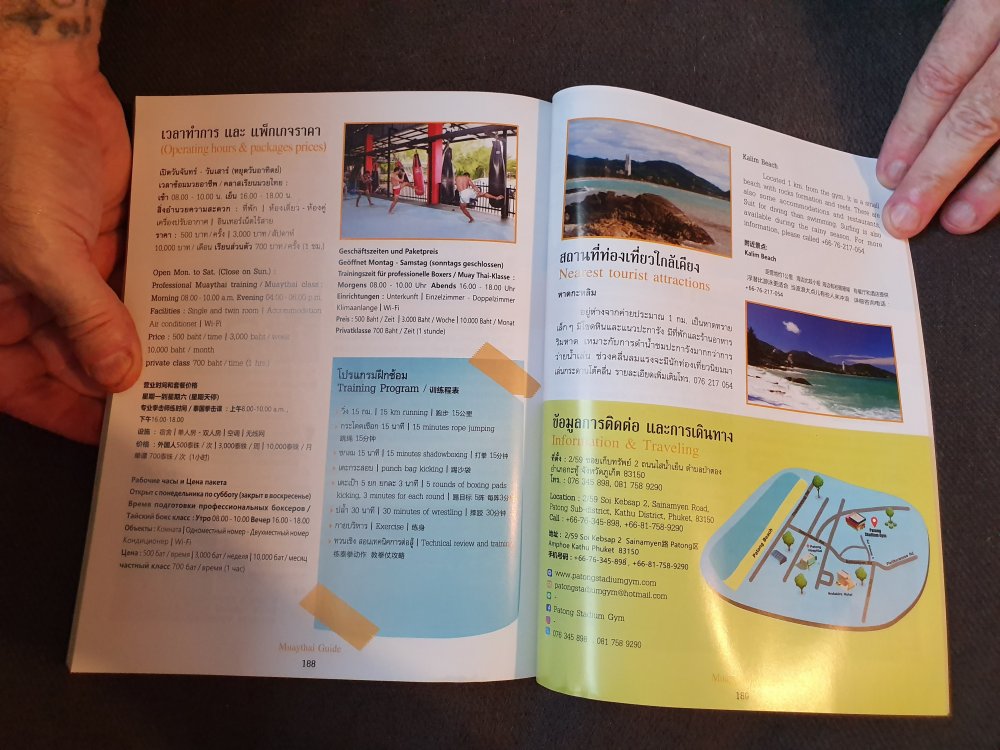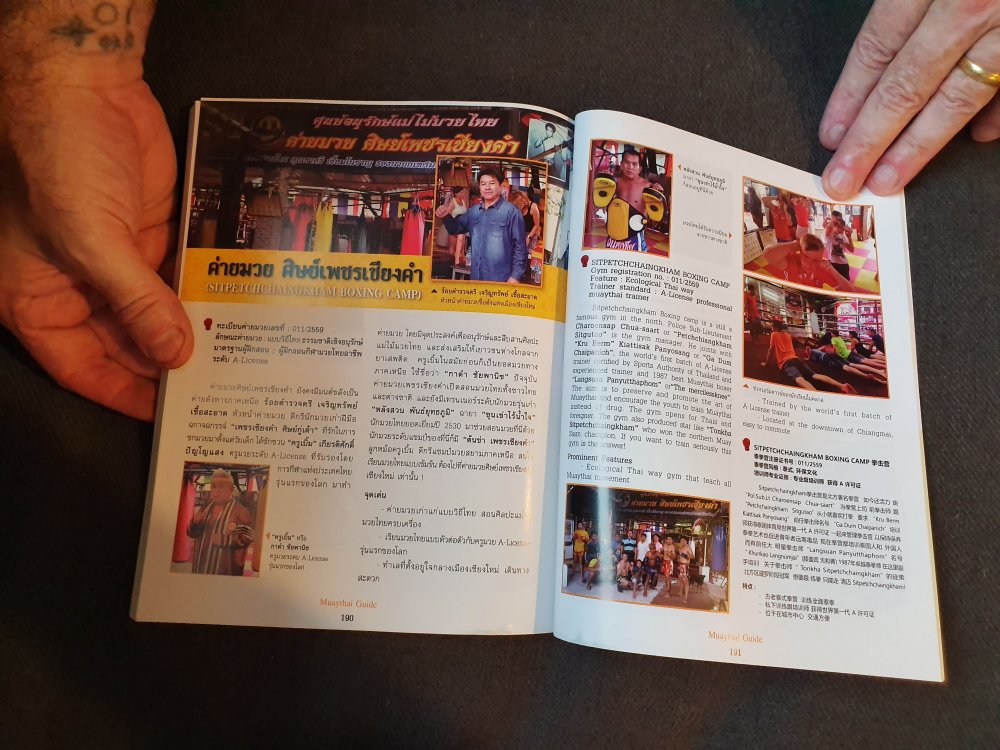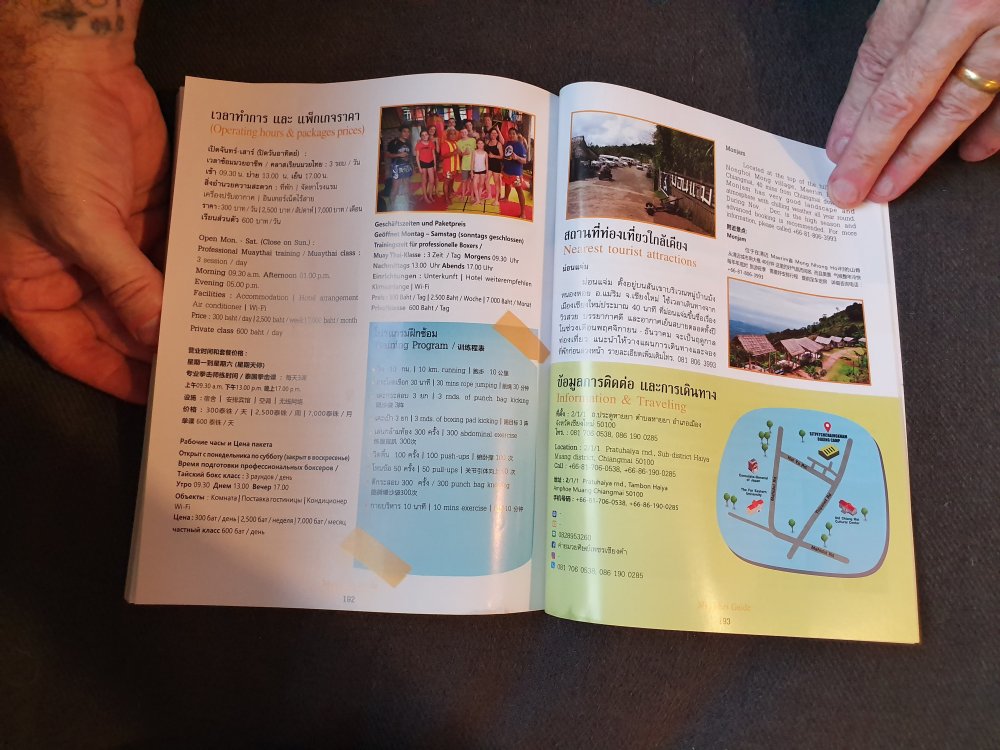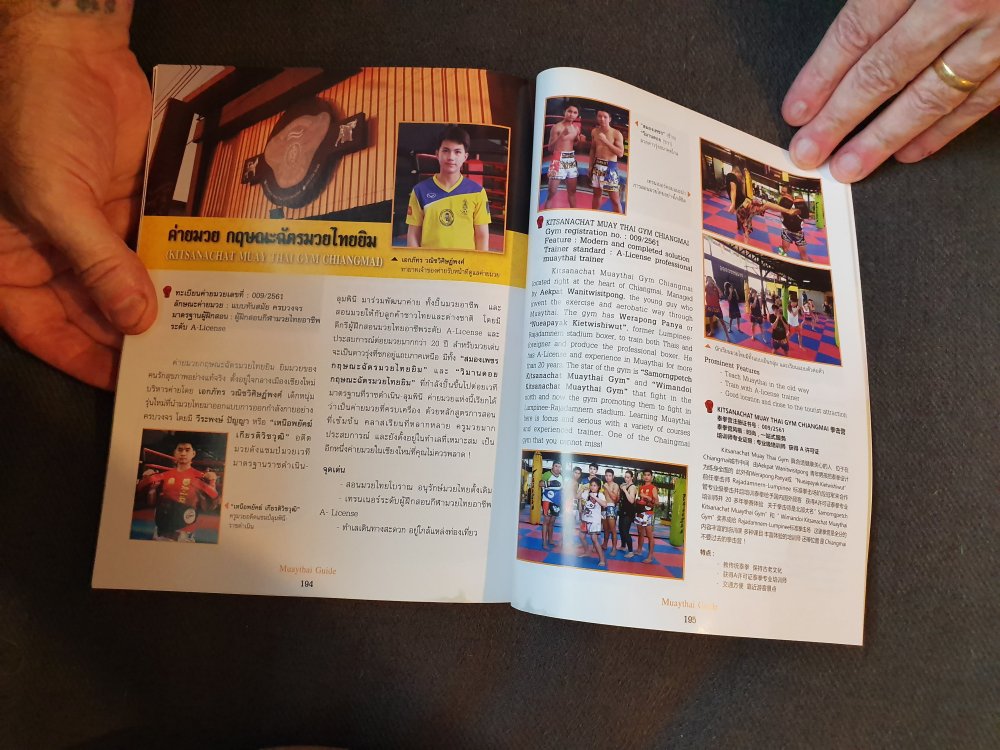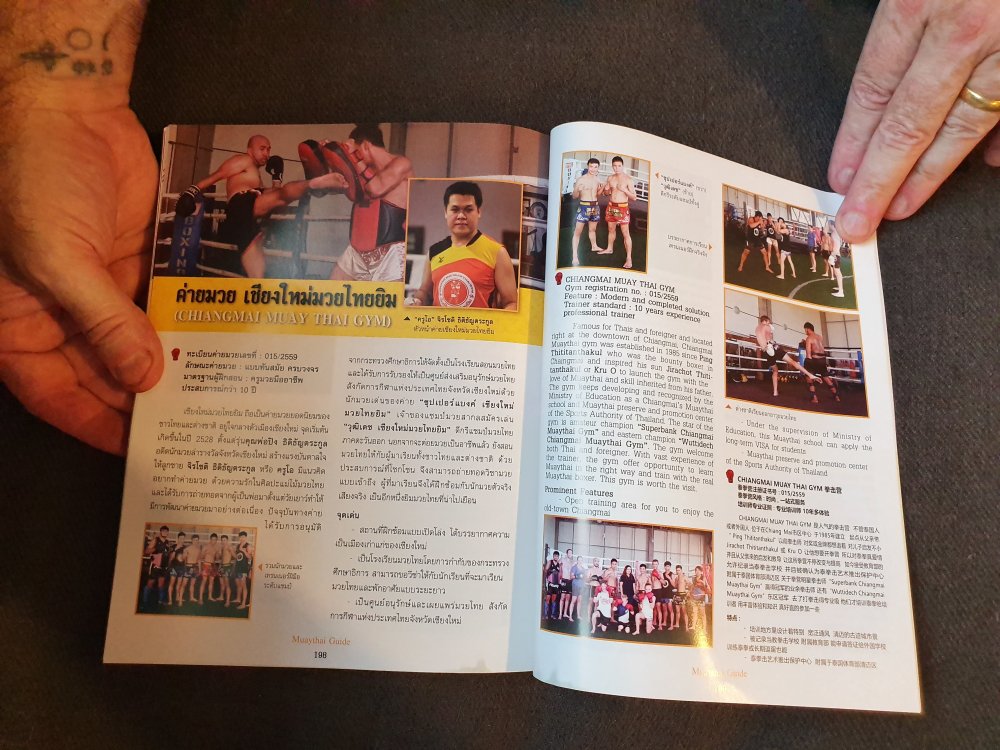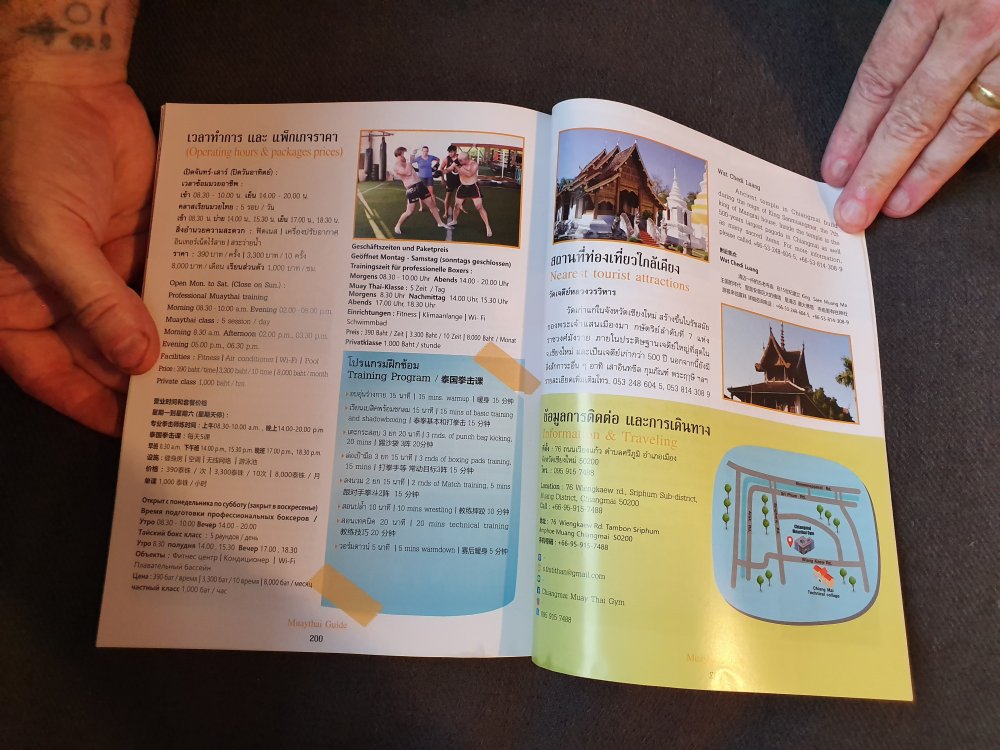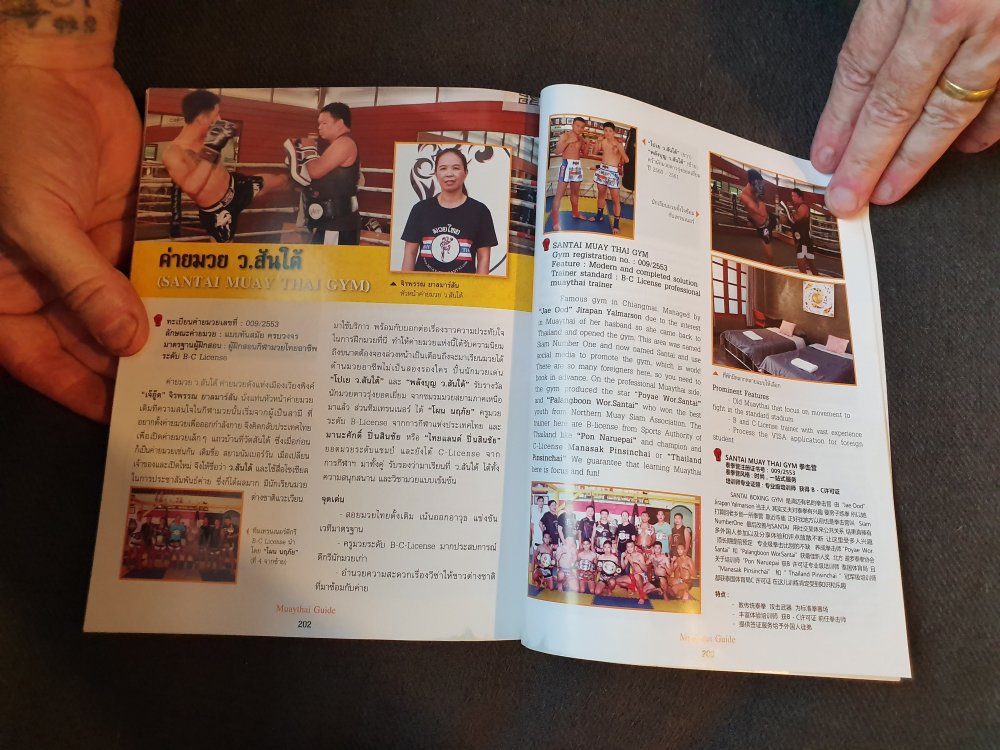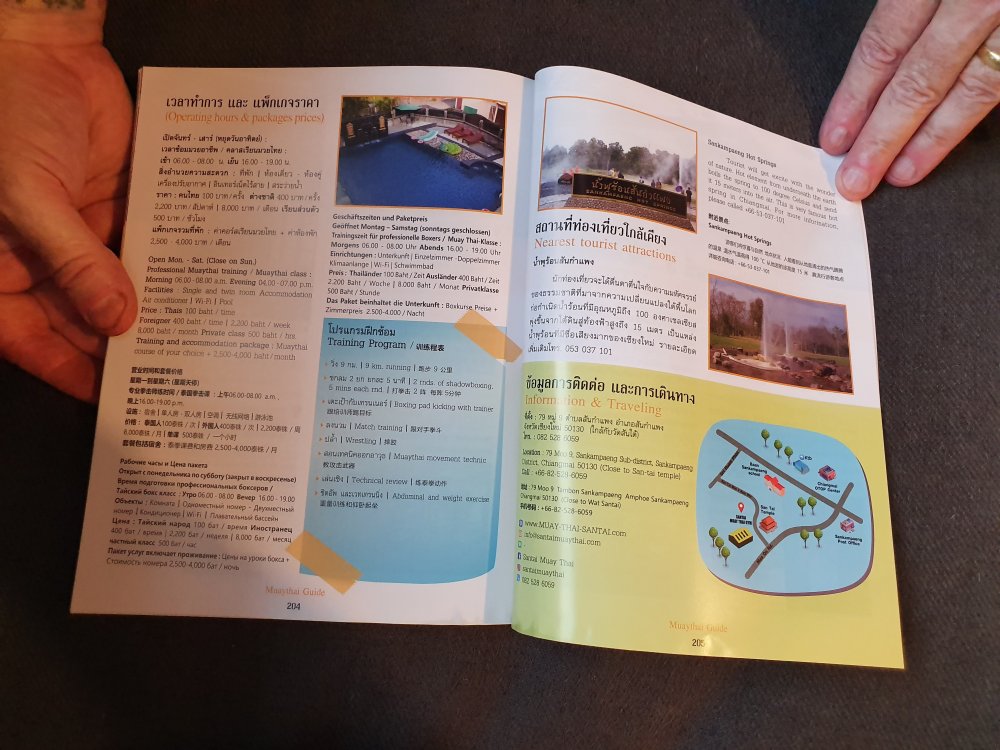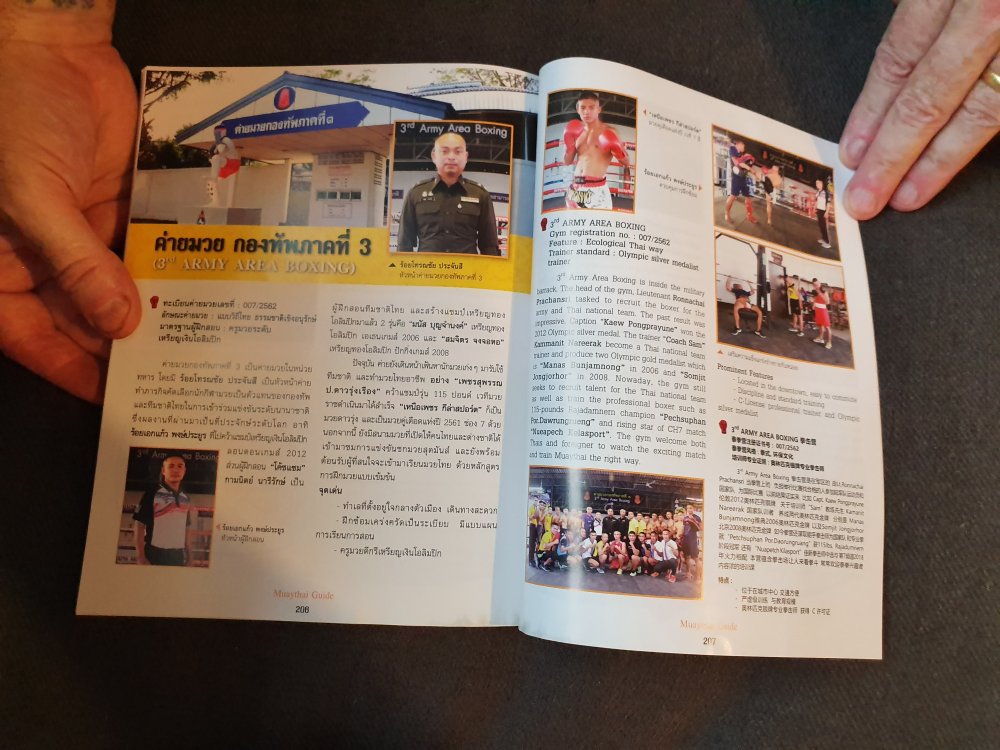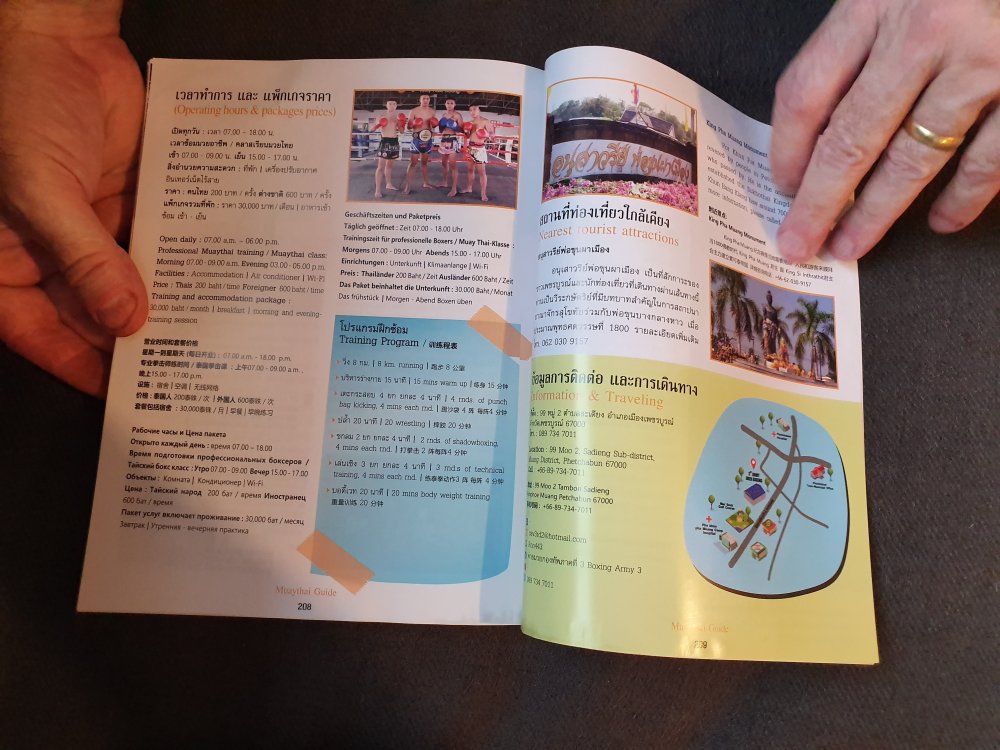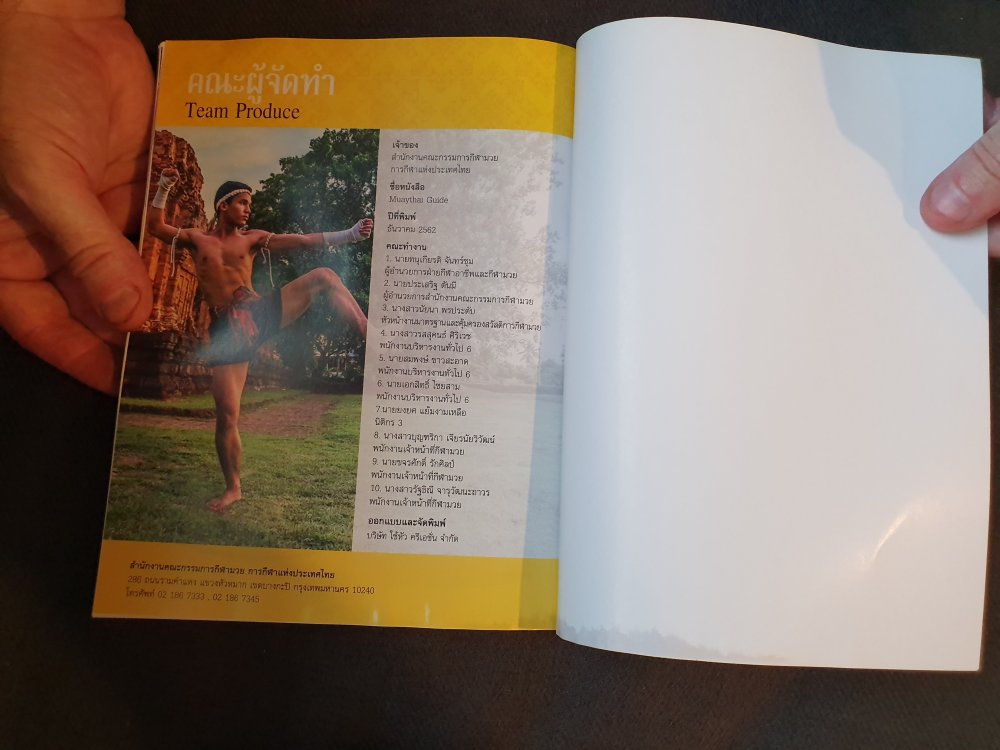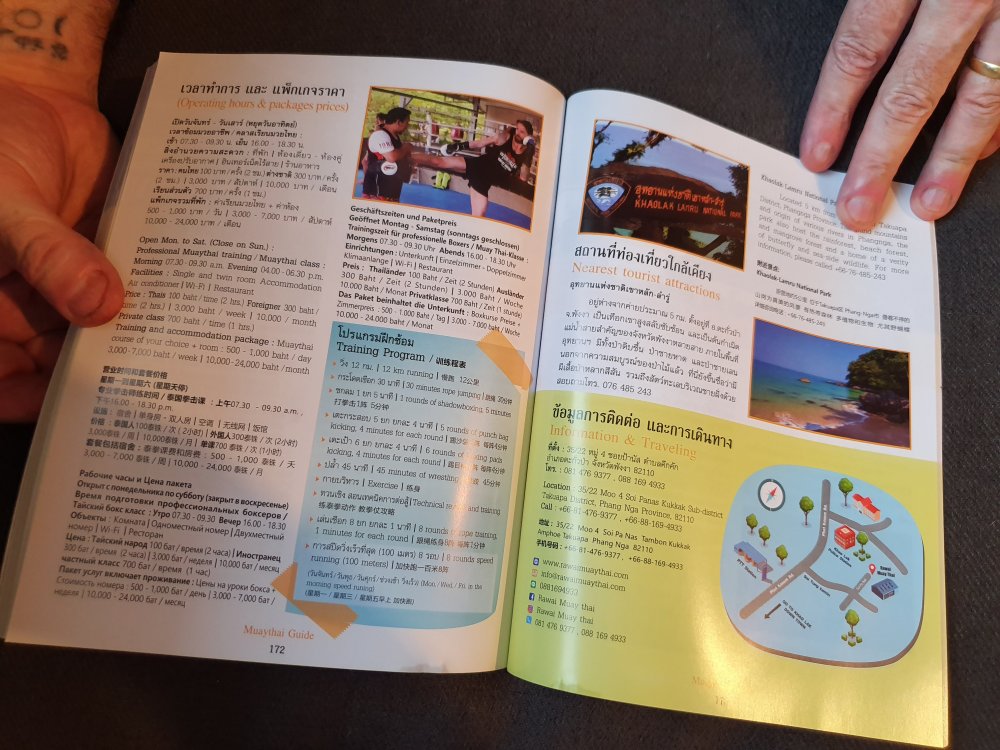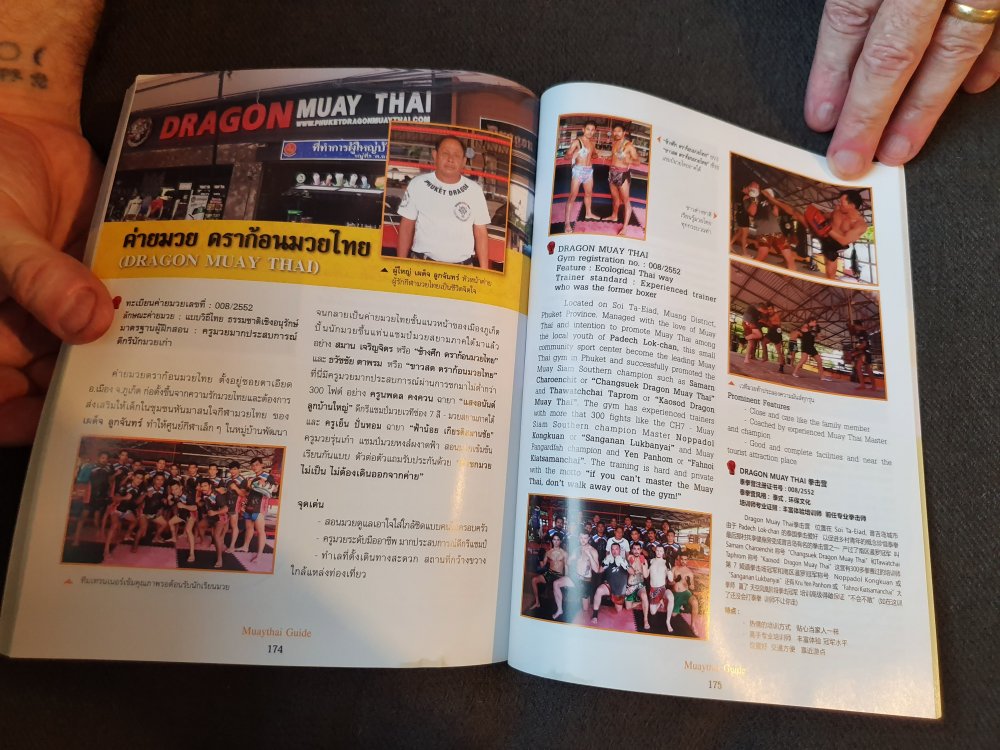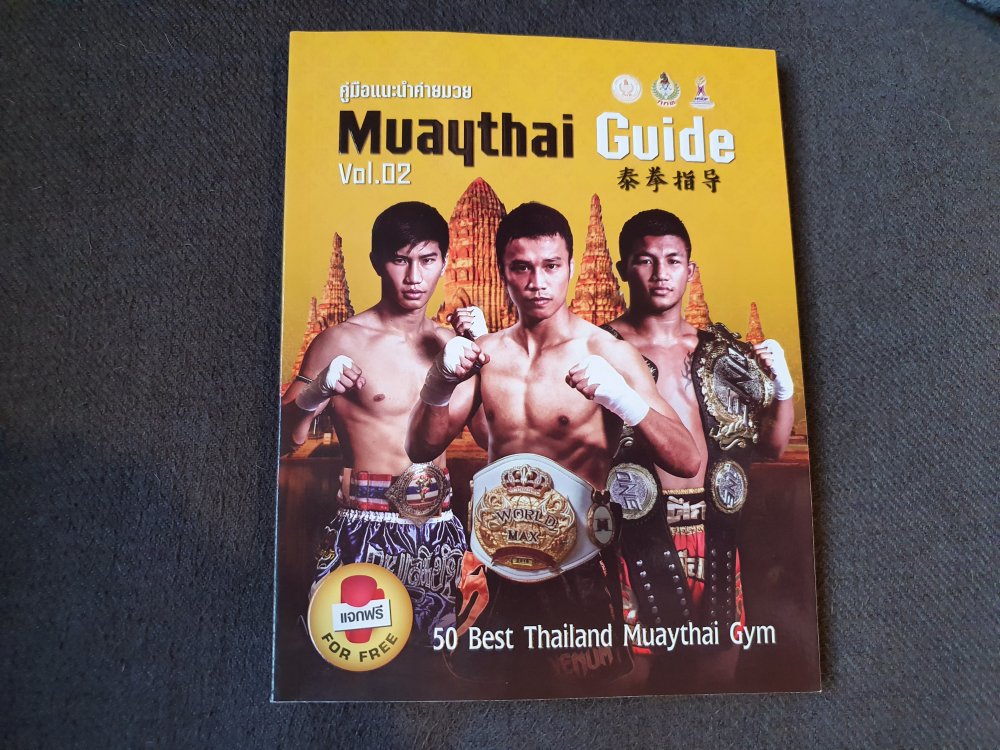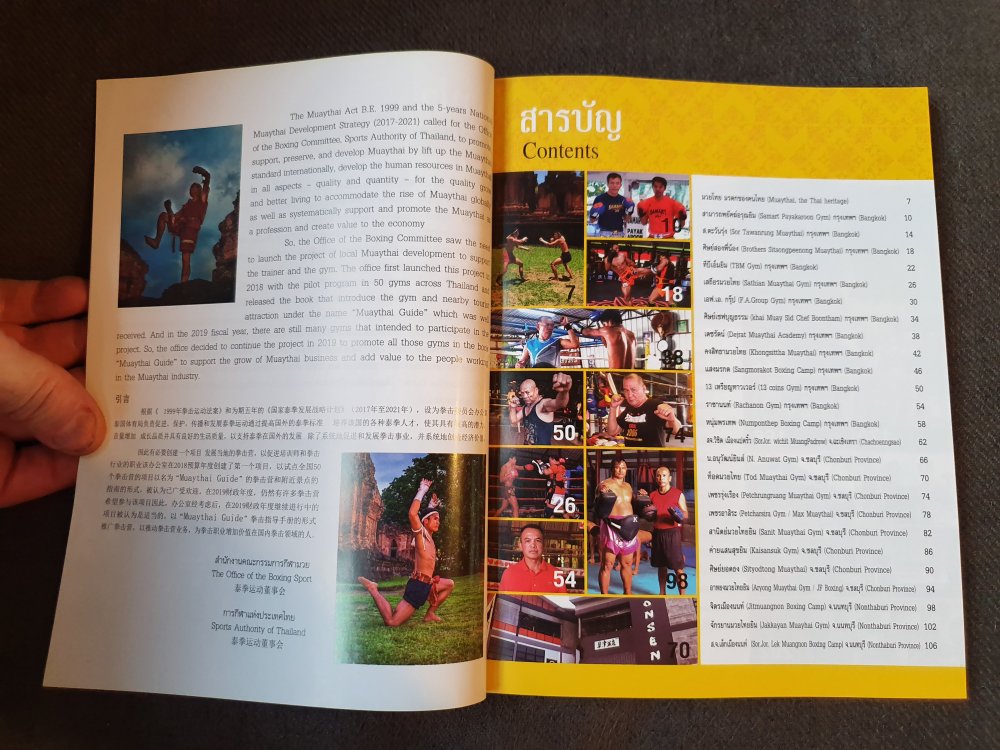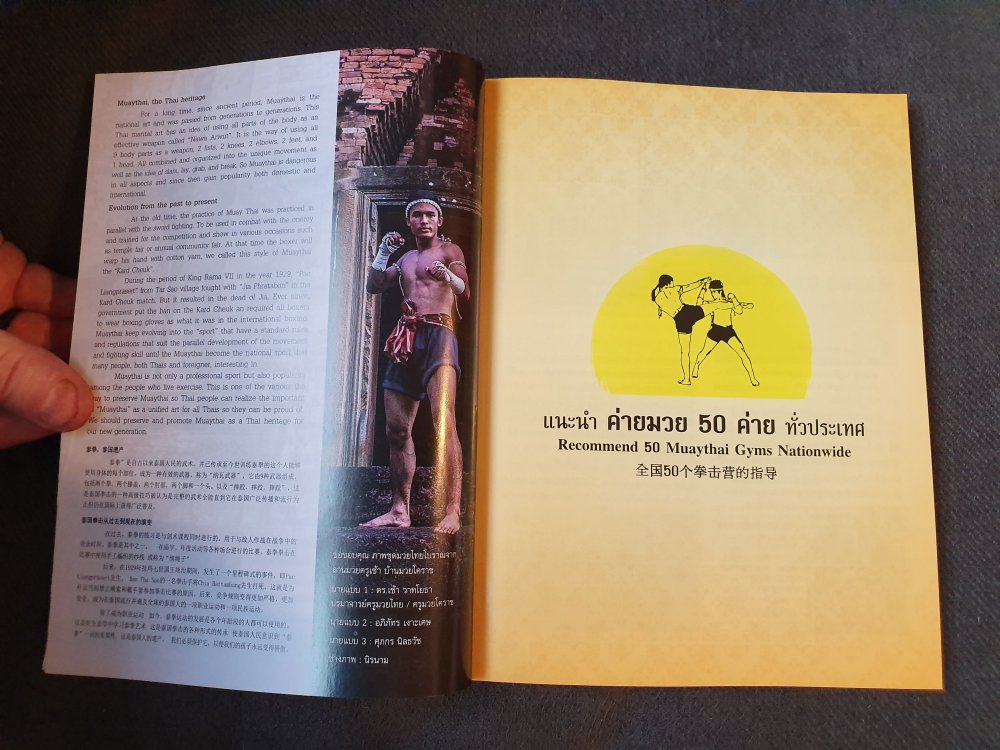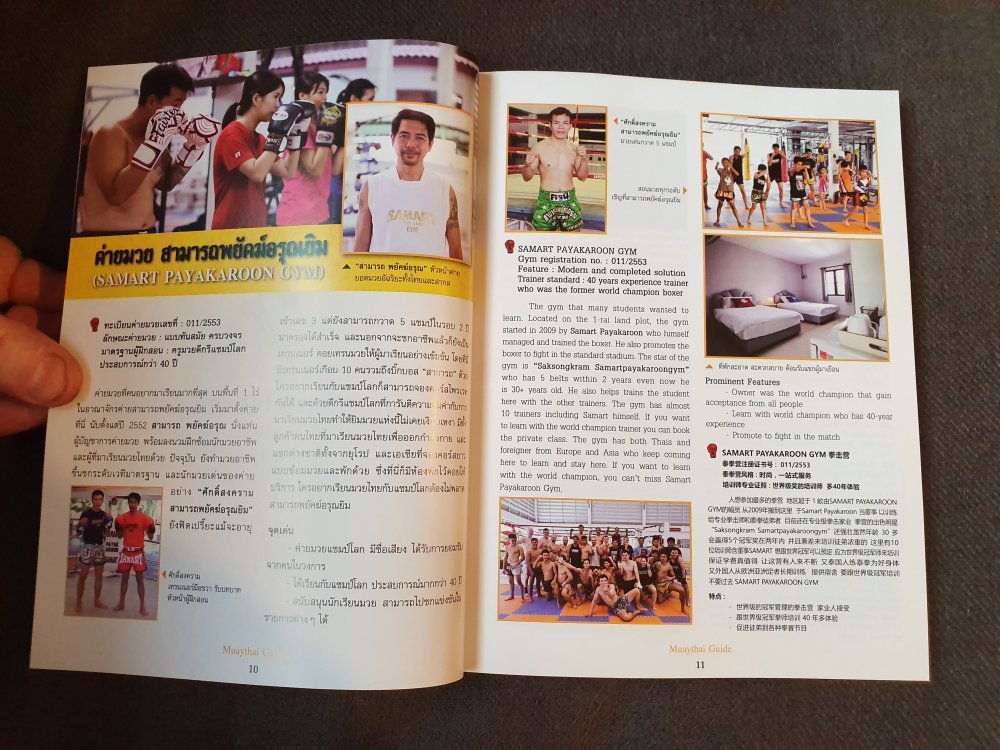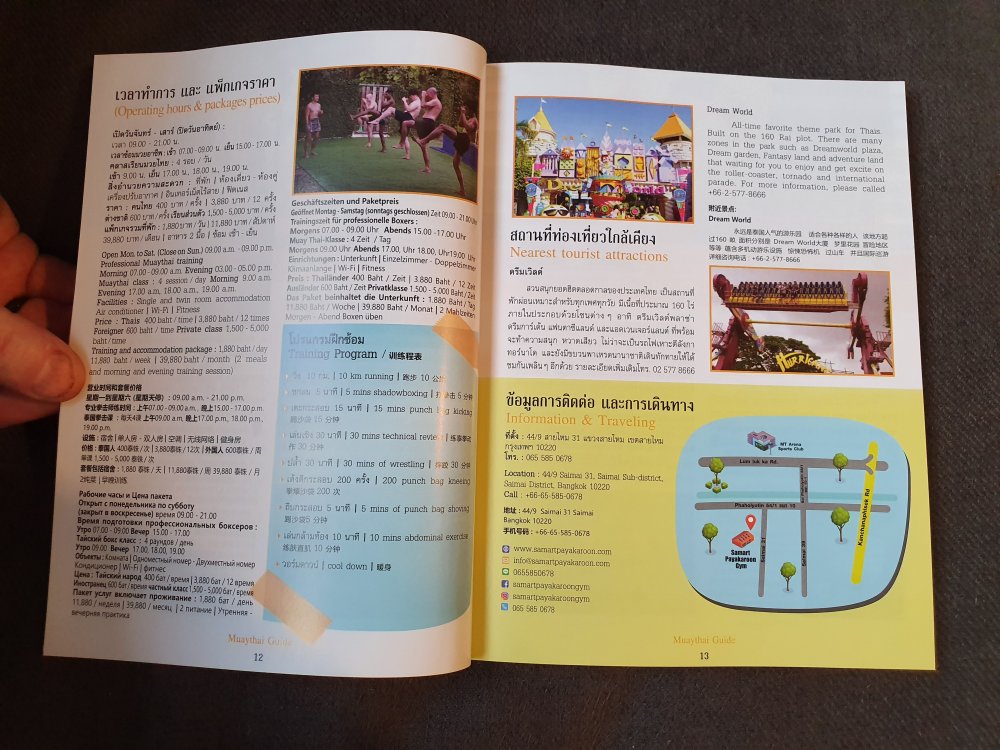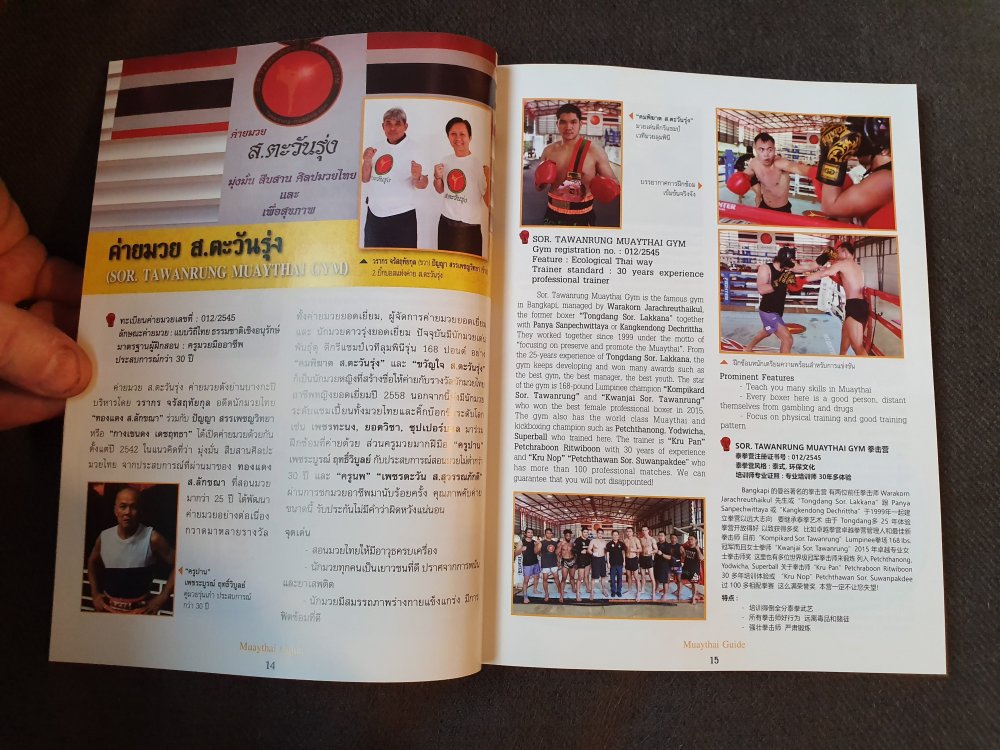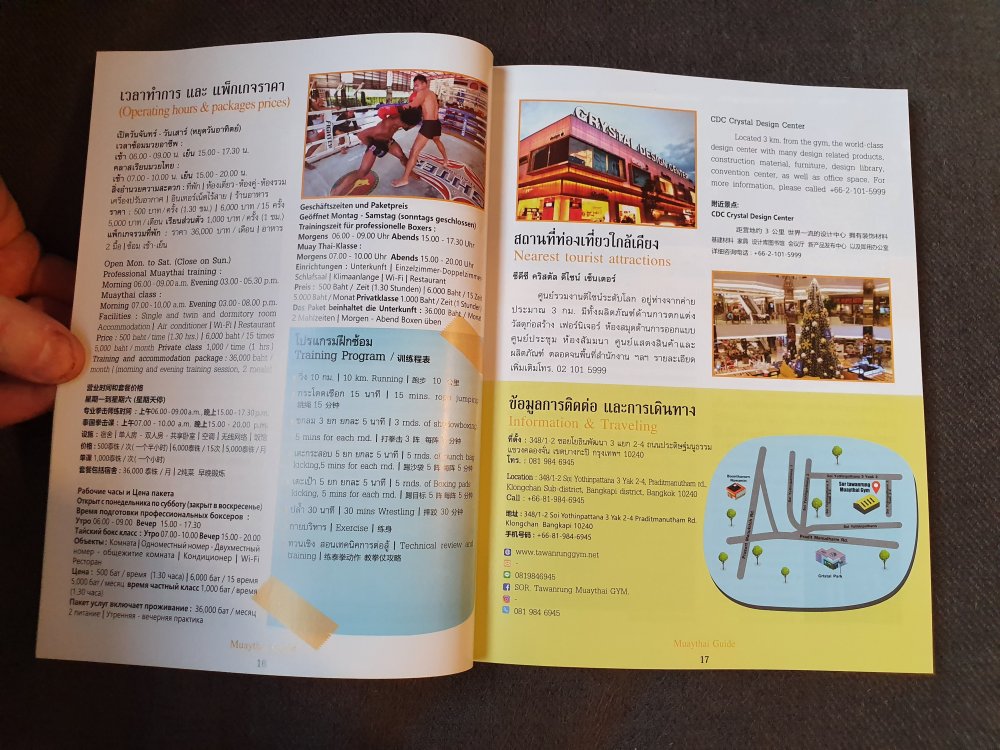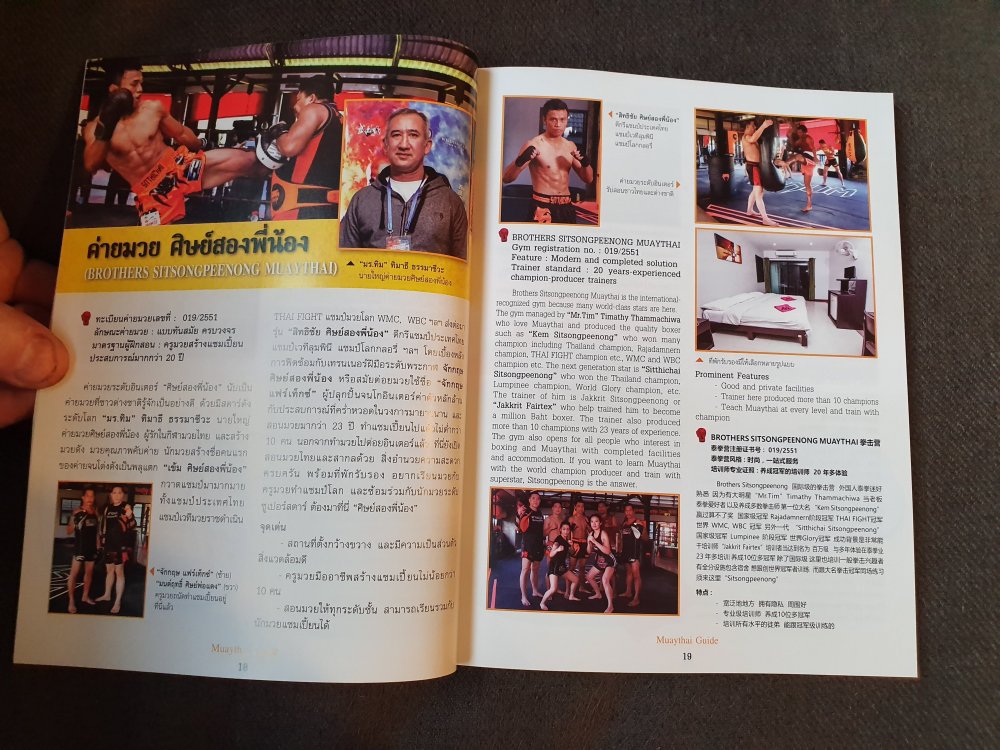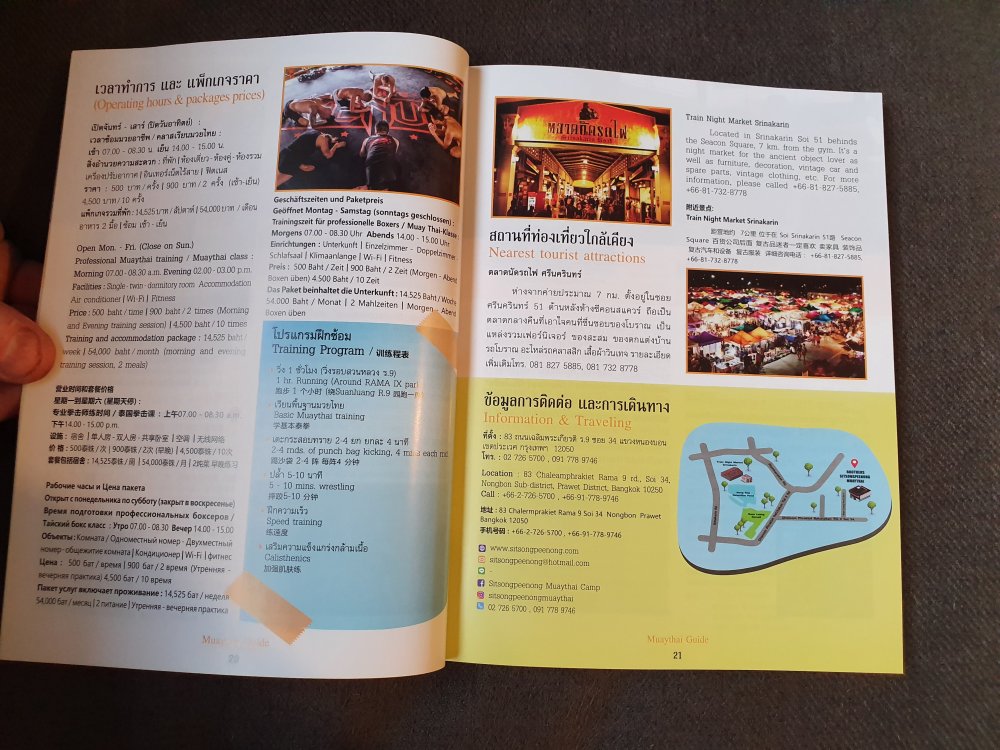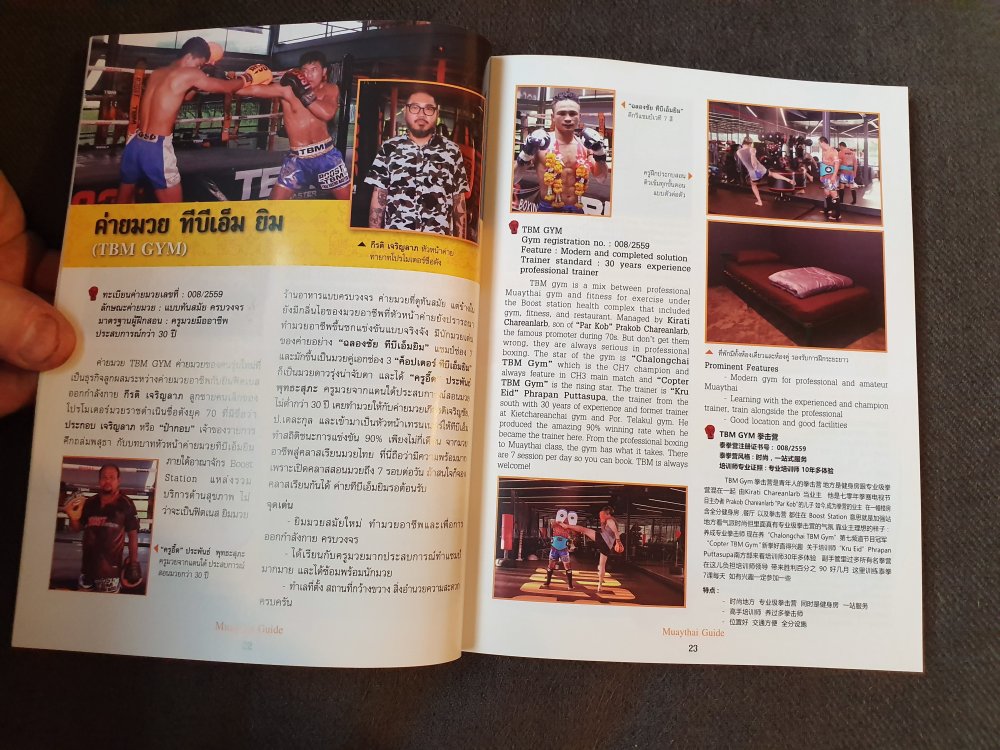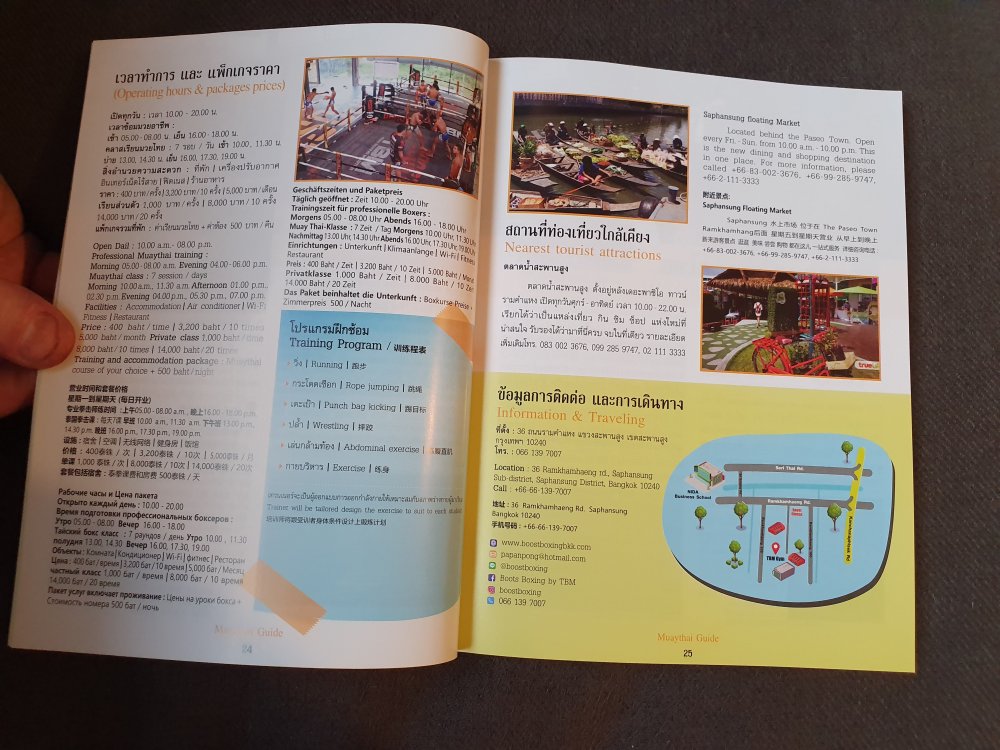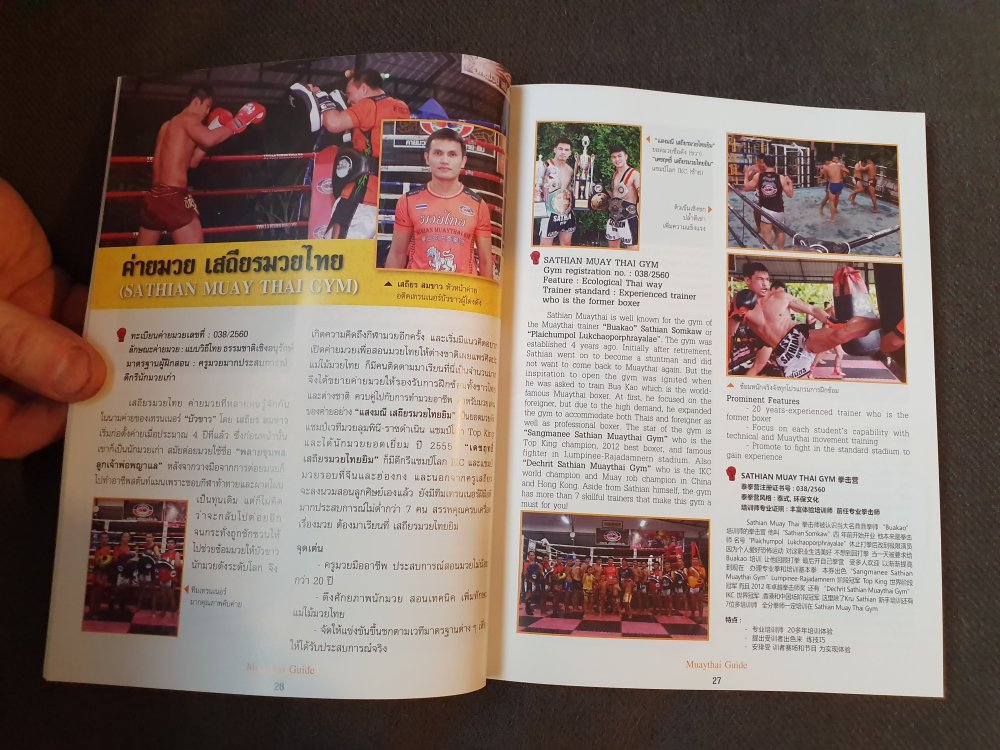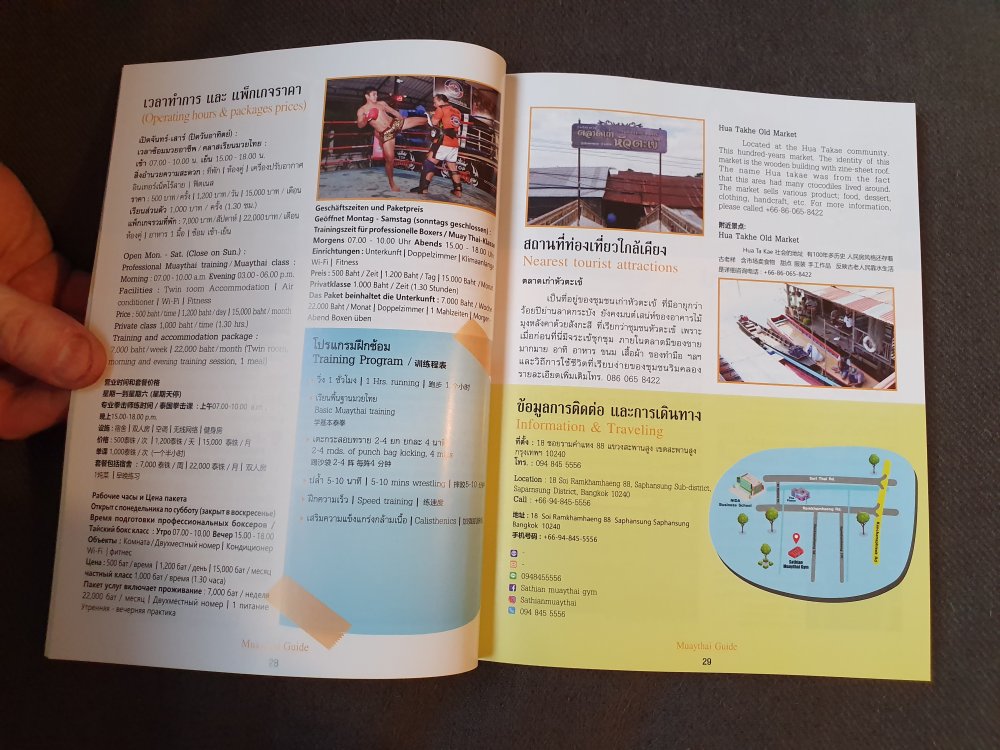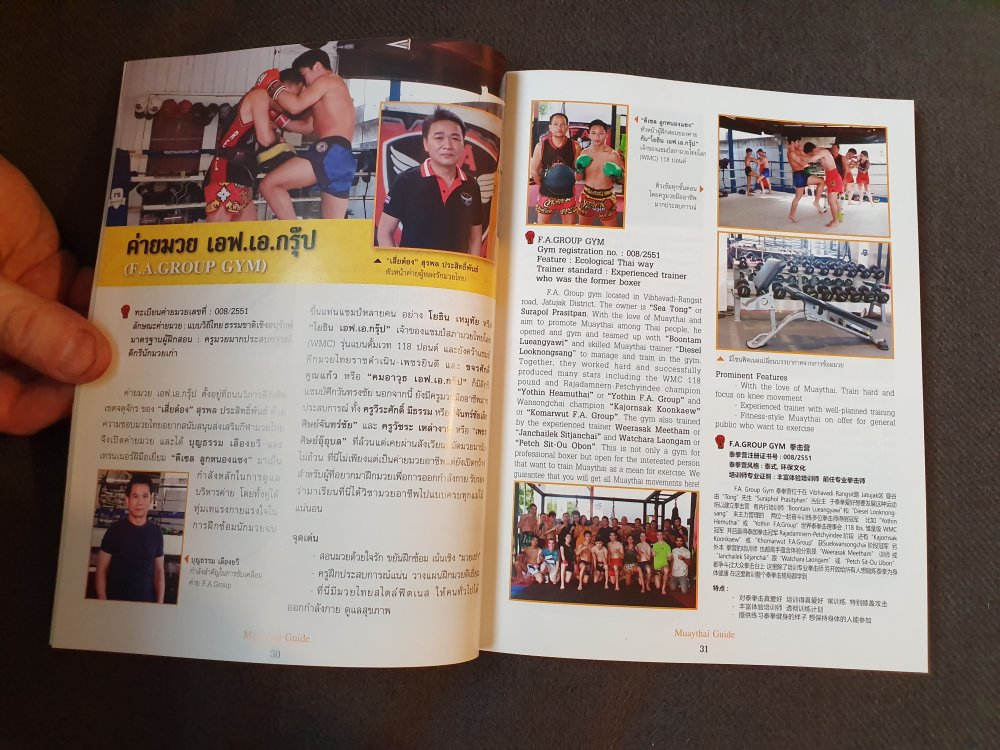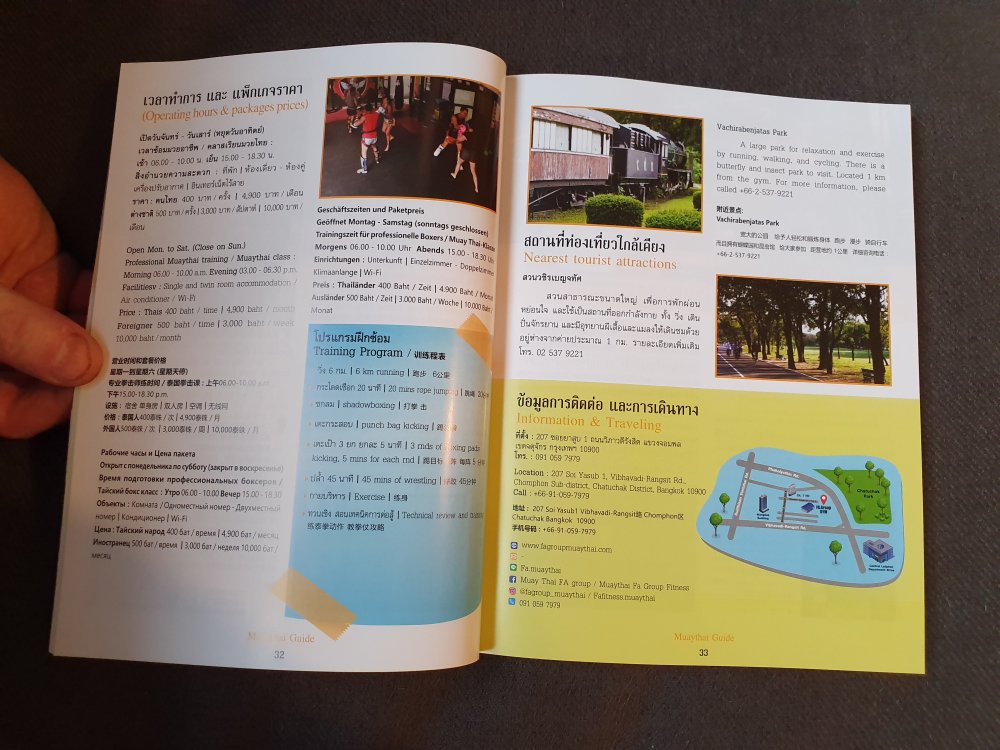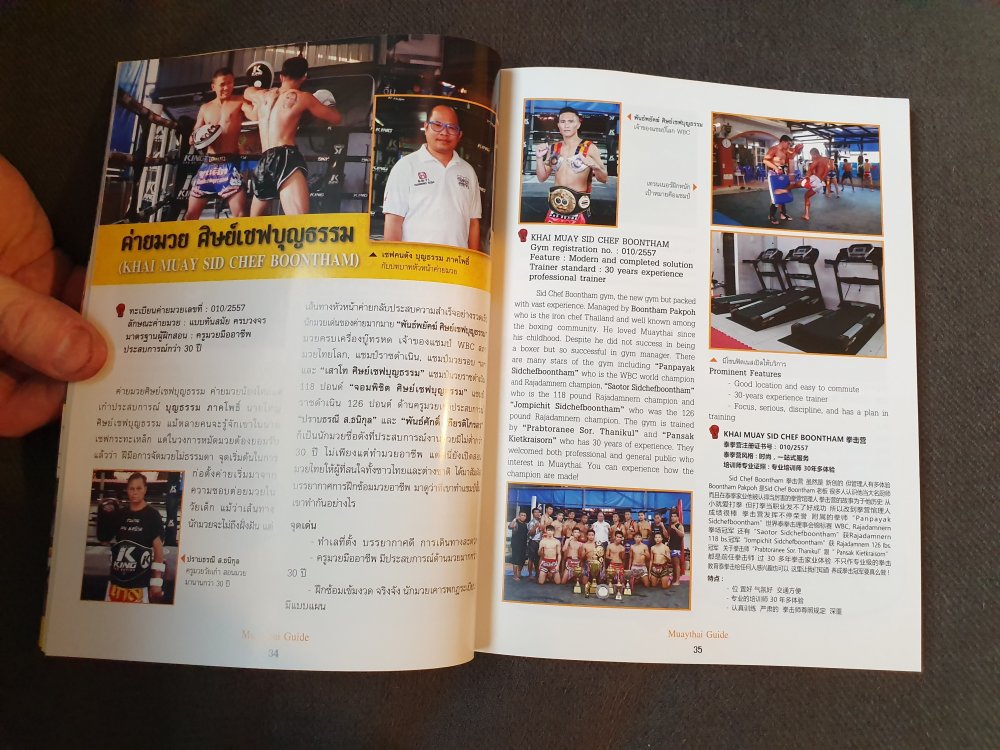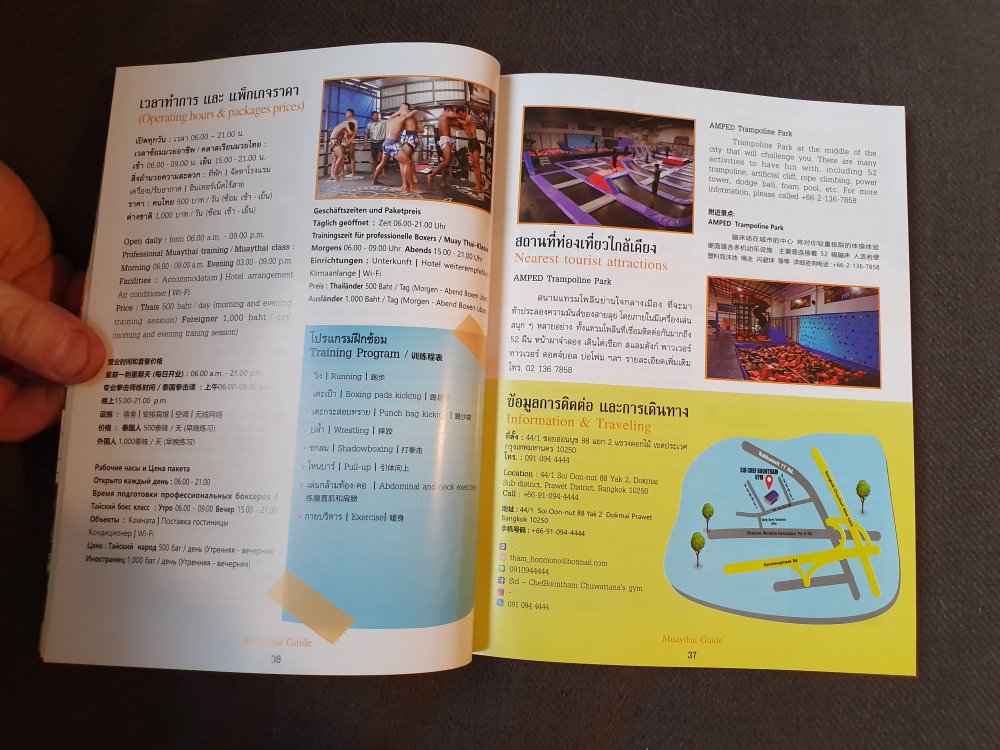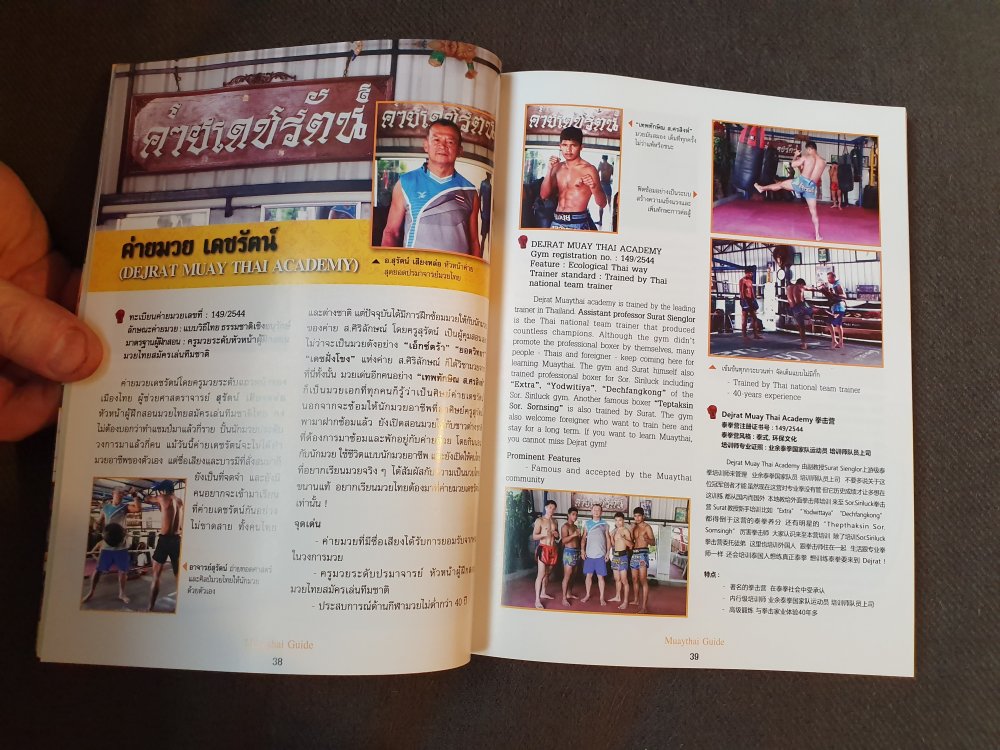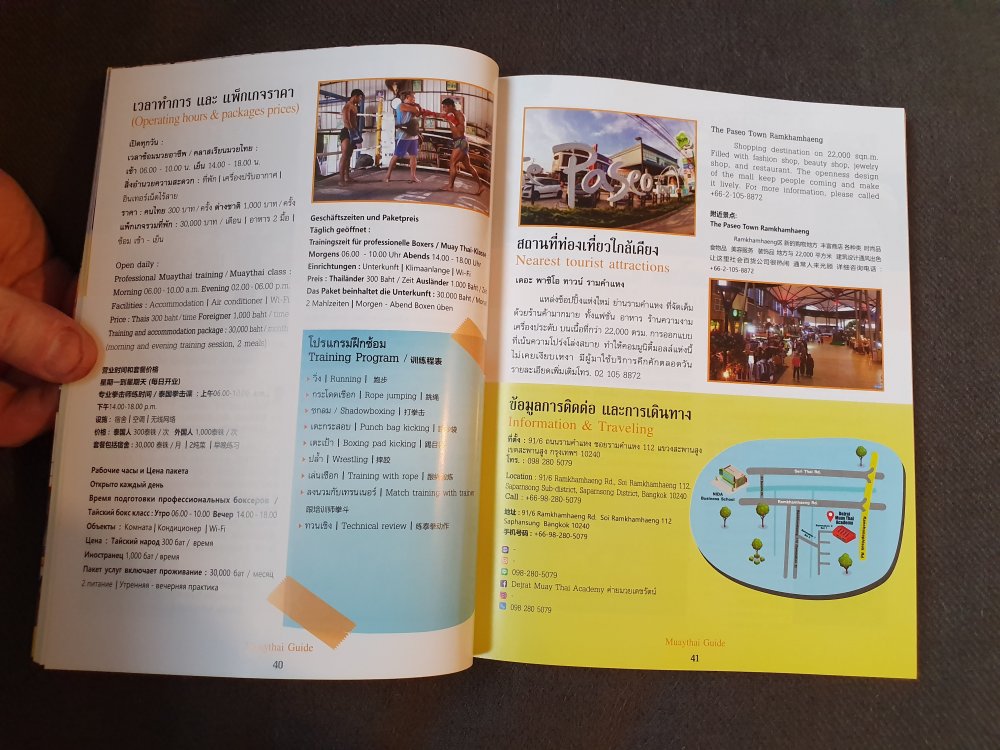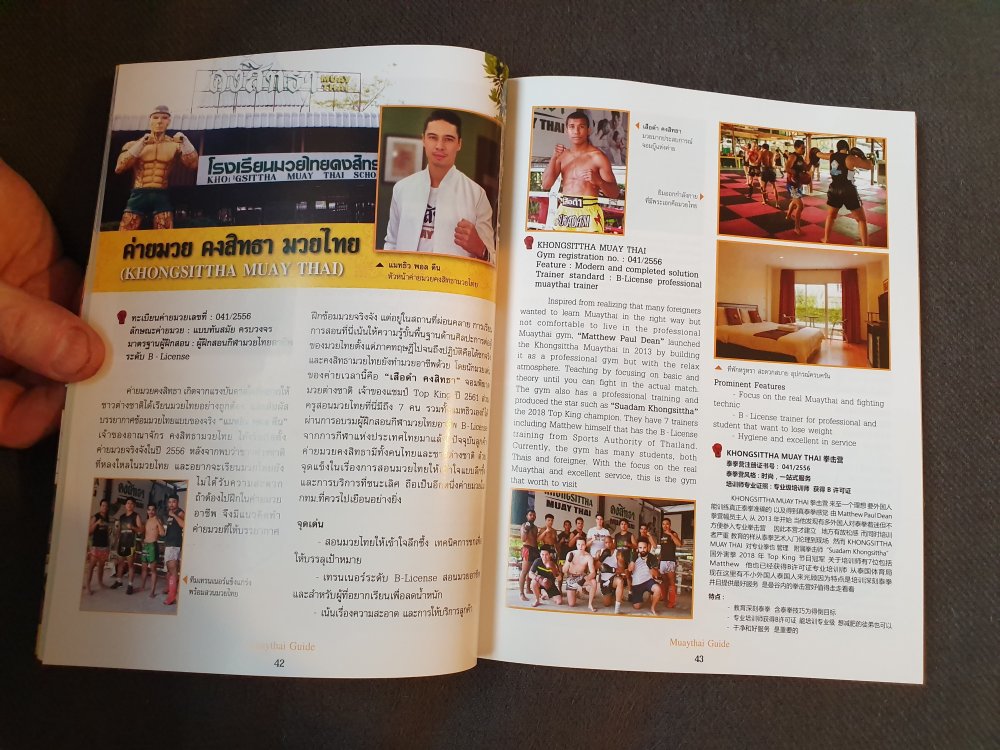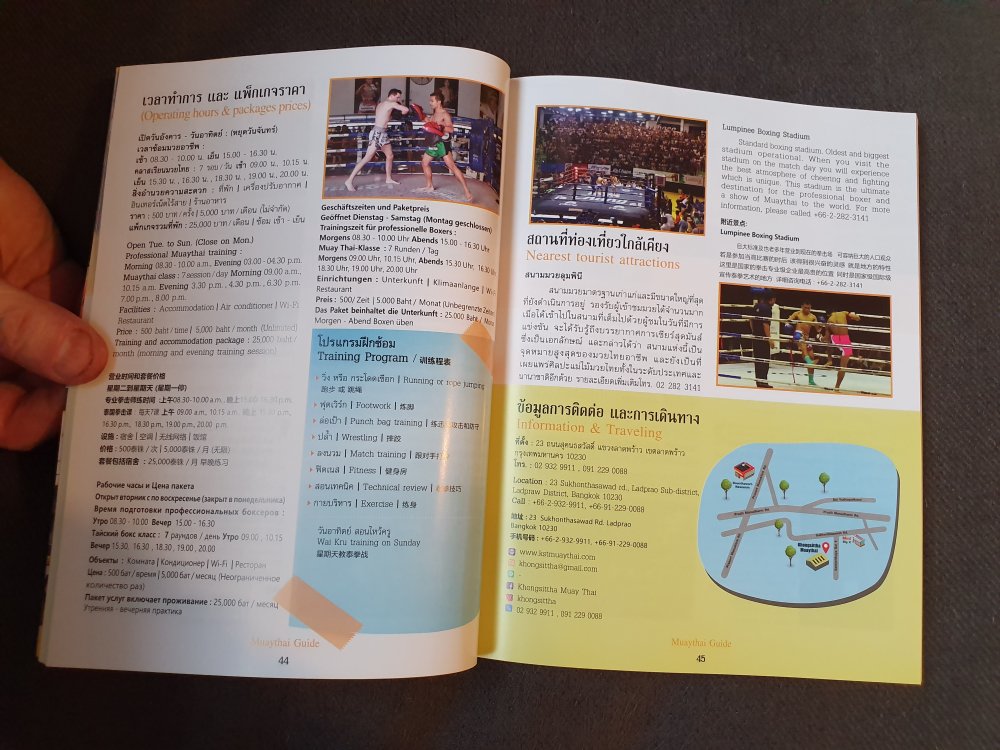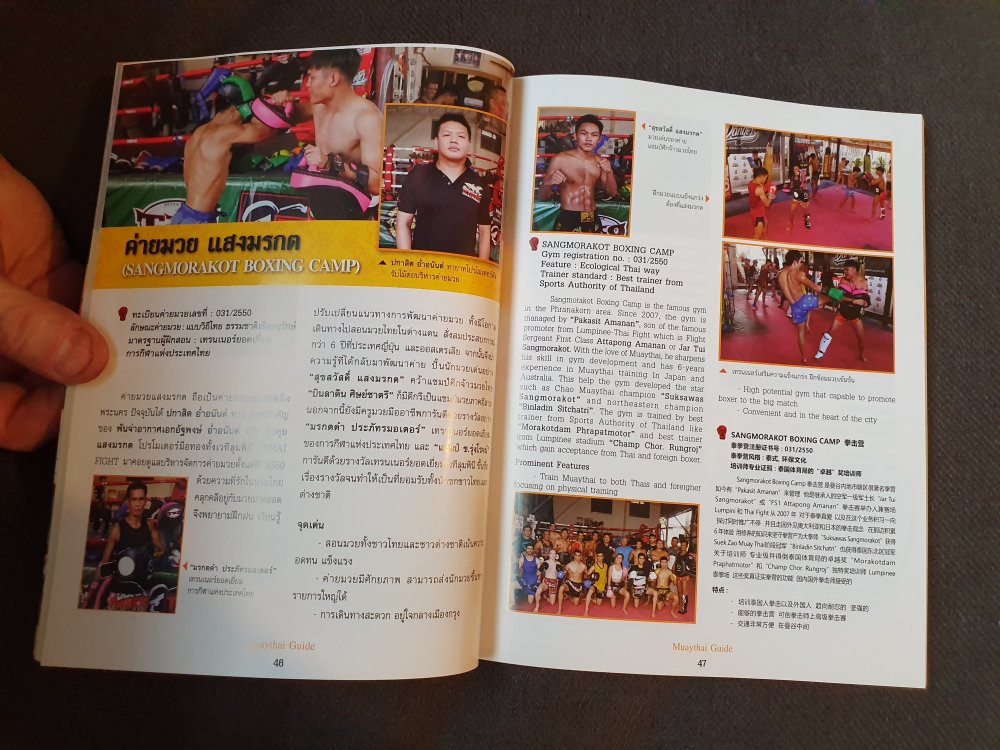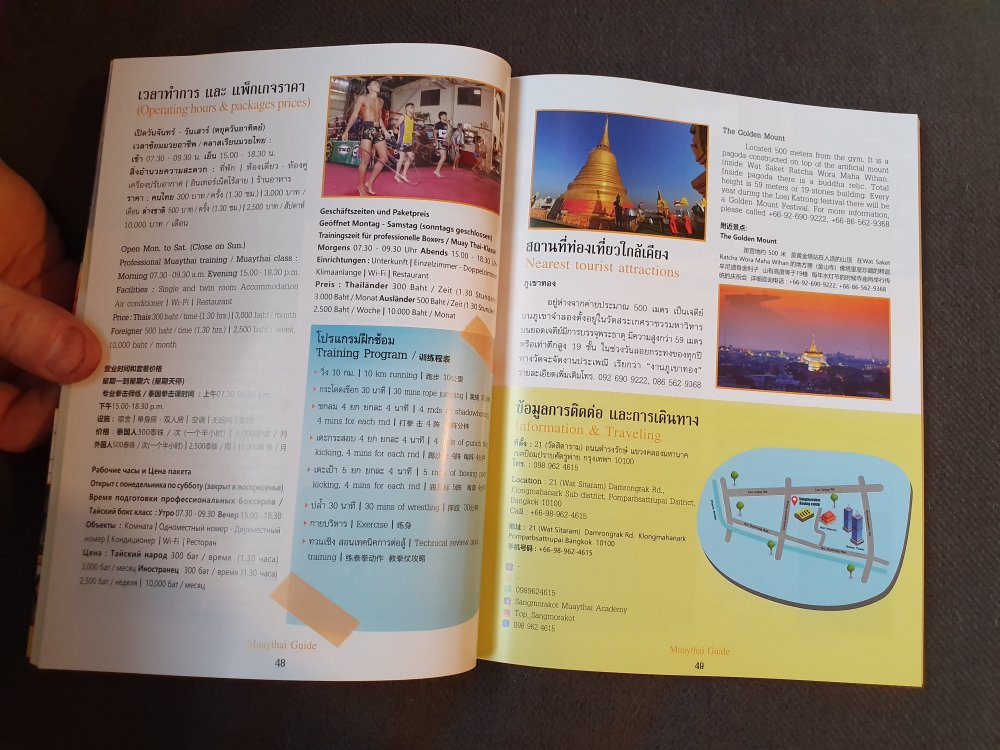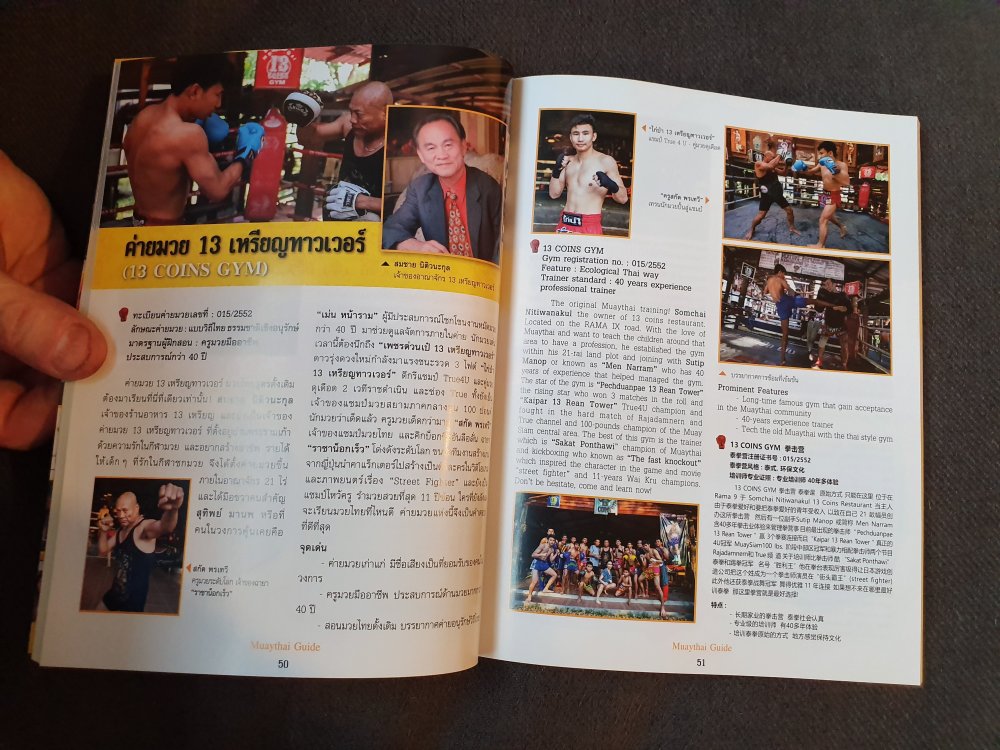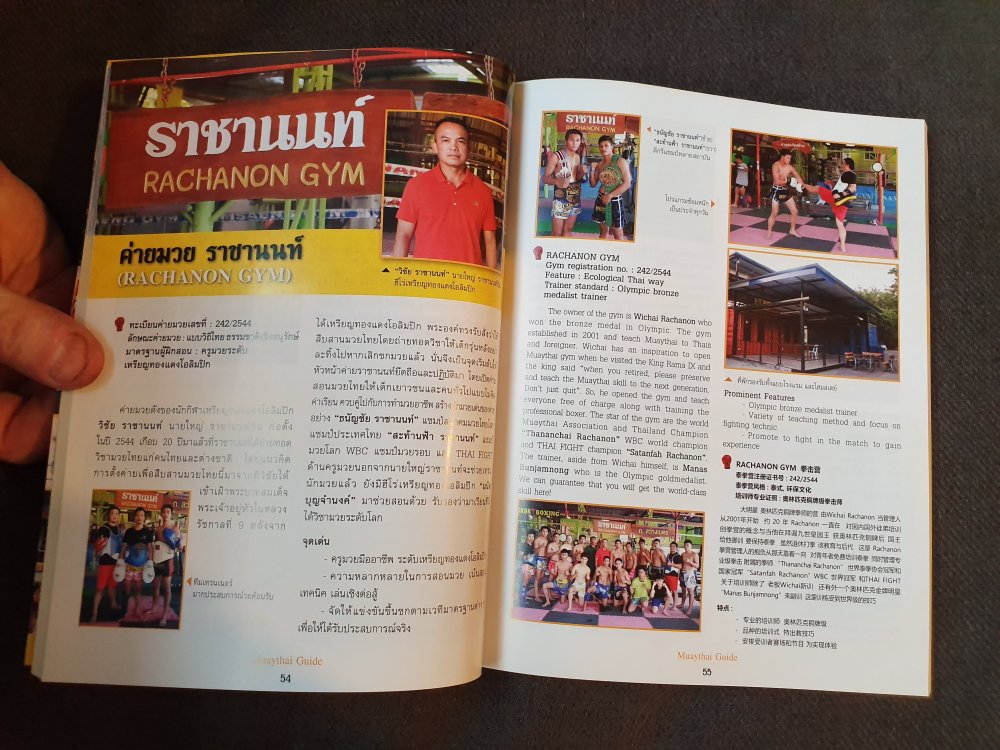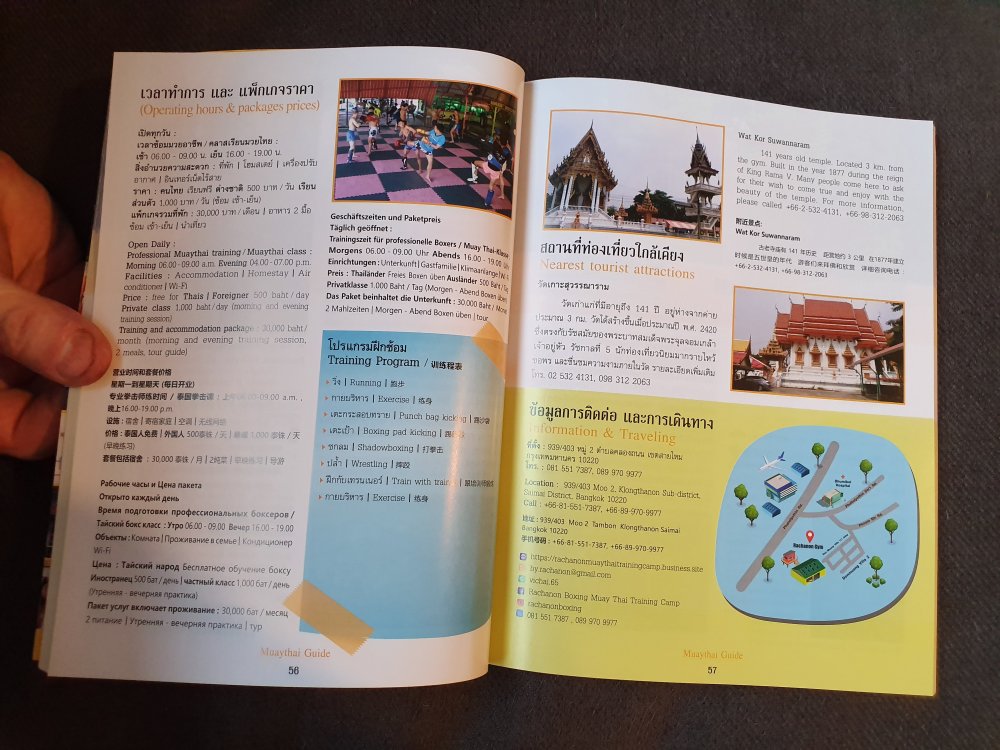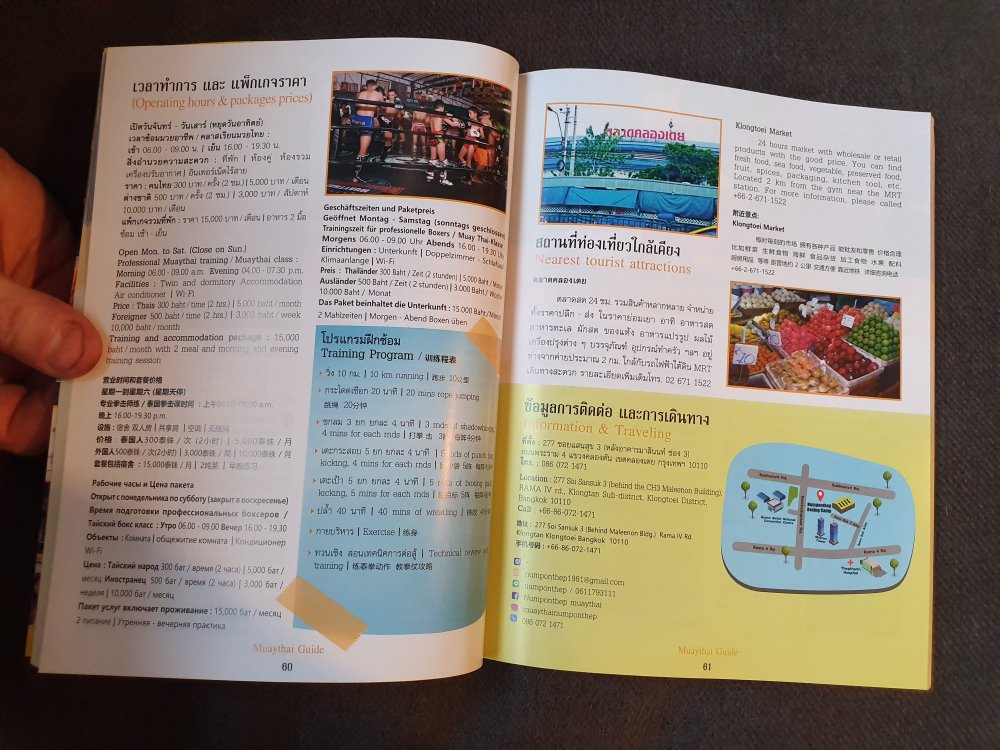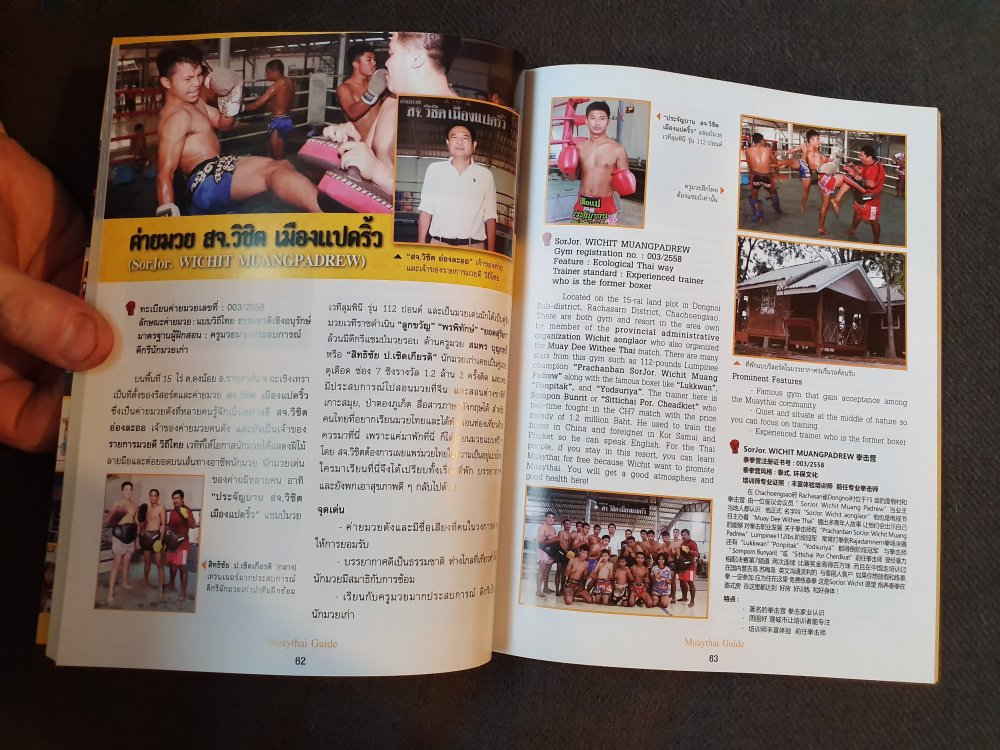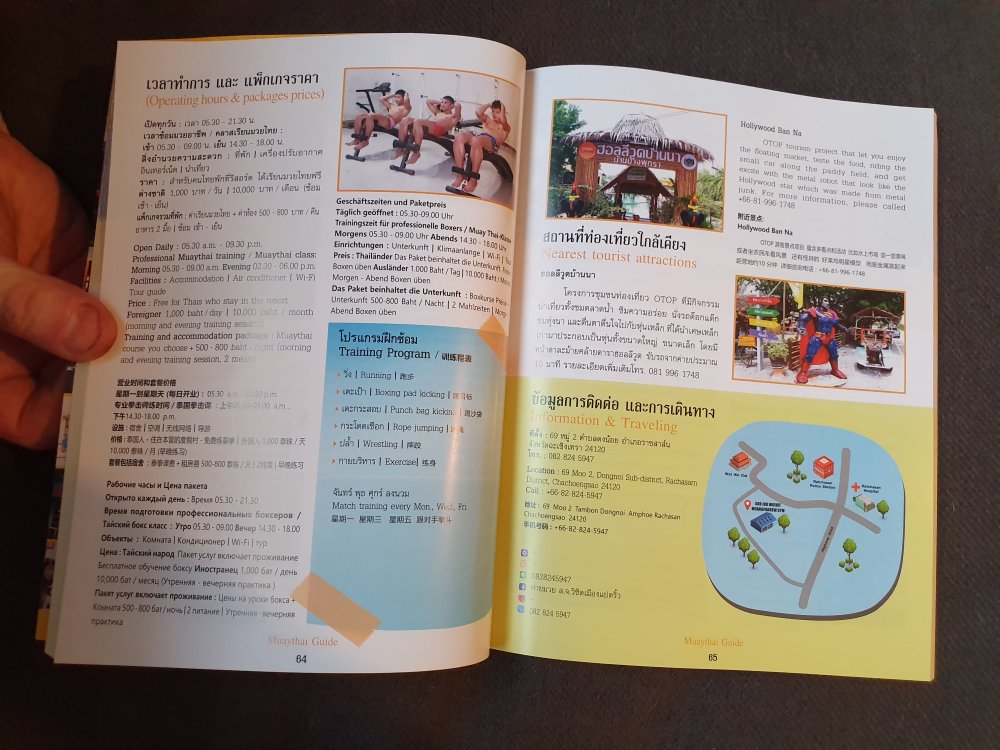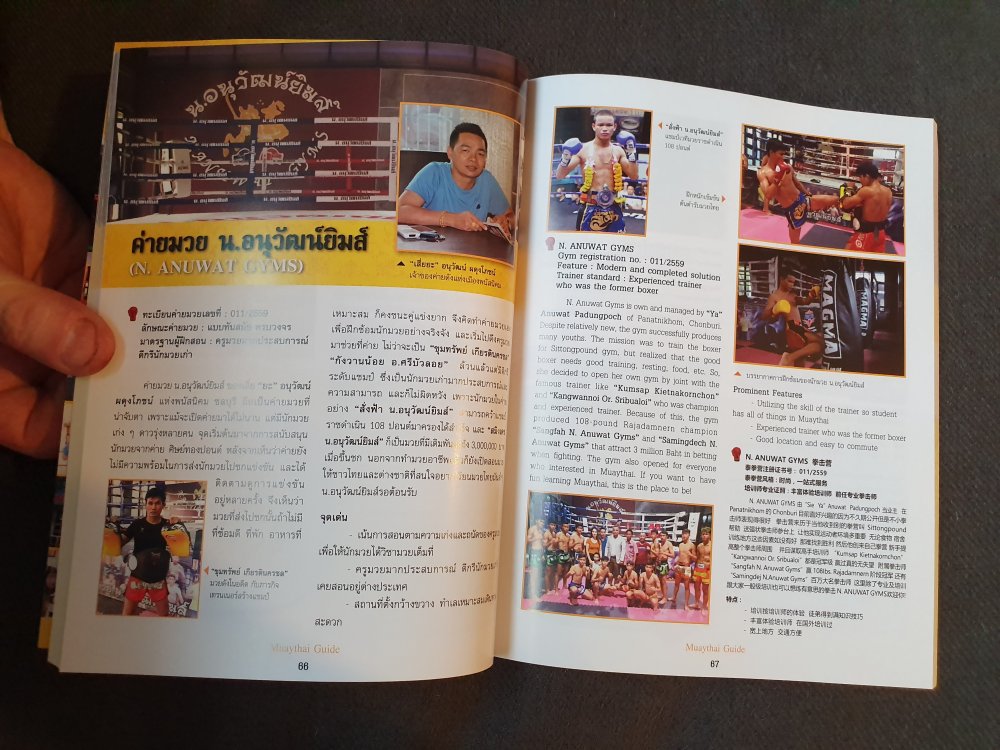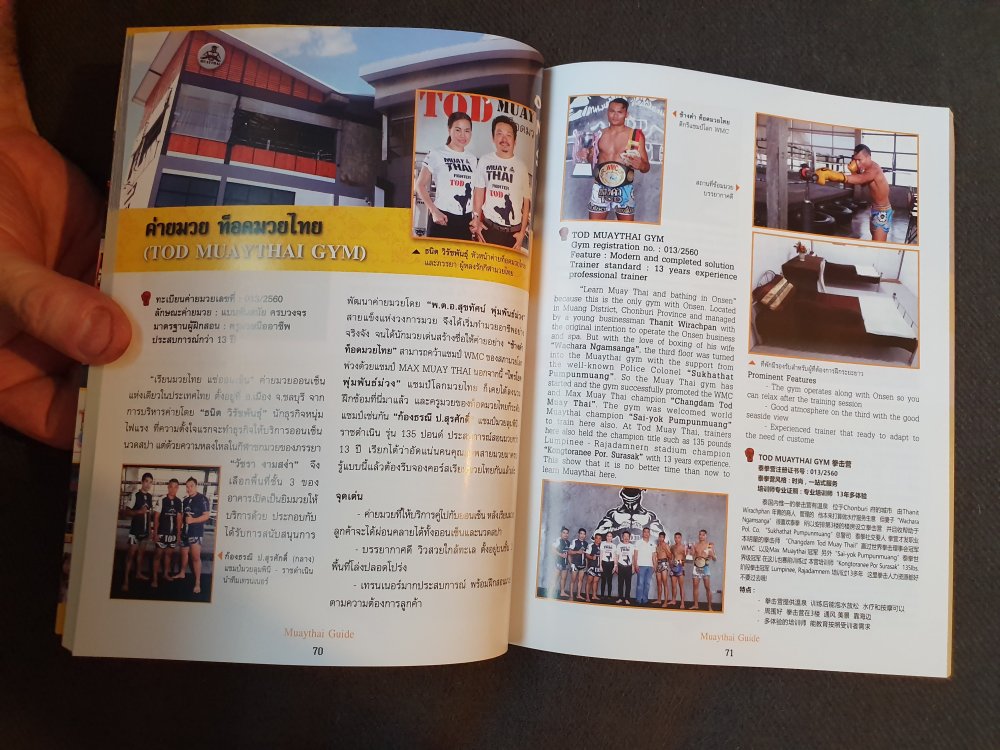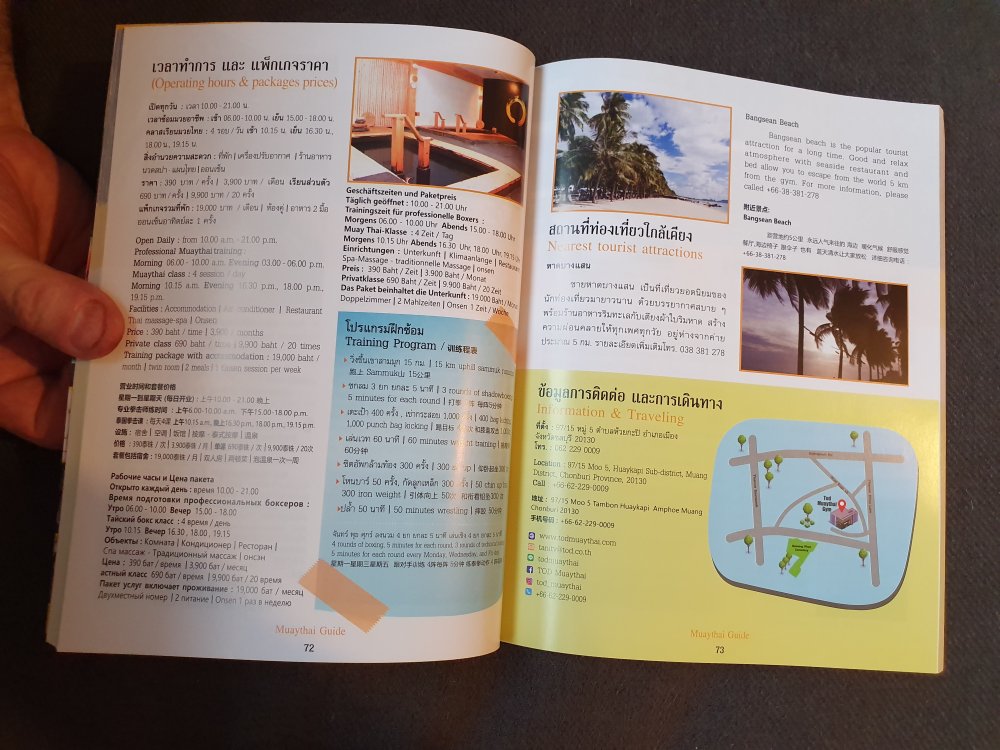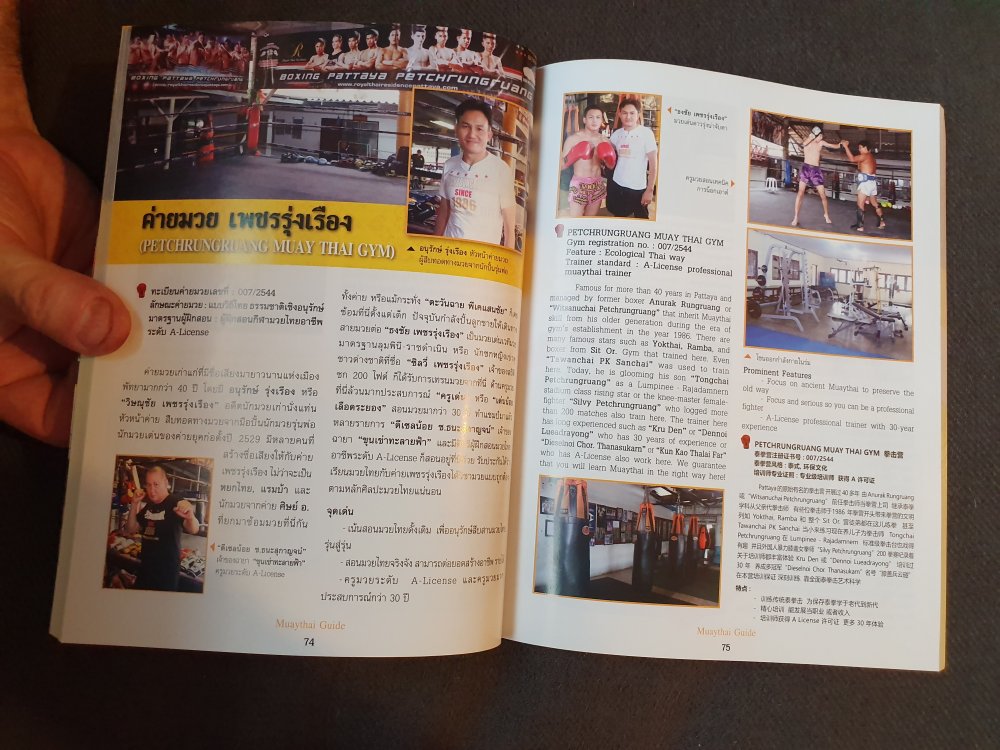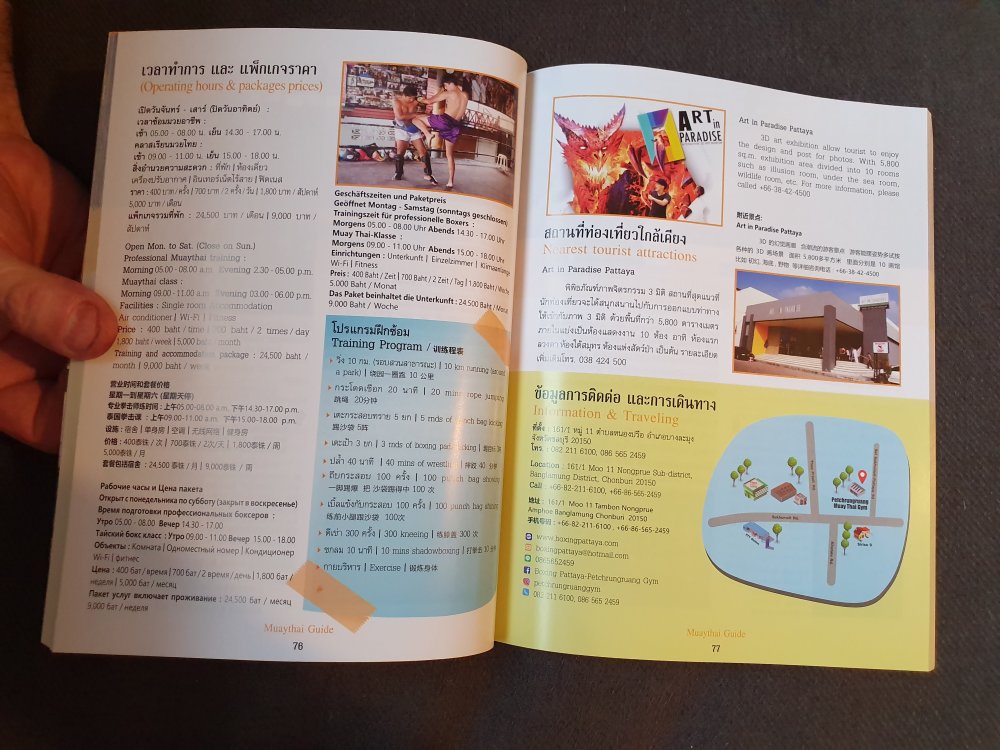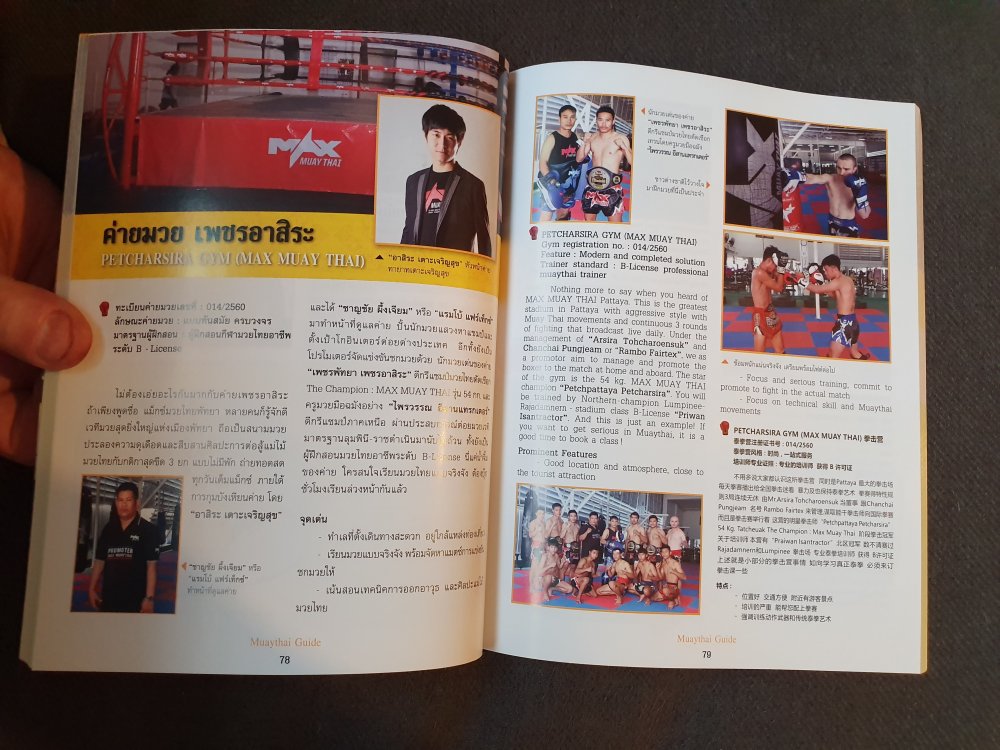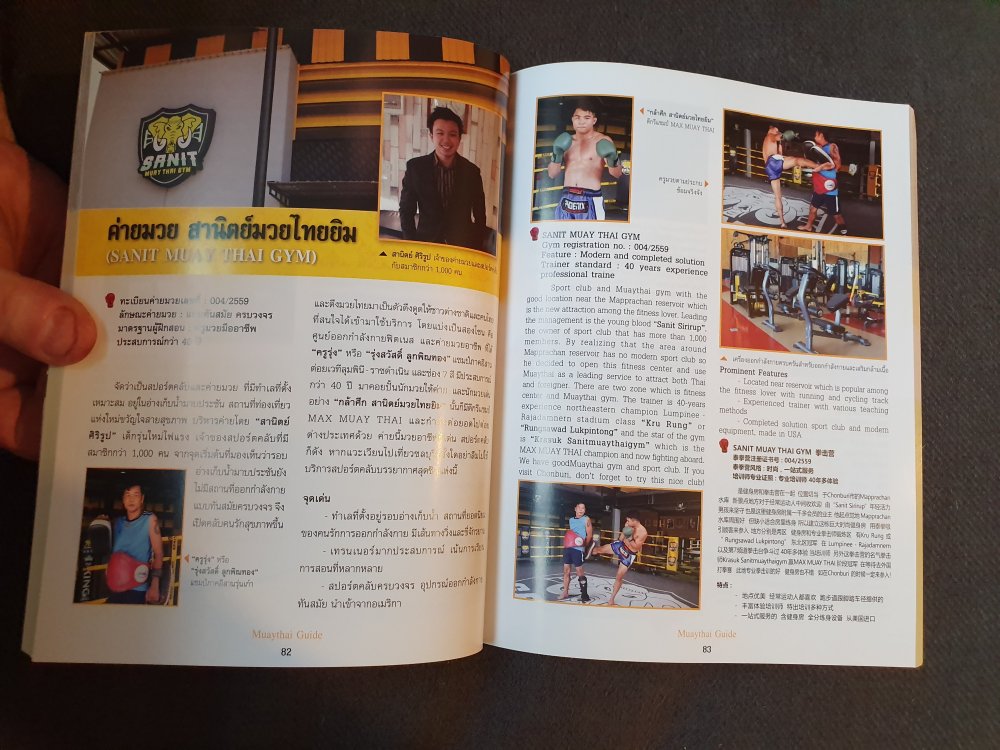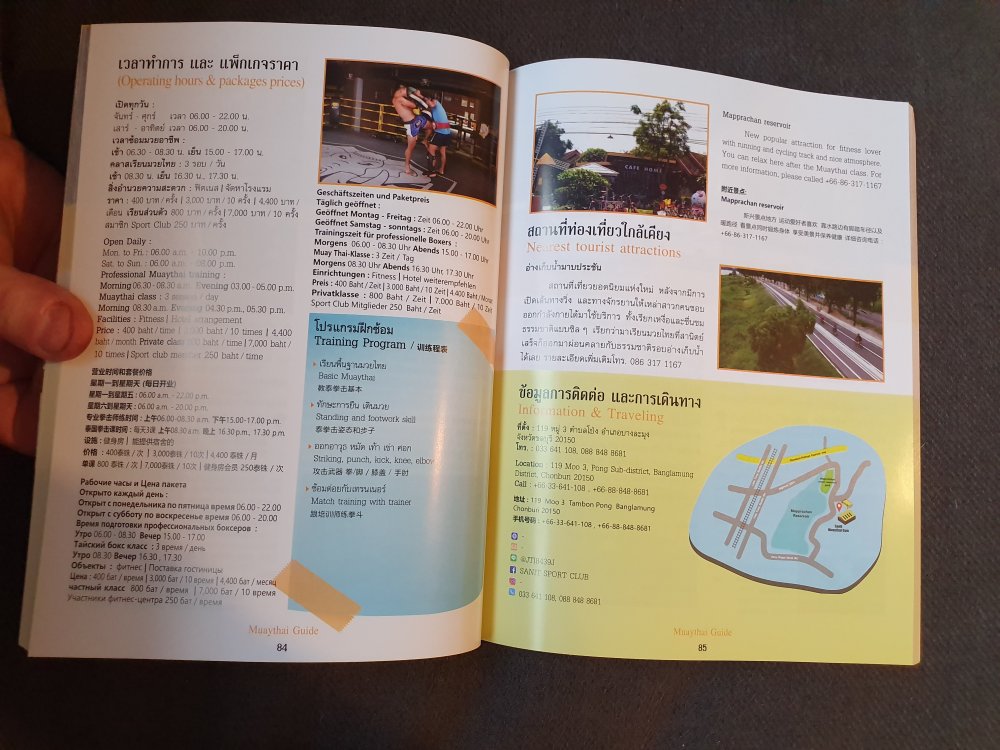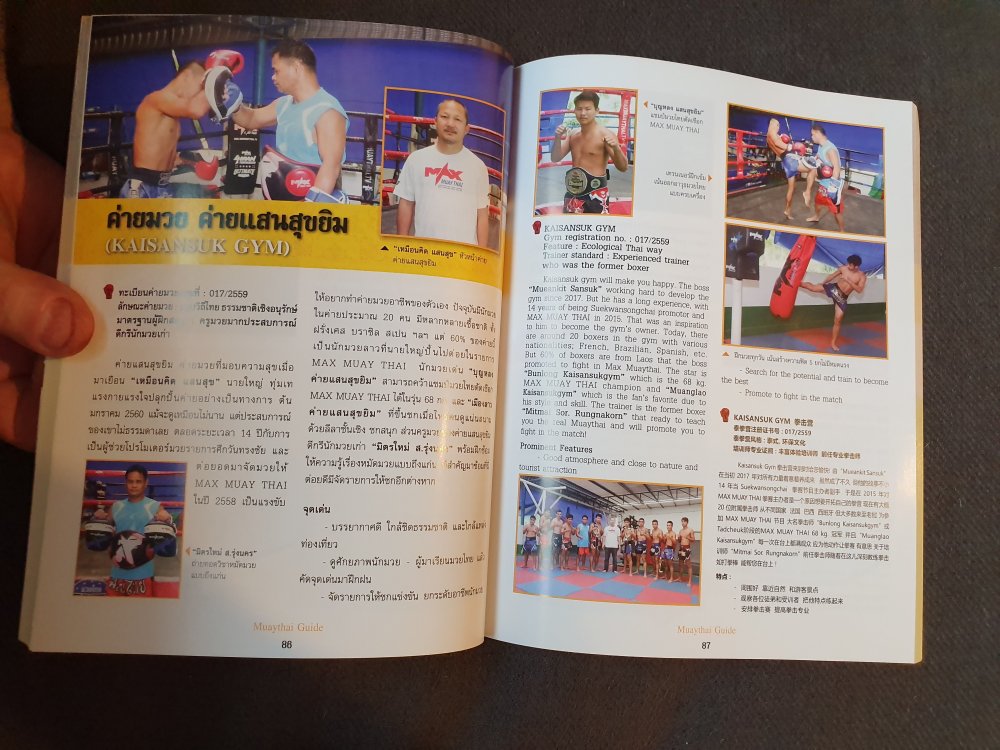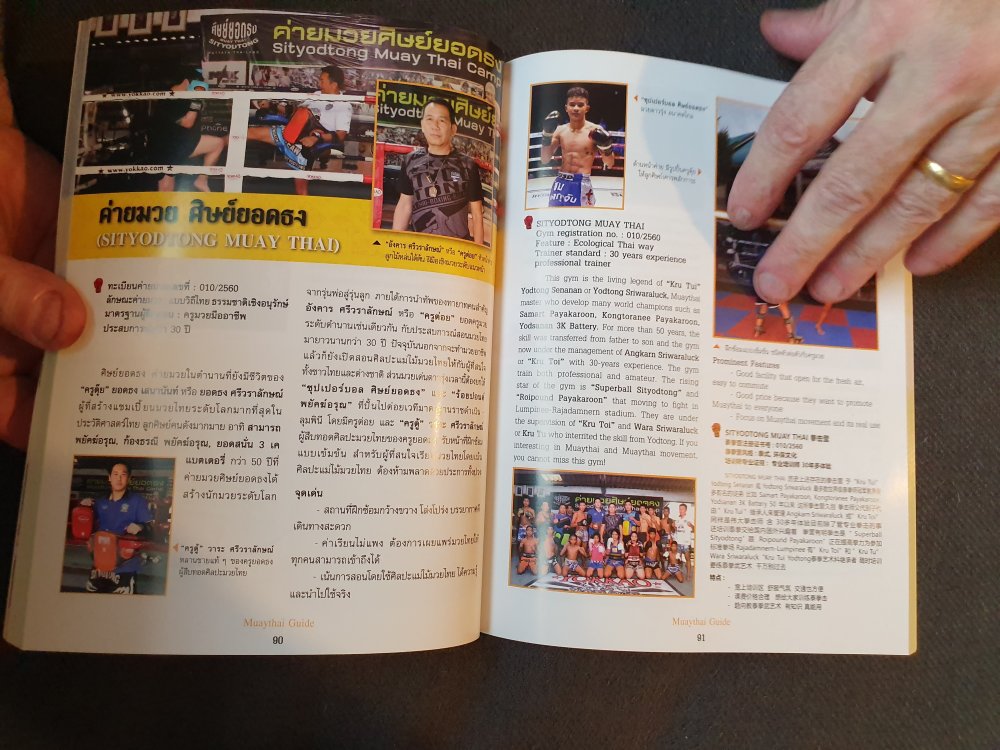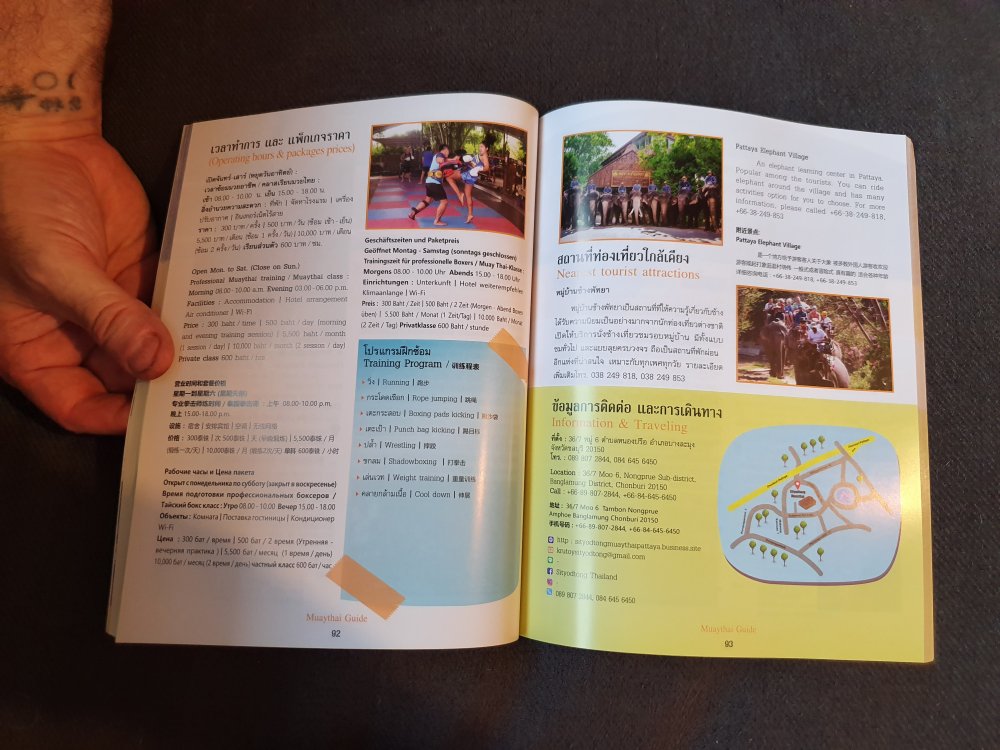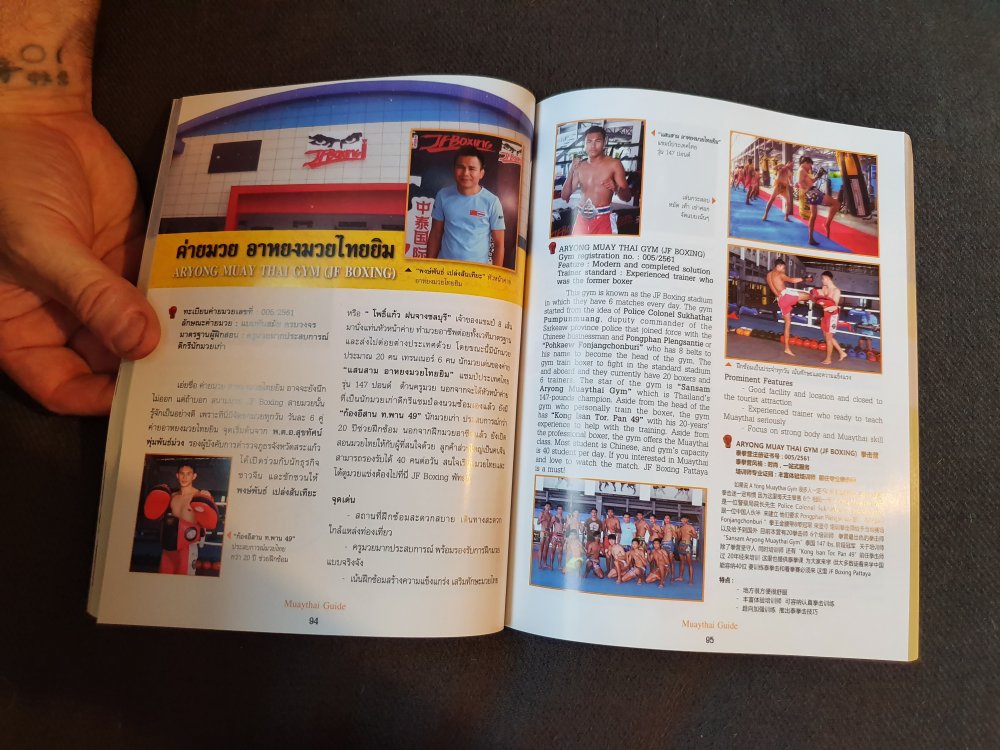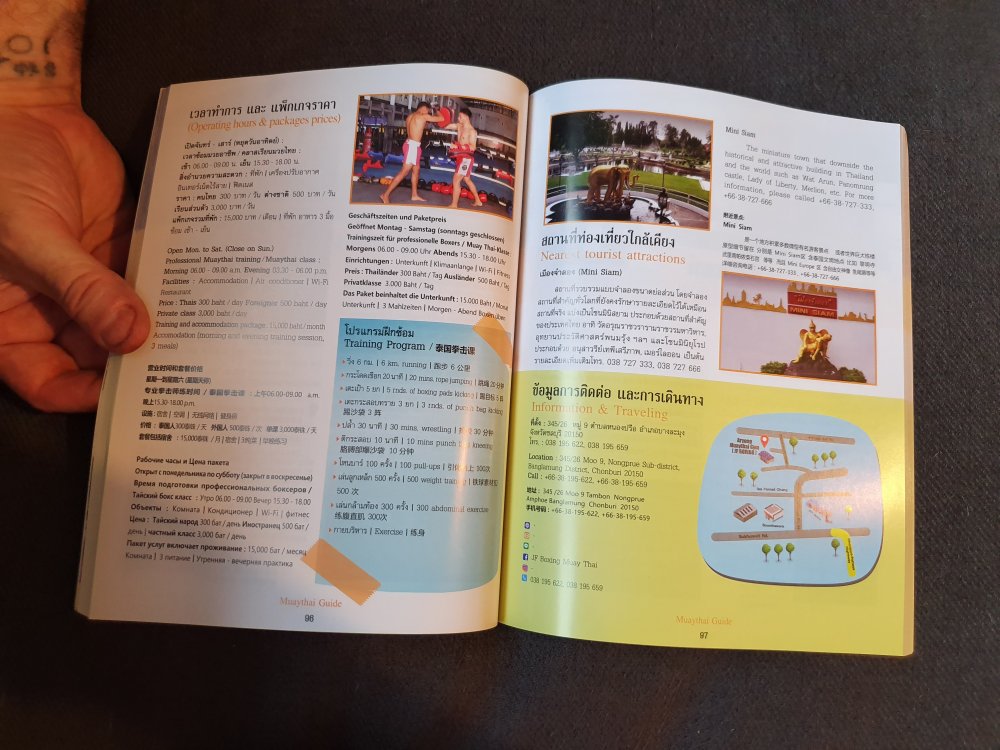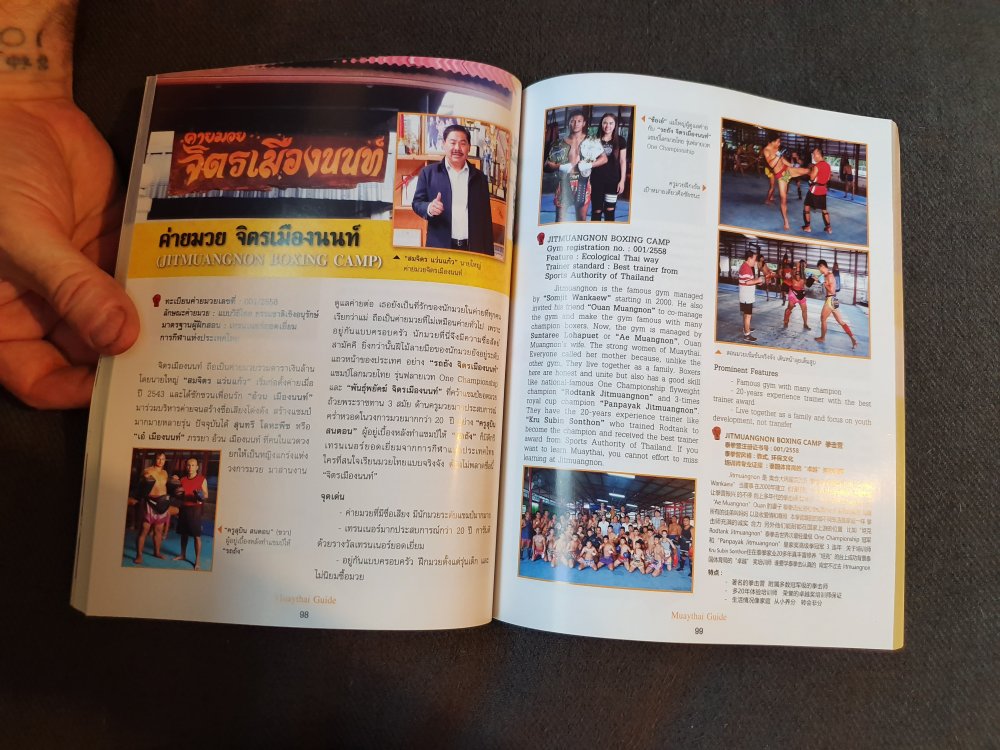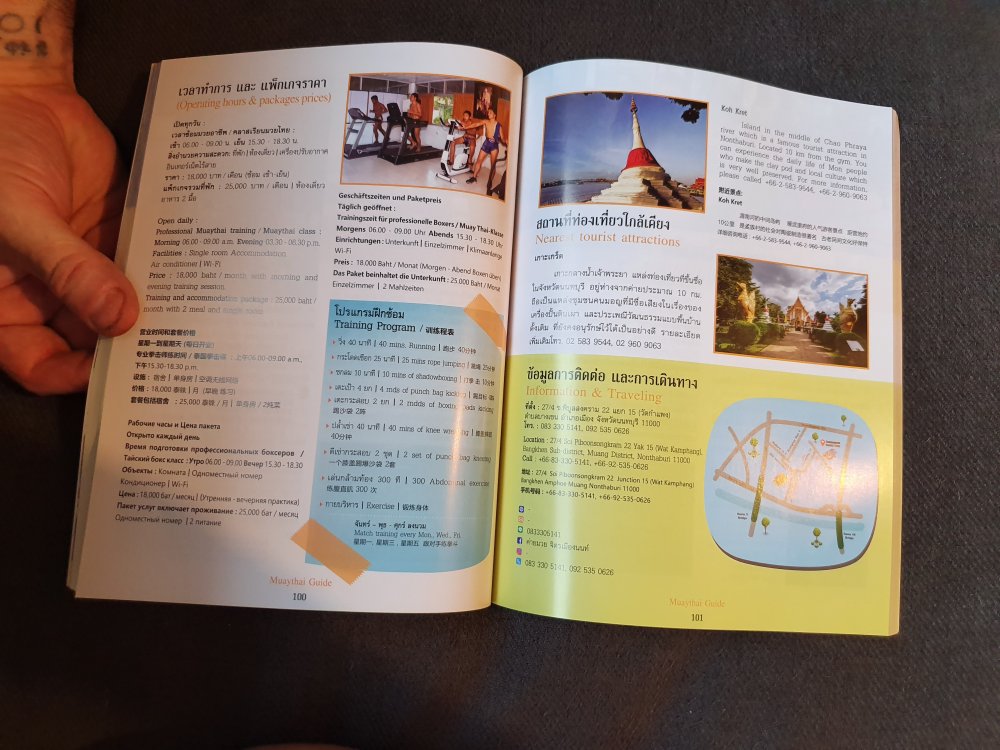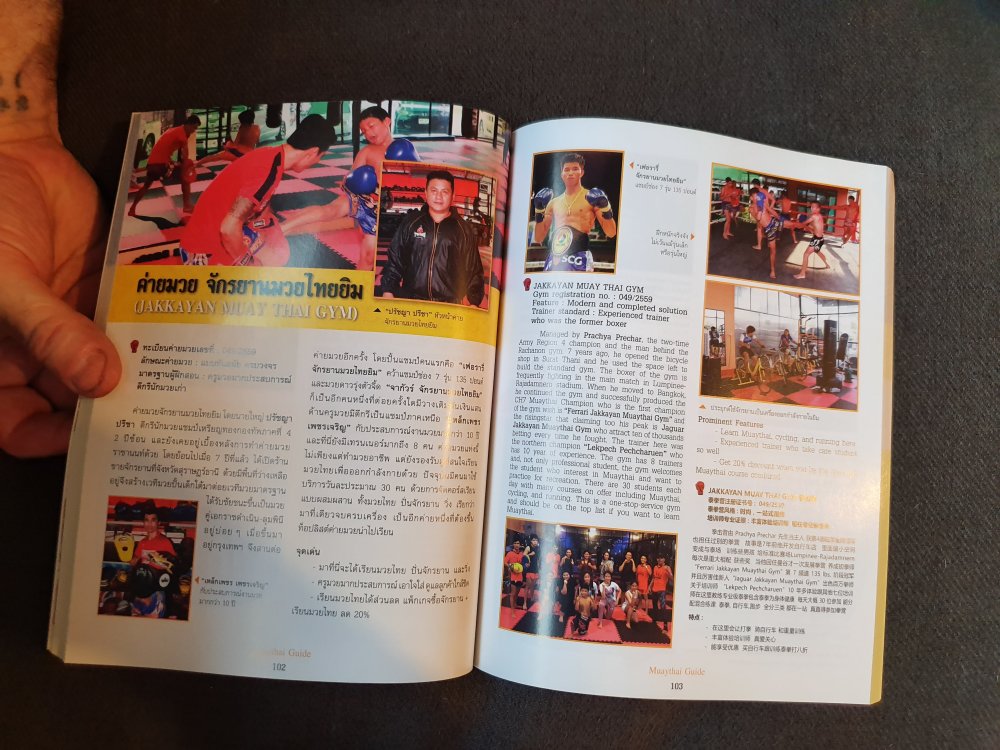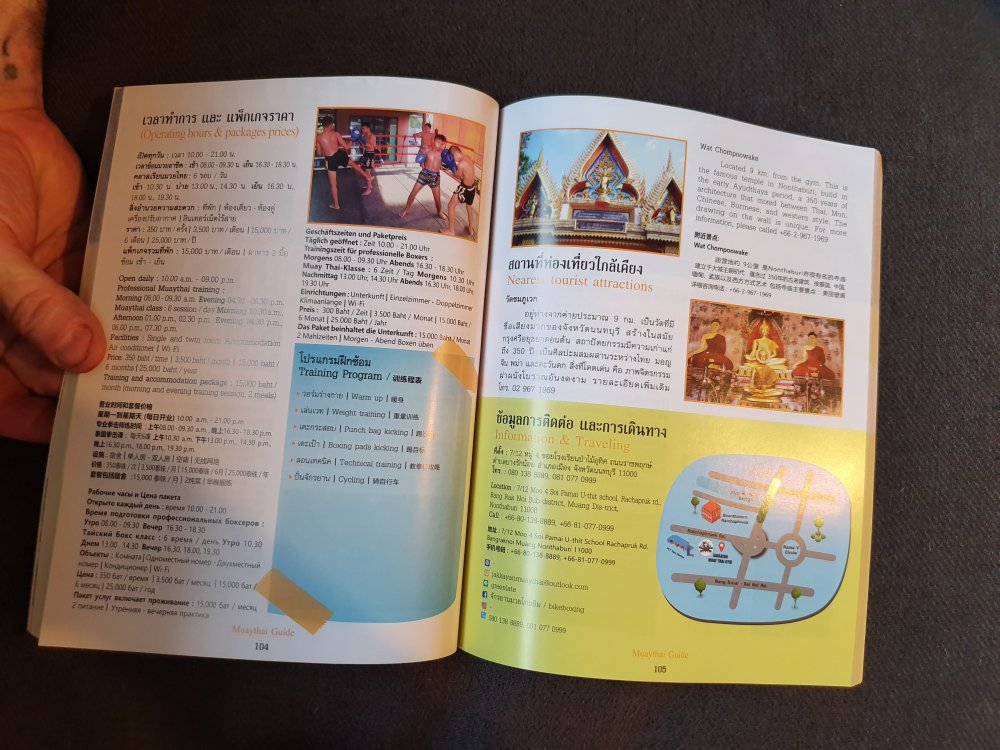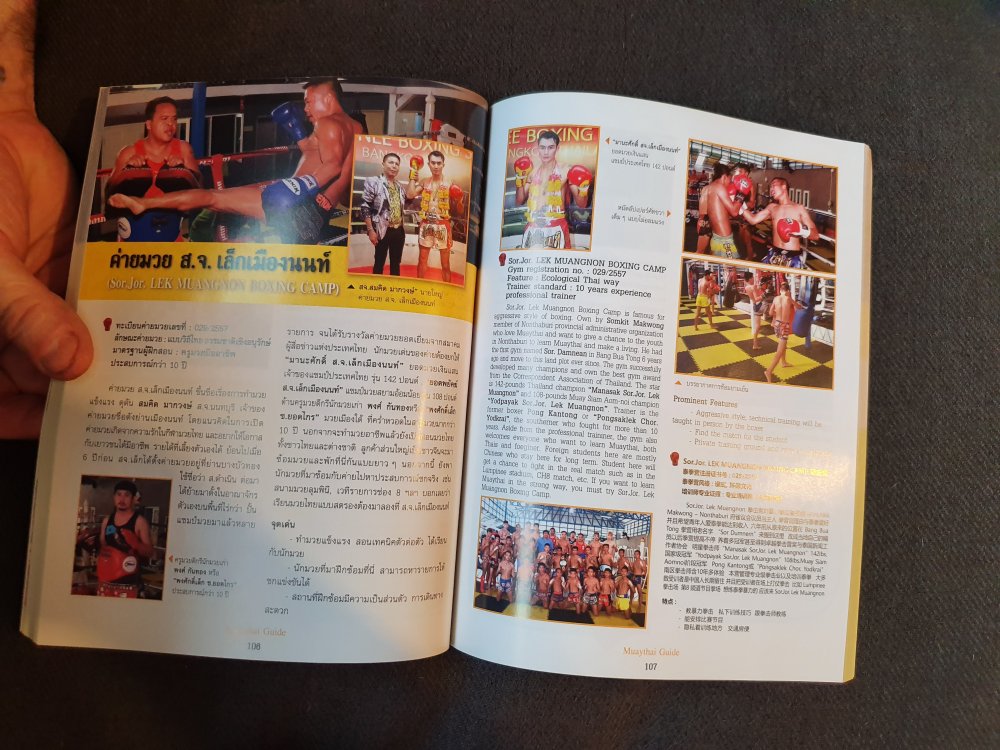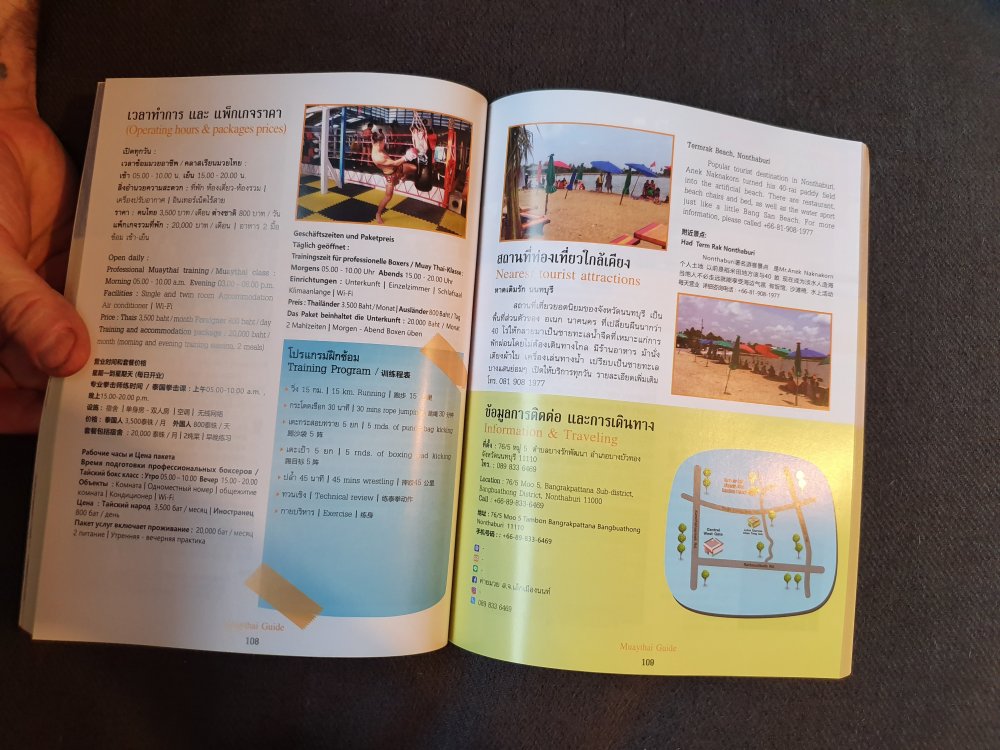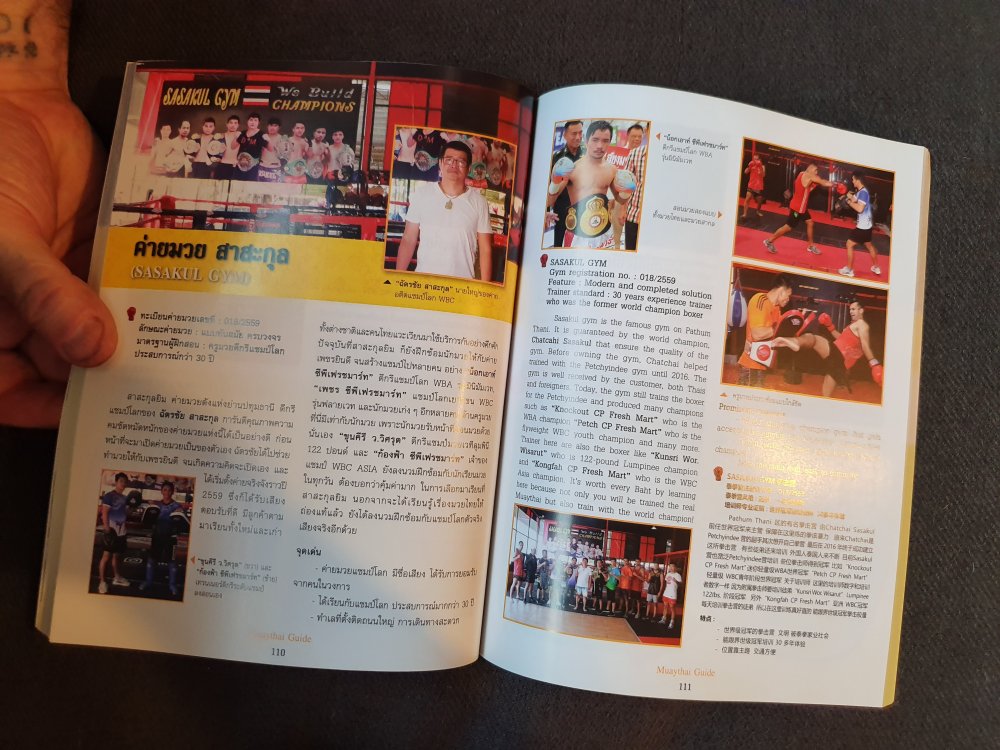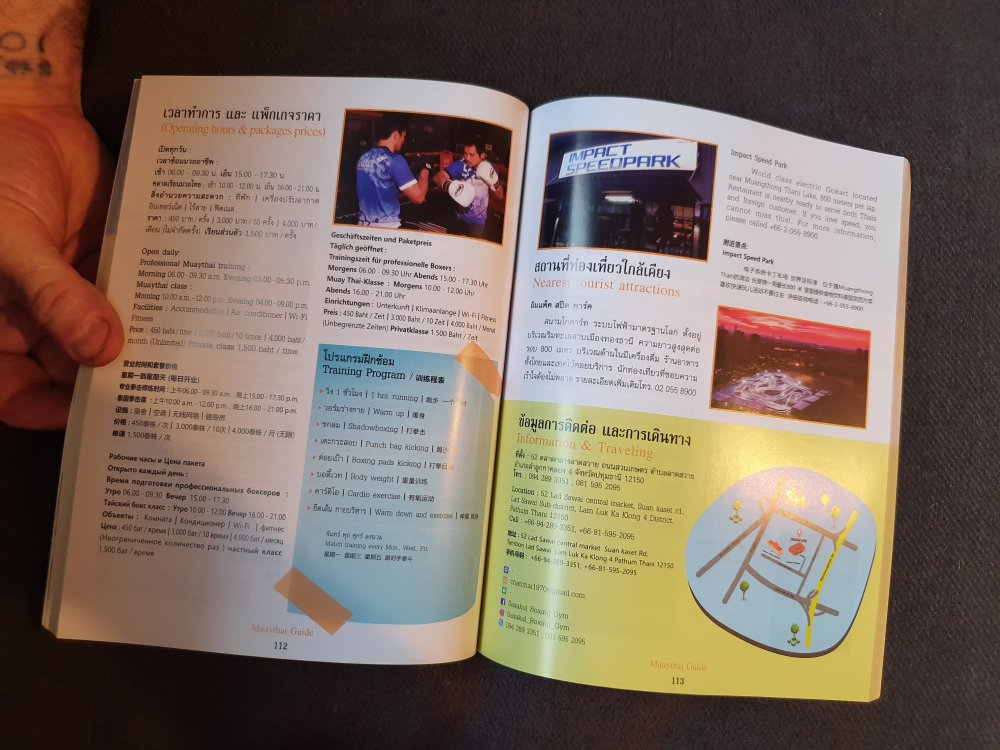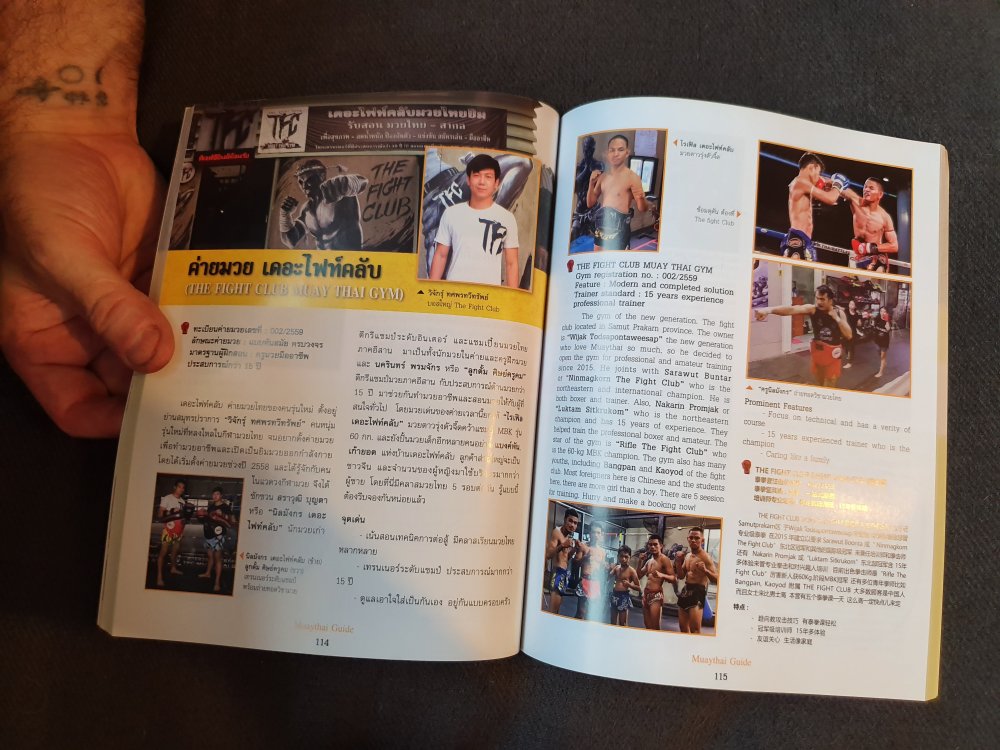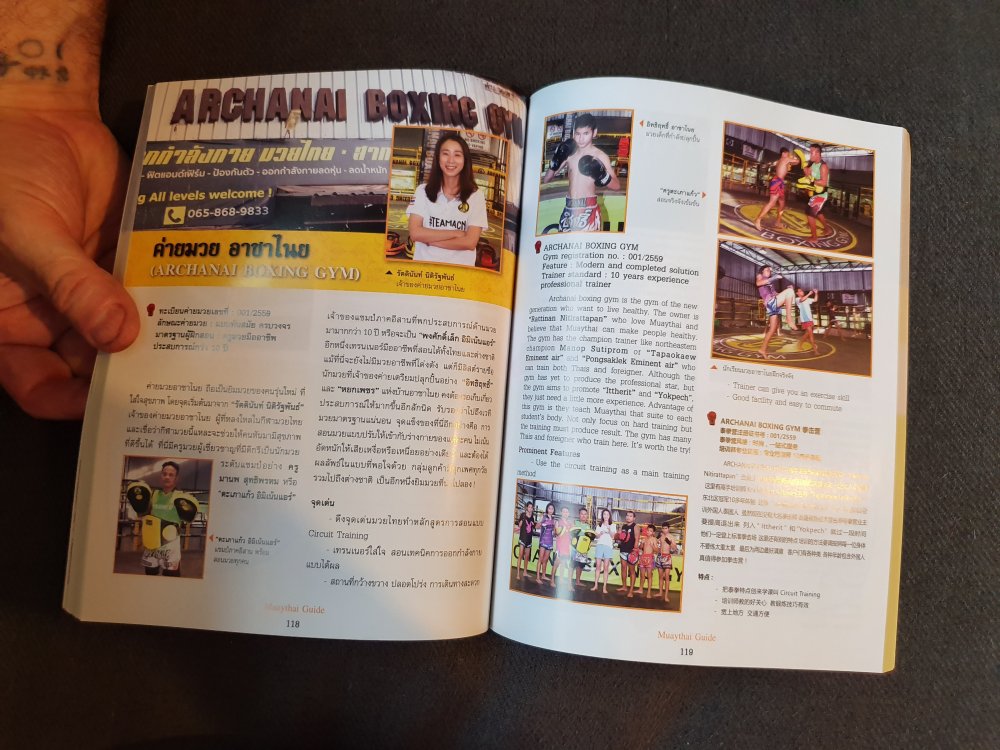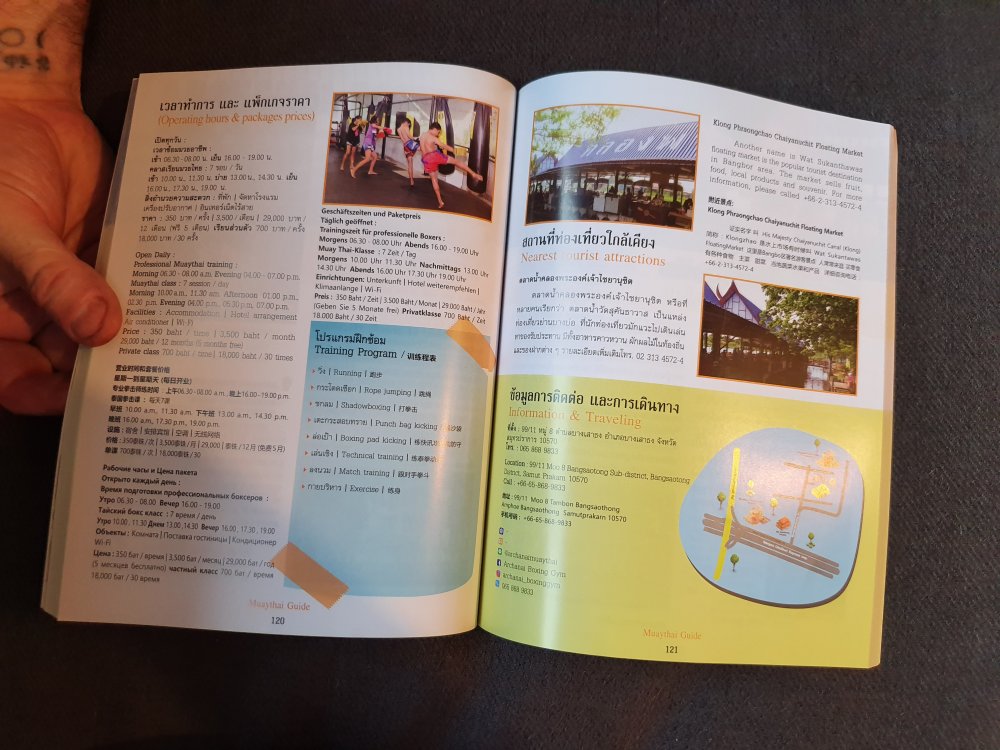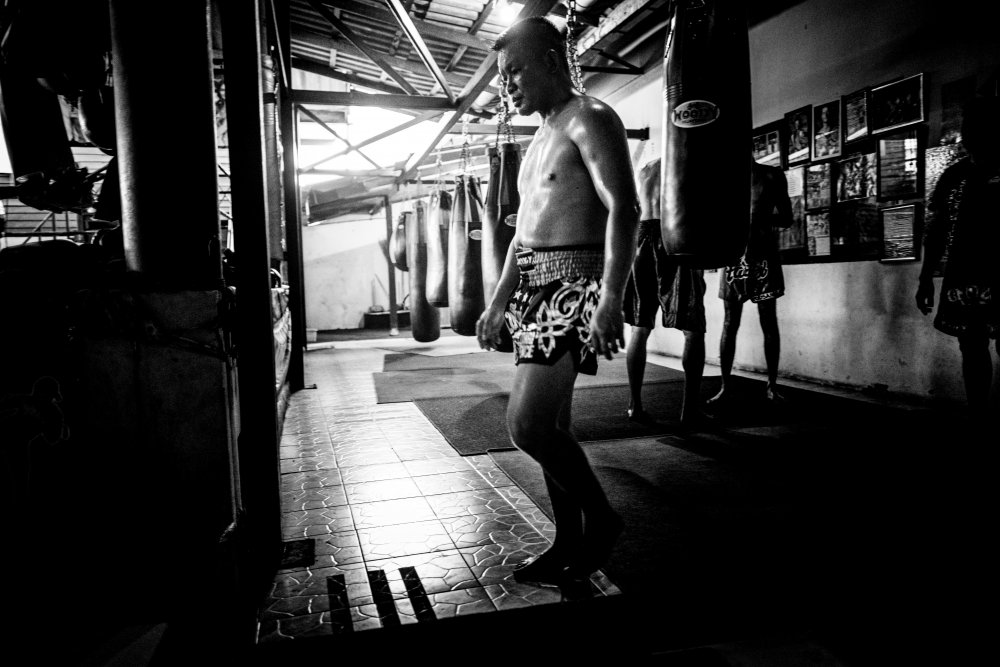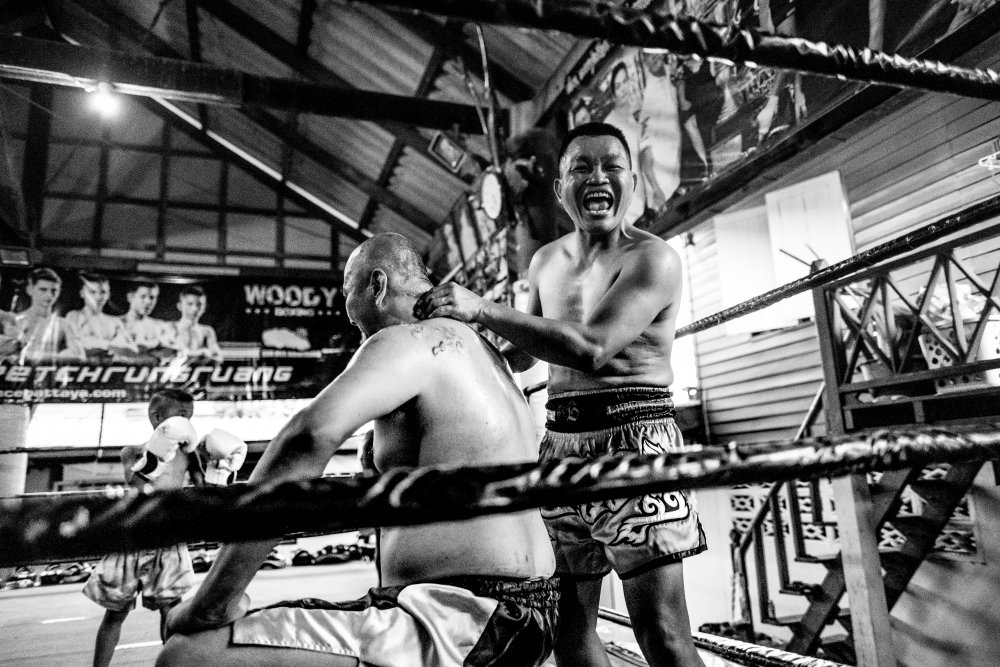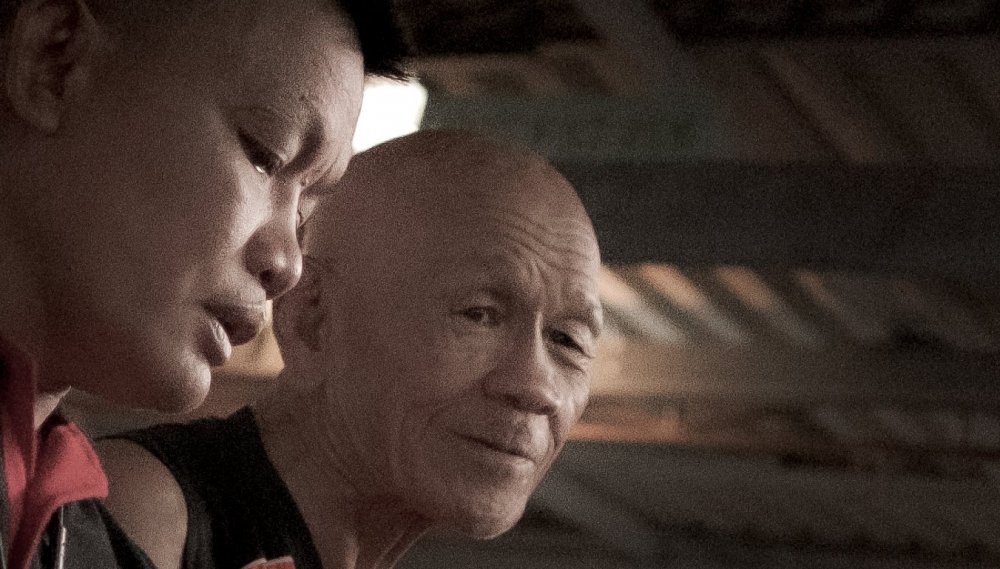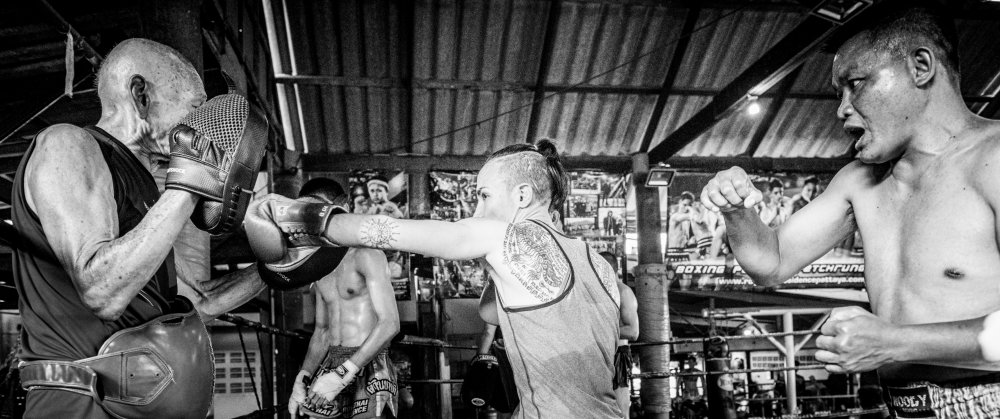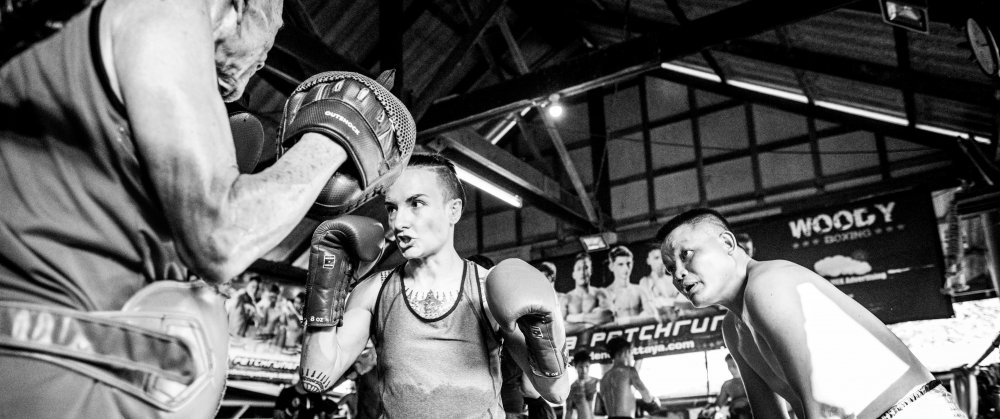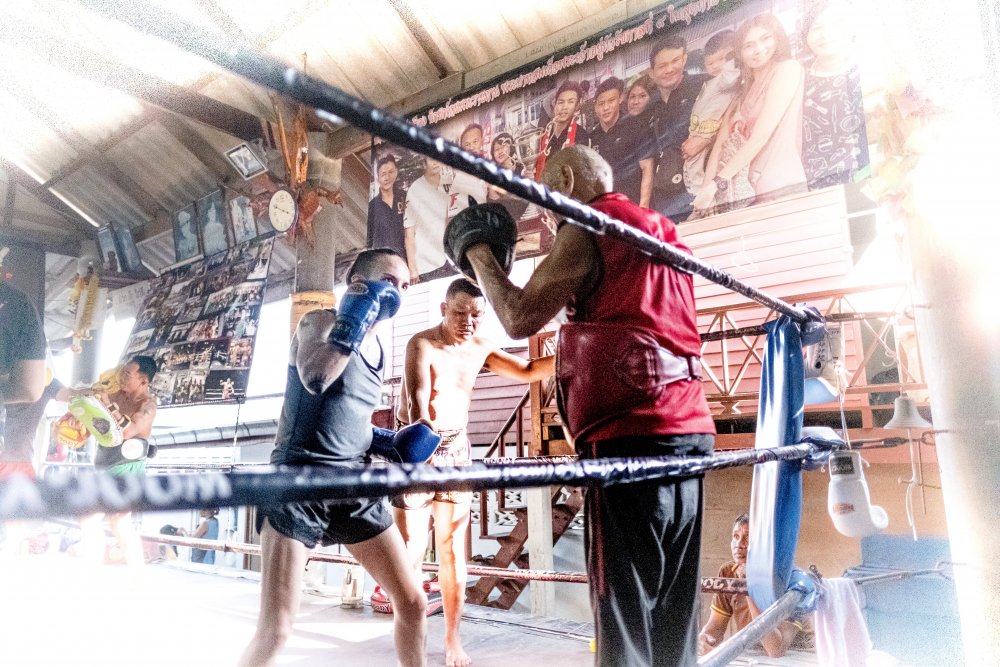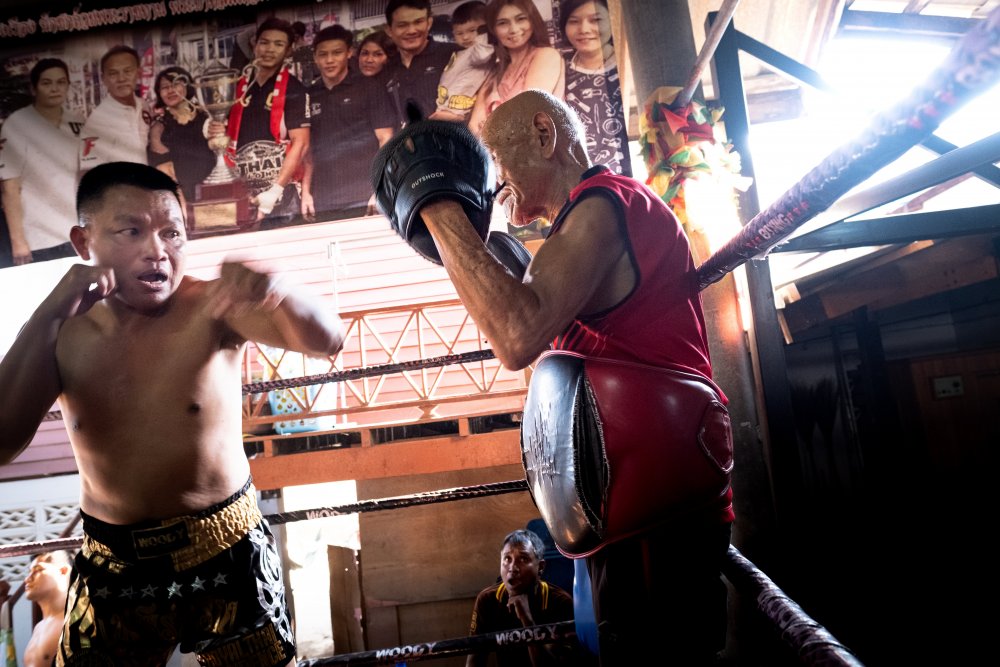-
Posts
2,264 -
Joined
-
Days Won
499
Everything posted by Kevin von Duuglas-Ittu
-
Boonlai vs Somrak (1991). This is just an incredible fight, and I wonder what the story is behind it. Somrak who would gain world fame for winning Olympic Gold in Boxing for Thailand in 1996, is fighting the great Boonlai, known for his kicking, and very nice hands, seemingly does so refusing to punch. Somrak is about a year away from representing Thailand in the 1992 Olympic games in boxing at this point, but in the footage we have of this fight he almost completely takes his hands away. Before the 5th round I count only a soft 1-2 setting up a kick, a defensive 2 crosses when his kick is caught, and another pair of punches. One definitely get the strong sense he simply is taking his hands off-line. Then, with a huge lead in the 5th he just jabs repeatedly in retreat, as if saying: I could have just beat you with my jab if I had wanted to. Instead we get a gorgeous display of checks, teeps, counterkicks and open-side knees. Maybe something personal? Maybe a statement fight to the community, but Boonlai was no joke of an opponent. You see a fighter like Saenchai toying with very underskilled westerners, and people are wowed, this is Boonlai. It should be said that the fight was at 126, which was maybe a weight class up for Boonlai (he was 122 lb Lumpinee champion), which maybe adds a little more to Somrak's confidence in space, but it still is an amazing fight to watch. Somrak skating around the ring with an elite opponent. You also get a primary lesson in how backwards, non-aggressive fighting in Thailand's Muay Thai can lead to performances of supreme dominance. In thinking about fights, we have to think about opponents. If you're not familiar with Boonlai, a nice edit of Boonlai toying with opponents:
-
Its cool to argue - or even better, discuss - these kinds of lists, because it causes us to put things into larger context. But we have to really keep in mind that we are just more or less just making things up as westerners. Even Samart, who is widely embraced by westerners as the GOAT has very few fights on video to watch.. There are fights with yodmuay never even seen, and then rematches with the same, also unseen. These are histories that are more or less profoundly lost, even for the most embraced of fighters, let alone those that have nothing preserved on YouTube or by oral memory. Even the sudden rediscovery of the tape of Samart vs Dieselnoi in 1982 recasts the discussion in a very different light, and that is just one fight of 100s if not 1000s, otherwise unseen. That being said, a pretty cool list in that it captures great fighters across generations (though it might have been awesome to see Suk "The Giant Ghost" in there, though none of us have seen him fight). The dude terrified opponents for 4 decades by most reports. And Dieselnoi's vote for the GOAT Wichannoi does not make the list, though Apidej at #3 maybe is the strong nod to the era. Other quibbles would be that Somrak is ahead of his JockGym mate Saenchai, likely for his success in Olympic Boxing, which seems pretty strange. Somrak, what a fighter, but it's really unclear how great in that his opportunities were curtailed. I will say that it is really cool to see Wangchannoi so high up. He feels like a fighter who is a fighter's fighter.
-
https://pepperrr.net/th/articles/3049 It's great to see a top 10 list in Thai and not English. There is the slight issue that #2 beat #1 pretty definitively, now that we have the video it makes the victory less abstract. You can see the just impact of Dieselnoi's unrelenting force and technique on the fighter everyone holds as the King of smooth.
-
Just a thread of fights I love, as I run into them. I watched this first one last night and it just stayed in my memory, almost as a haunting. Hippy fought everyone, and he fought up a ton. As good a fighter as there ever was, but just too small to make the huge impact others have. In this fight you can see it all play out. He's just too small. He doesn't have the power to really effect his larger, super boss opponent Jaroensap. I love his valiant fight here. watch the fight here
-
You say it right, you "catch" the kick, which means you pick a spot on the shin you want to catch it with, and you meet it up, like you are using a glove and catching a ball. As to how high you bring it up depends on how high the kick is. I'm not super experienced with this myself, but I did start doing it in padwork when I had a banged up shin, and the train was fond of whacking me back with a kick. I just started catching the kick just below the kneecap, or even with the point of the knee, gently. For me, I'd fold the leg a bit to give the knee support. It is very hard when bent. There are some really good things about it. The first is that you are practicing accuracy. People don't think of blocks needing accuracy, but they do. It's usually just "Get your block up!", but all the greats were super accurate with their checks. They aren't using the whole shin. Trying to catch it in a specific part of the shin is super productive, and will give you confidence in your checks over time. As to hurting your partner, well, they are hurting you. Not intentionally, but yeah, it's hurting you. The whole point of sparring without shin guards, or the whole benefit, is that it teaches you control and feeling. If you are catching kicks up on the thick high part of your shin, or catching with the point (a little), they just have to pull their kicks, gain control. It's sparring, not whacking. You don't have to spear them with the knee, just catch it. I'm not even saying you could/should do this. But there are some good ideas why it might make sense in your situation. And it could be fun. In terms of Muay Thai you don't want to be catching kicks all day, in the long term.
- 30 replies
-
- 3
-

-
- training
- shinguards
-
(and 1 more)
Tagged with:
-
You can use it as an occasion to maybe become more accurate with the block, and try and catch the kicks up at the top of the shin where the bone is thicker, below the knee, or even bending the leg and catching it with the knee point. This is basically the Low Kick Destroyer (catching low kicks on the knee point). It might be worth experimenting with, just to avoid catching all kicks.
- 30 replies
-
- 1
-

-
- training
- shinguards
-
(and 1 more)
Tagged with:
-
This is an awesome little book we found today, a guide put out the the Sports Authority of Thailand, which had Sylvie's gym Petchrungruang in it. There are not a lot of places where this kind of information can be found so we came home and just photographed the pages. You should be able to download any single page and zoom in to get the details you might be interested in. Not the best format for browsing, but it is a resource! You can find Sylvie's recommended gym list here. As a guide you might scroll through and find a gym that you hadn't thought of, or hadn't heard of before. Every gym has 4 pages devoted to it. continued below
-
A good example of this is that Cerrone has his "head in" pretty decently, in the sense that he's protecting from the elbow from the controlling arm, which in Thailand's Muay Thai would be the main concern (other than being manipulated and turned). This is a "not bad" head position, something that would not get punished. But, in this case, especially because he's grinding forward, he's exposed to the shoulder. The top of head here needs to be really tucked it, on the shoulder/collar/jaw bone, tick-in, which is a very strong Thai clinch response. But, where it is, is the "good enough" position in many Thailand fights because there is no concern for the shoulder strike.
-
I'm, personally, not interested in its use in MMA, or this fight. I think because it came out of a common Thai clinch position it maybe exposes a few holes in the position, specifically in Thailand's Muay Thai (the ruleset and fighting style in the country, which is what I'm most familiar with). I'm not really openly asking anything though. I'm just thinking through the position, from a traditional Muay Thai perspective. There are always blindspots in fighting styles and customs, this seems like one of them, in a very narrow sense. Imagining this position with more optimal postures on the Cerrone side, it would be much harder to execute, but it is interesting to think through it's possible uses, even if more well-defended. This is complicated though by how it might be reffed or perceived within the traditional Thai ring.
-
Cool to look at. Two useless arms. Conor has a basic Thai clinch position. Arm loop + inside frame. Cerrone exerts no control or pressure over either arm, especially on the shoulder strike side. This lazy over position on the frame drives me crazy. Happens all the time. What's beautiful about this is how Conor is giving ground, which really sets it all up. Backwards movement in clinch is key to so many dominant movements. watch the slow motion of the strikes here: https://web.facebook.com/watch/?v=2852823818097683 This is a pretty fascinating strike in that it's set up by a general grinding forward, and the lack of pressure or control, but also because it develops from a very common position in Muay Thai, so much so it would be pretty easy to get lazy about it. No Thai would just grind forward like that in the clinch, which is a pretty big factor here, but they very well might not dig their head in deep enough, like Cerrone, to control the shoulder and collar bone, or not snake in hard enough from the top arm position. Because Thais clinch train in very lengthy sessions habits and position assumptions do develop - and I find these unconscious shapes pretty interesting. Though shoulder strikes are perfectly legal in Thailand's Muay Thai, they really are almost never seen, likely due to evolving aesthetics, and maybe a sense of sportsmanship. In short, this is a kind of a "hole" in the form of Thai clinch, I suspect. Proper technique probably closes the hole pretty firmly, but proper,. or optimized technique is not always happening, or even trained. From this position Cerrone, in Muay Thai, would be most concerned with the elbow. The shoulder isn't even thought about. It's a blindspot. Blindspots happen in fighting styles and disciplines, shaped by rulesets, cultural aesthetics, and training practices. The shoulder is actually a hidden appendage and leverage point in lots of high-level Thai clinch technique, but it's not thought of as a direct weapon. I imagine that it would likely be seen as "base", perhaps in the way that Yodkhupon's amazing high volume elbow fighting style was looked down upon, despite winning at the highest level (simultaneous stadium belts in the Golden Age). I personally find this strike really interesting because the McGregor position is a dominant one that Sylvie works herself toward and secures in lots of fights. She loops that right arm hard, and is always exploring developments from there. This is a Dieselnoi position. Most often it's considered better to control the neck with the left arm, and work towards knees and turns, but this frame up exposing the open side, pinning it open is definitely an active position. So much of this strike is dependent on Cerrone grinding forward, allowing McGregor to bounce back and load. But it does seem that the shoulder strike is a perfect fit in the vocabulary from this position, even if under neutral pressure. There is a lot to be developed here. Even as a threat (as a miss), it can get the opponent to posture up too high, and set up knees or a deep turn.
-
Our experience with Visas is that enforcements are constantly shifting, and really do vary from office to office by region. Something that is no problem for one area of Thailand, or at one consulate, can be a problem in another area. The best universal advice is to go to a Visa agency in your area. Visa agencies run vans to the border, and have the most up-to-date sensitivities on what is working, and what is not working. If you get a good agency, they have strong connections, work in volume, and may argue on your behalf when something isn't right. It costs a little extra money, but it can be worth while. That being said, this is just our experience. Agencies around Thailand might also vary.
-
That's beautiful to read, just because I can feel you just throwing yourself into it. A few photos from Samson's time in the gym to add to the color: The last of these is really beautiful. Samson is sitting with Arjan Gimyu, a legend of the Golden Age himself, but as a Trainer. They probably had not seen each other, close like this, since 1992, when Samson beat Arjan Gimyu's heavy-fisted fighter Lakhin, two times out of three, to win the Fighter of the Year Award. That no doubt was a painful result, but somehow it was beautiful to see these nemesises, now sitting together on a bench, in the gym together. In fact, they even collaborated in training together, when Arjan was holding, for Sylvie, culminating with Arjan even holding for Samson: :
- 1 reply
-
- 3
-

-
-
I was...I am...very moved by this post. This is everything I'd hope to hear and read from others, such a human story. All about our frailty, and our ache to be better, to find better, in something, in ourselves. And it is fucking incredible that for whatever reason Sylvie and her work sparked something in you, that all your gears got triggered to turn in whatever beautiful way you are turning them. Thank you for taking the time to write so realistically. It means a lot.
-
What often happens to fighters who enjoy the idea of switching stance is that their offense will improve, but their defense will suffer. A lot of this happens simply because you aren't used to seeing things reversed, so you don't pick up strikes as quickly. One piece of advice we've seen when fighting someone who switches back and forth in a fight is to just rush them when they move into their unnatural side, because their defense is probably suspect. But this isn't such a huge problem, you just have to work more on your defense than you might think. Focus on it. The biggest aid in this for Southpaws is learning the "forward check", which is a feigning left leg (rear leg) raise, that closes off the Southpaw's biggest weakness to Orthodox fighters. This is a really, really big tool. Karuhat teaches it to Sylvie in the Muay Thai Library session where he turns her from Orthodox to Southpaw. There is a whole vocabulary of the forward check that is really special, both defensively and offensively, for Muay Thai. Maybe check that video out.
-
We think that forward aggression is just the natural way to show dominance, but it's more complicated than that. Let's say we are kids, I smack you in the mouth in a fight, and then move away from you and make you miss when you lunge at me. Then I laugh, move slightly out of the way, call you a name, you lunge at me again. And then again, this time I hit you making you off balance, and laugh again. Who is dominating the scene? This is just a simple school yard fight, but you can clearly see who is "winning" the fight by dominance. The kids are all around us, laughing. This is an extreme example of how Thais see the backwards fighter looking in control in a fight. They have to keep scoring, they have to seem like they are controlling everything, but they do it by making the other fighter look desperate or out of control. It's actually much closer to "real" fighting than otherwise supposed real fighting is.
Footer title
This content can be configured within your theme settings in your ACP. You can add any HTML including images, paragraphs and lists.
Footer title
This content can be configured within your theme settings in your ACP. You can add any HTML including images, paragraphs and lists.
Footer title
This content can be configured within your theme settings in your ACP. You can add any HTML including images, paragraphs and lists.
